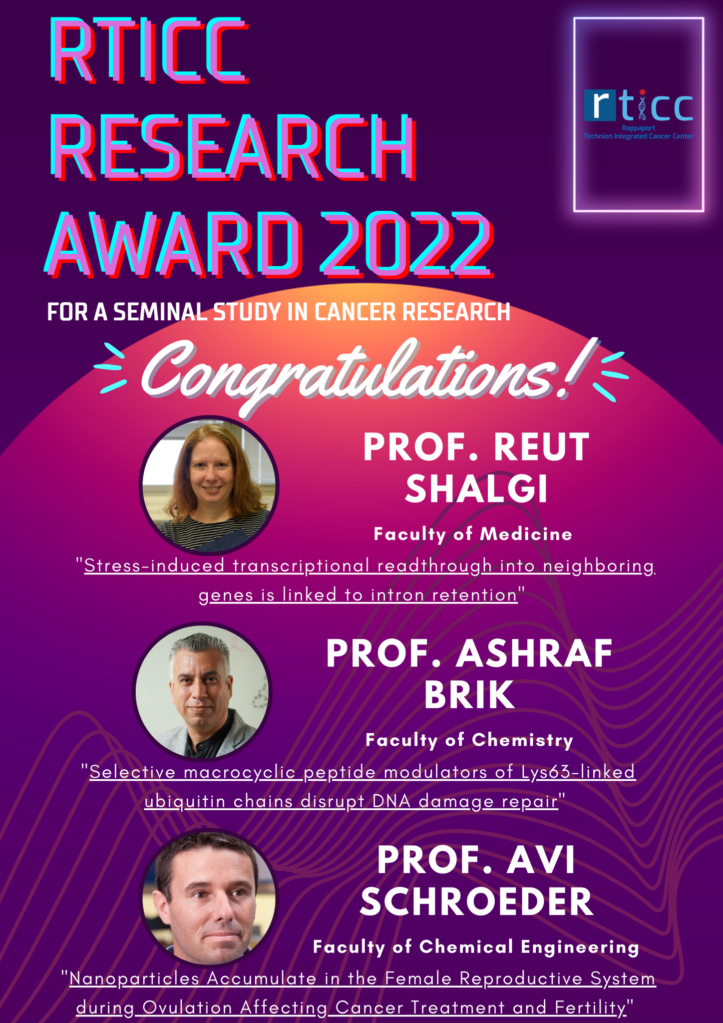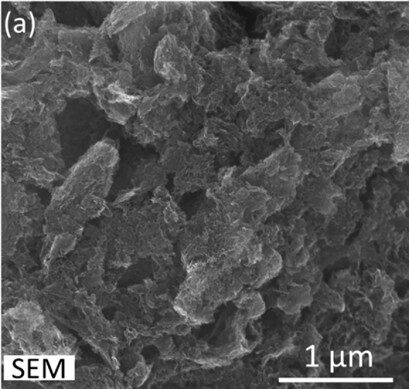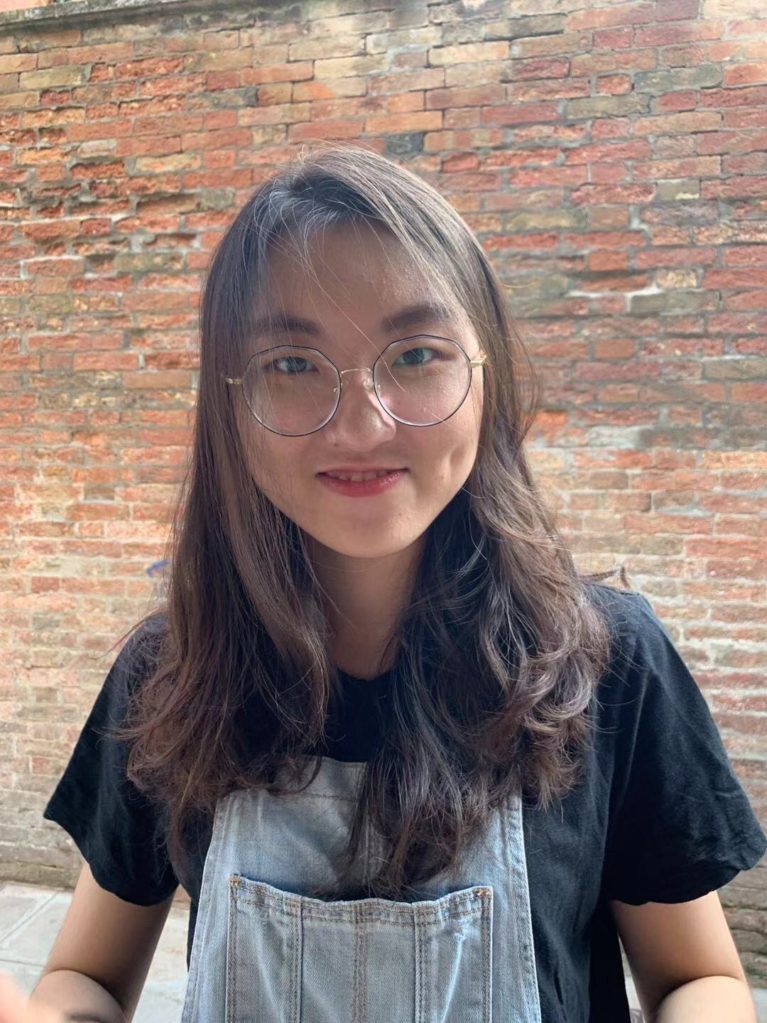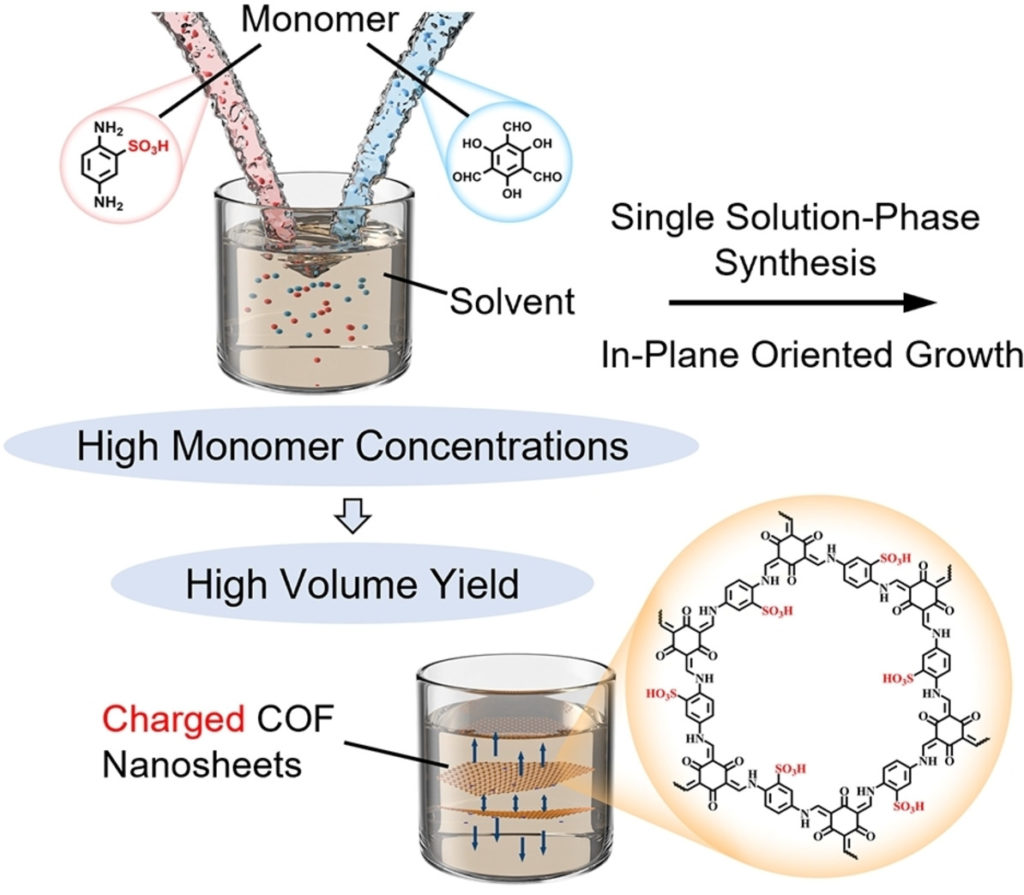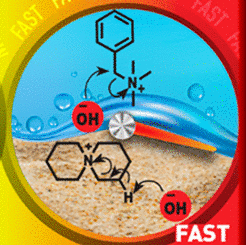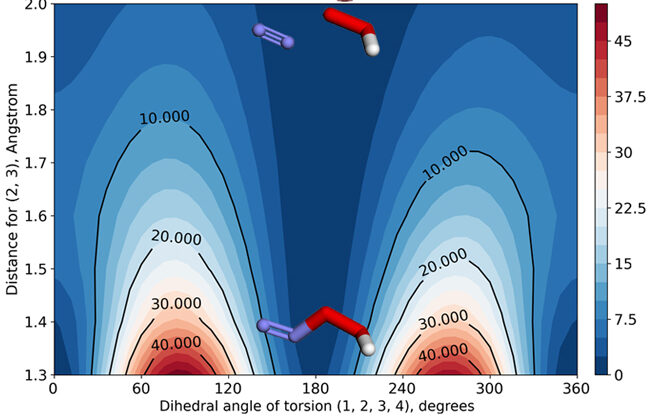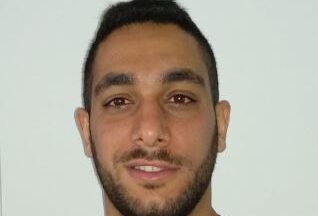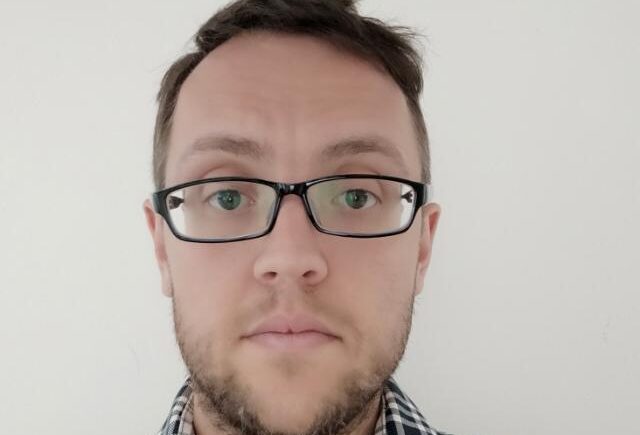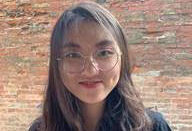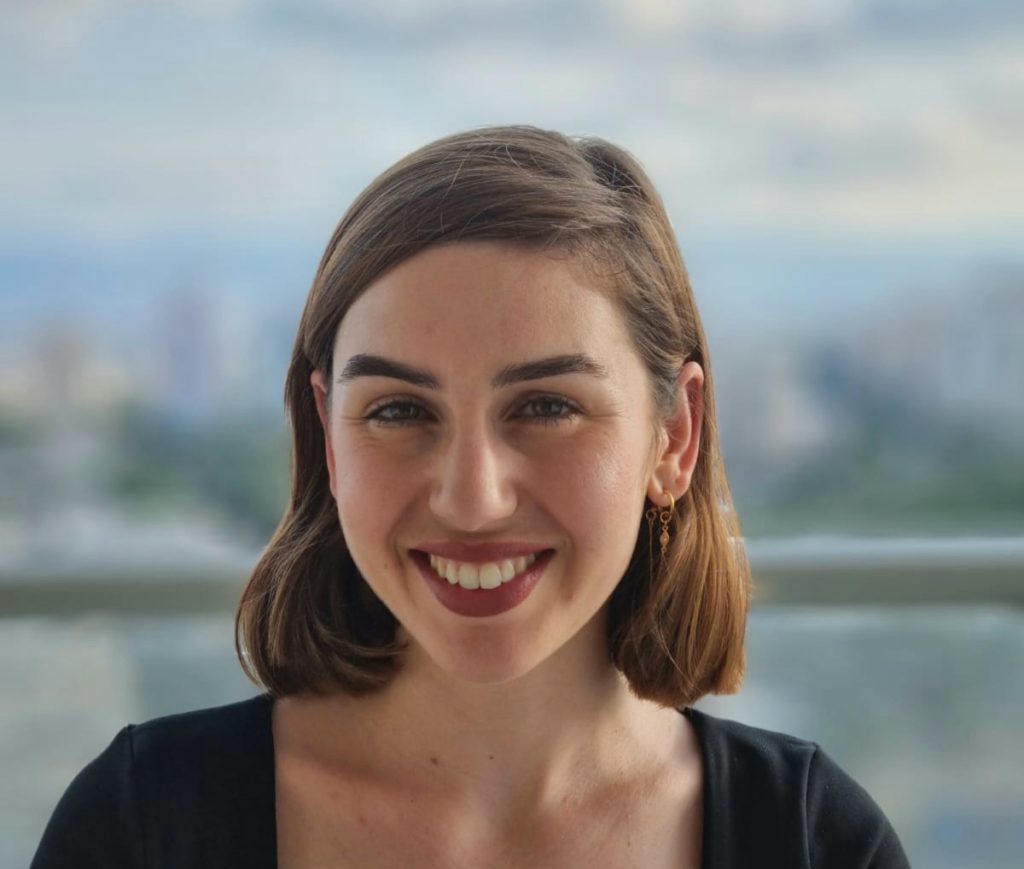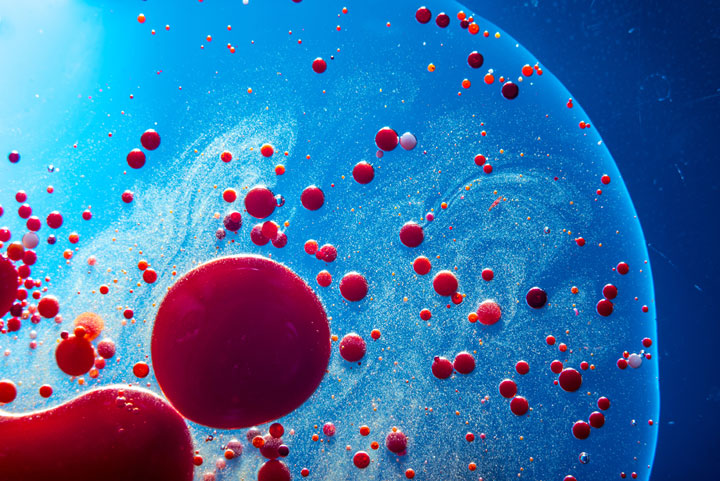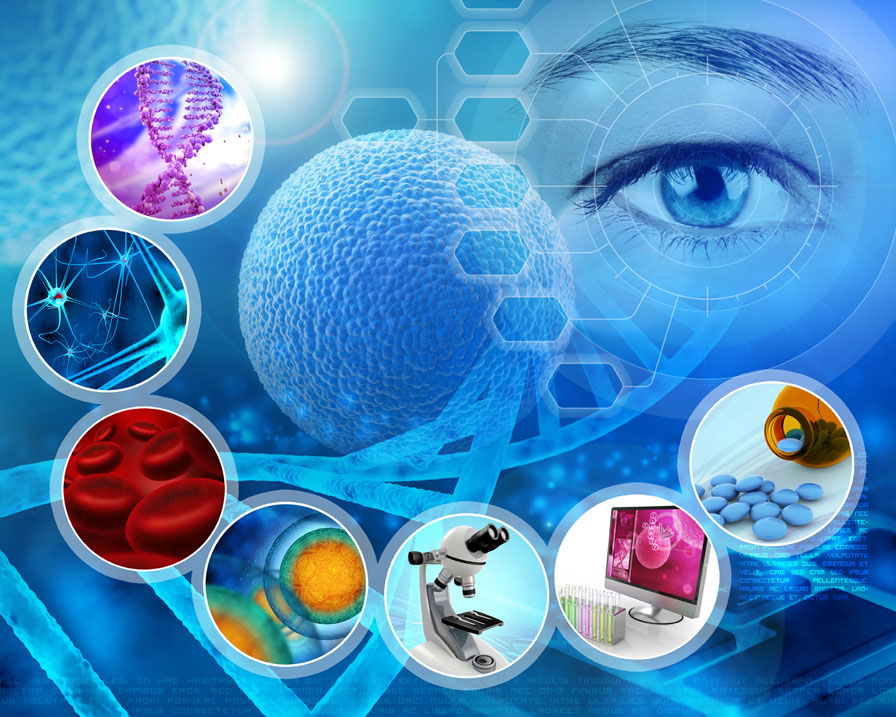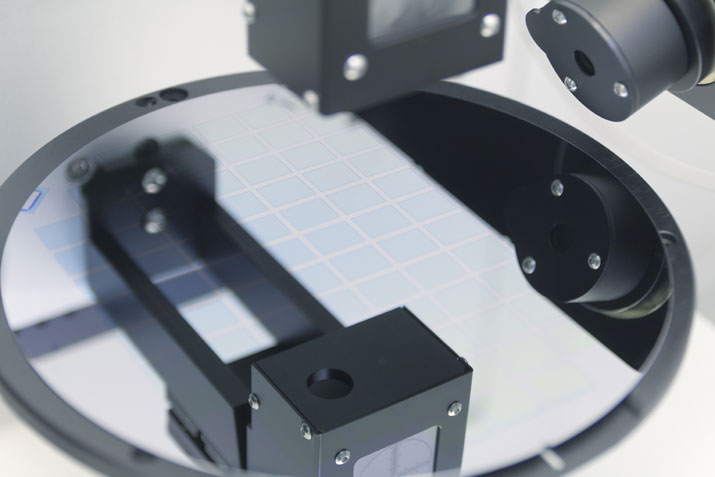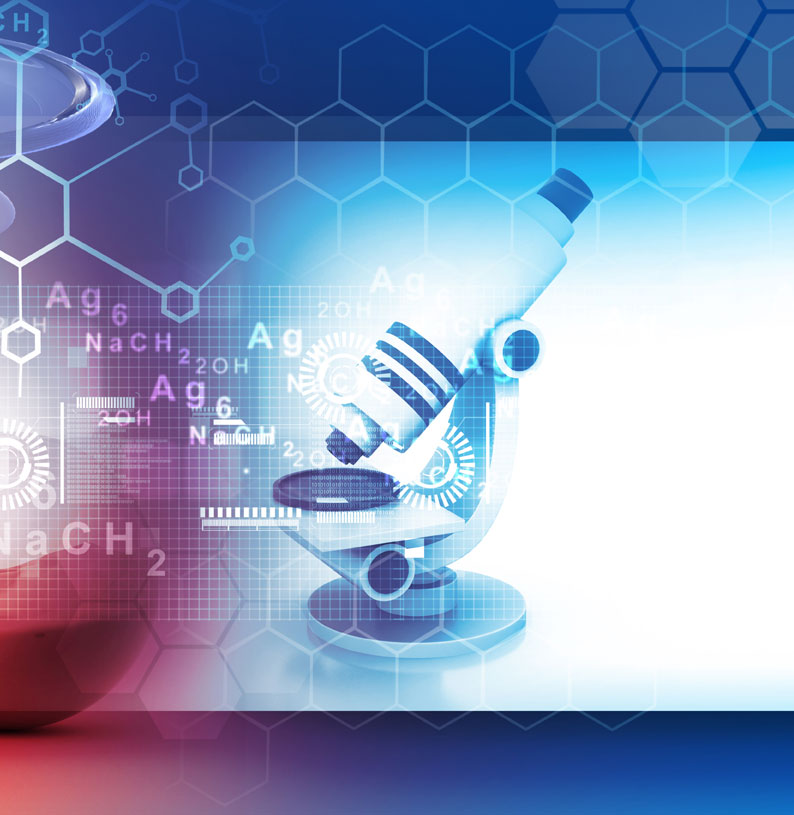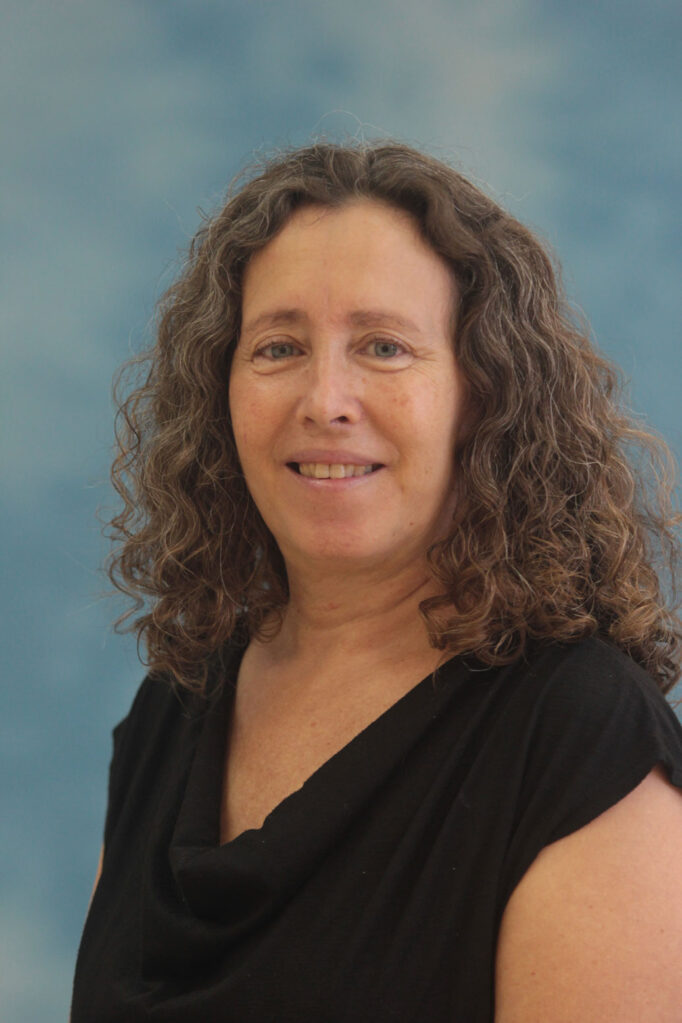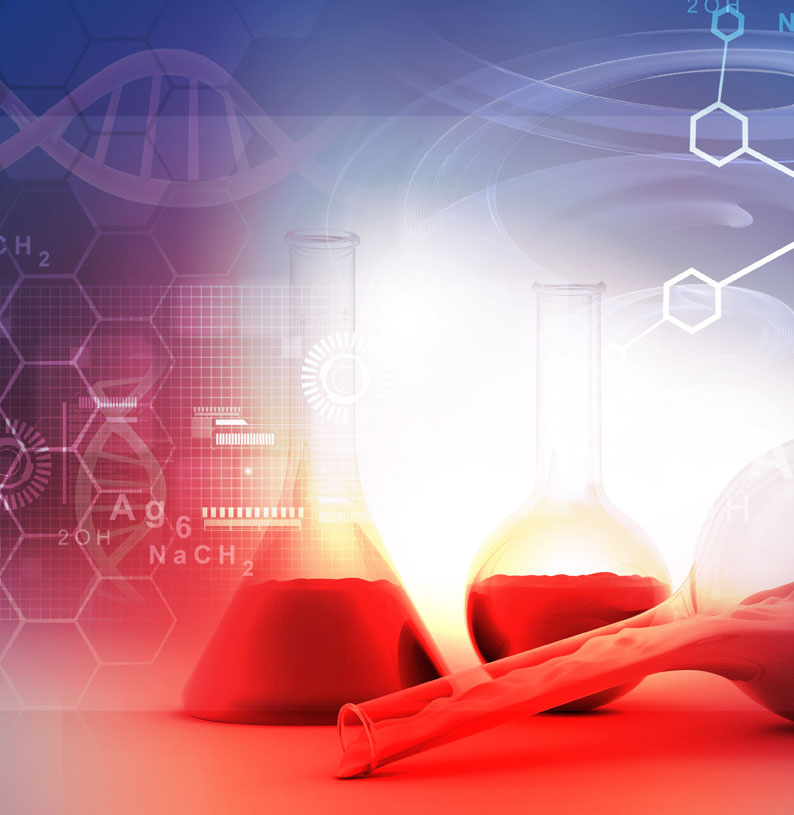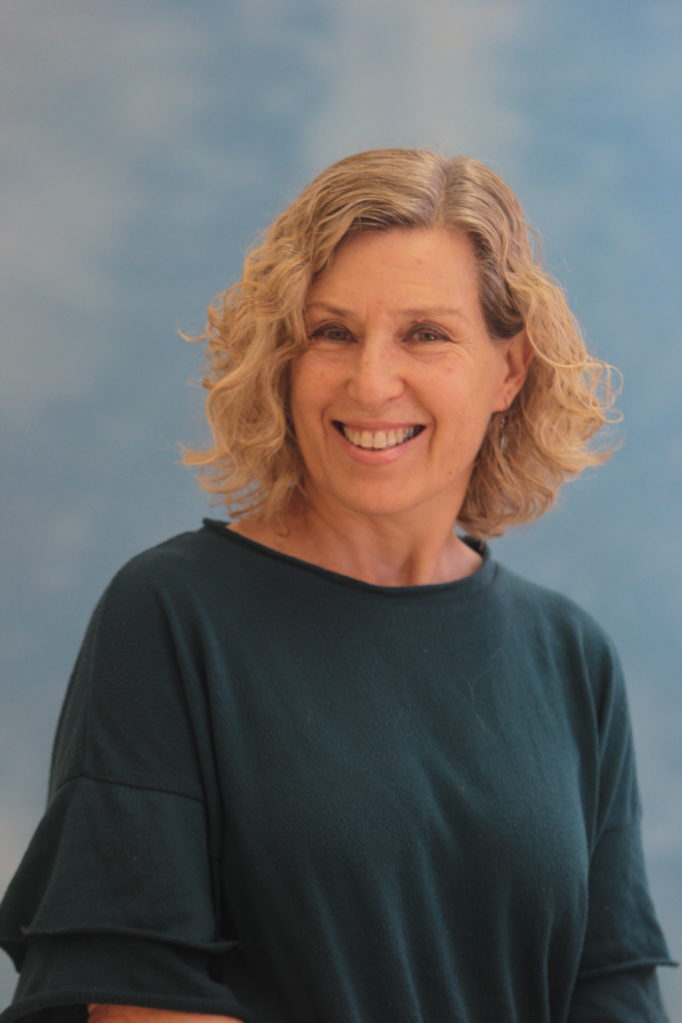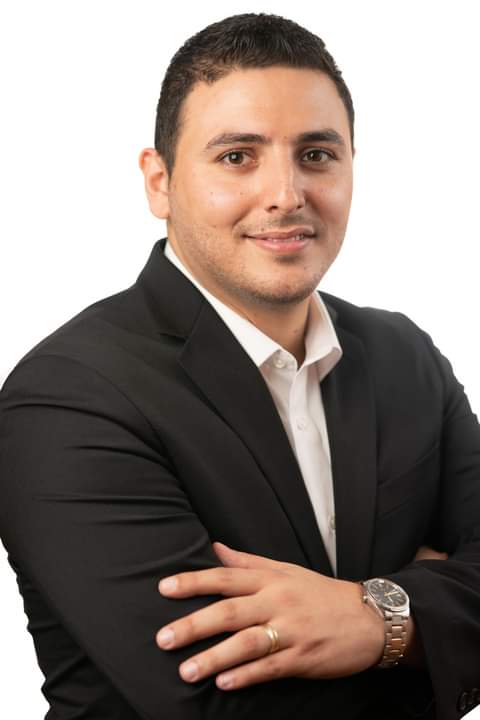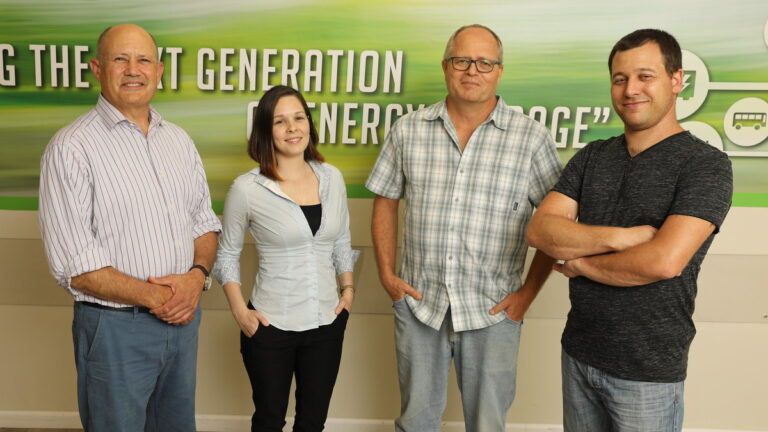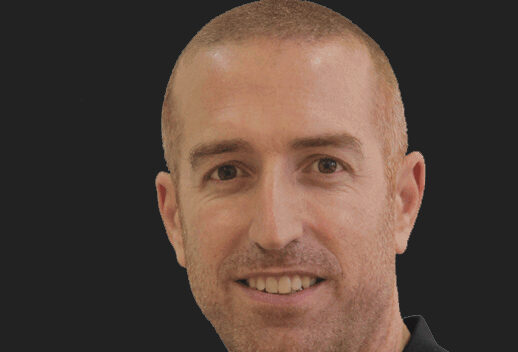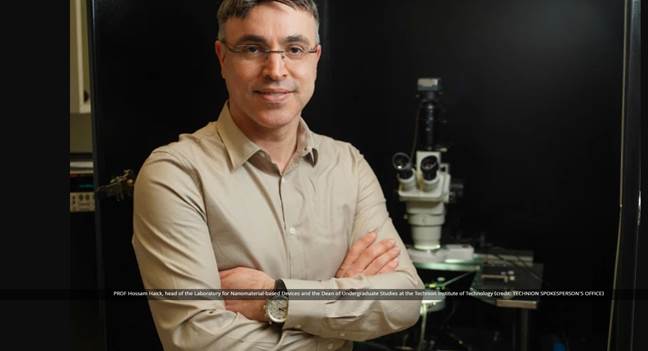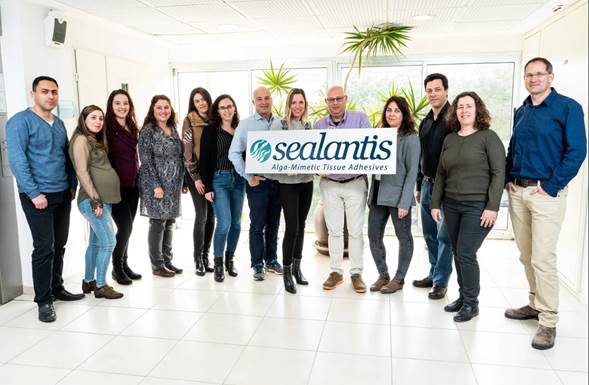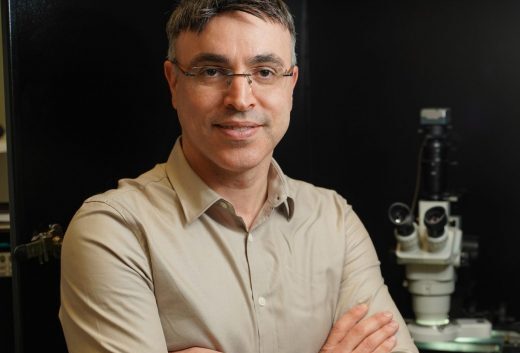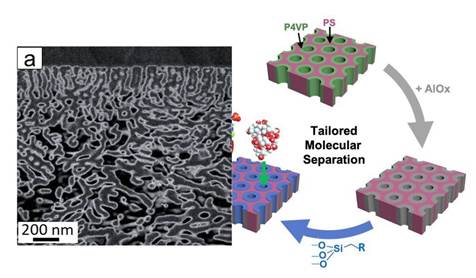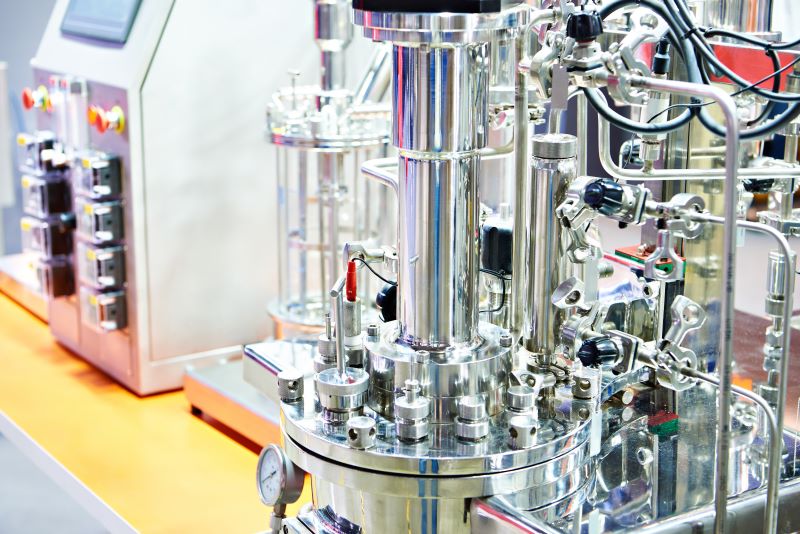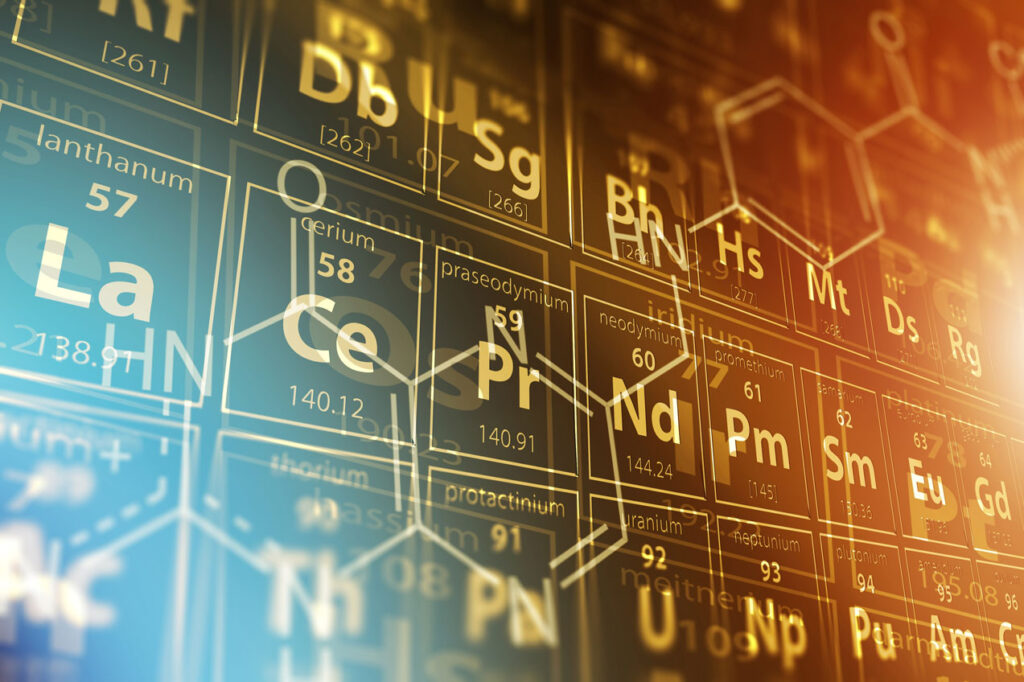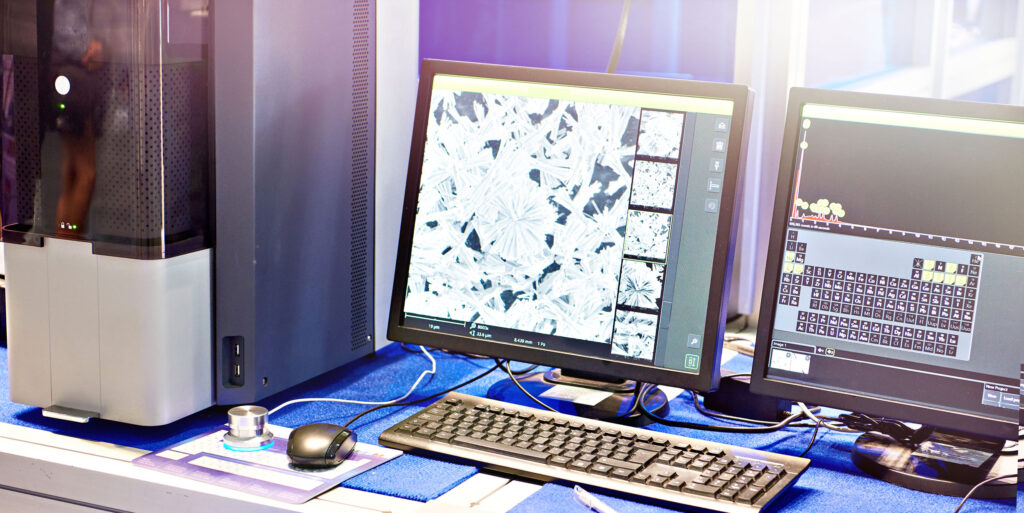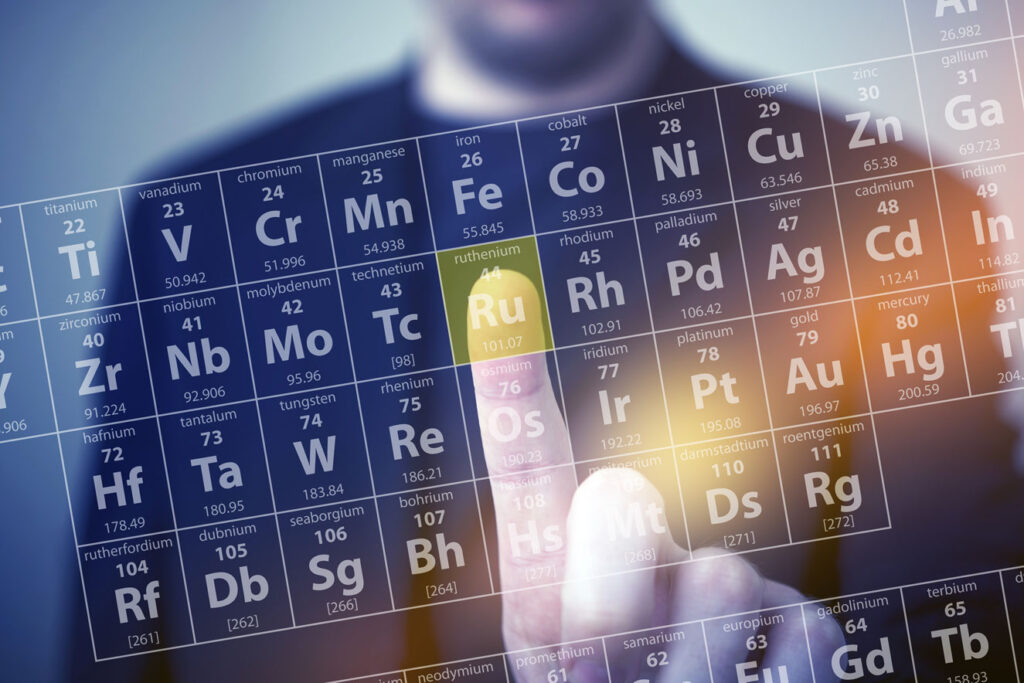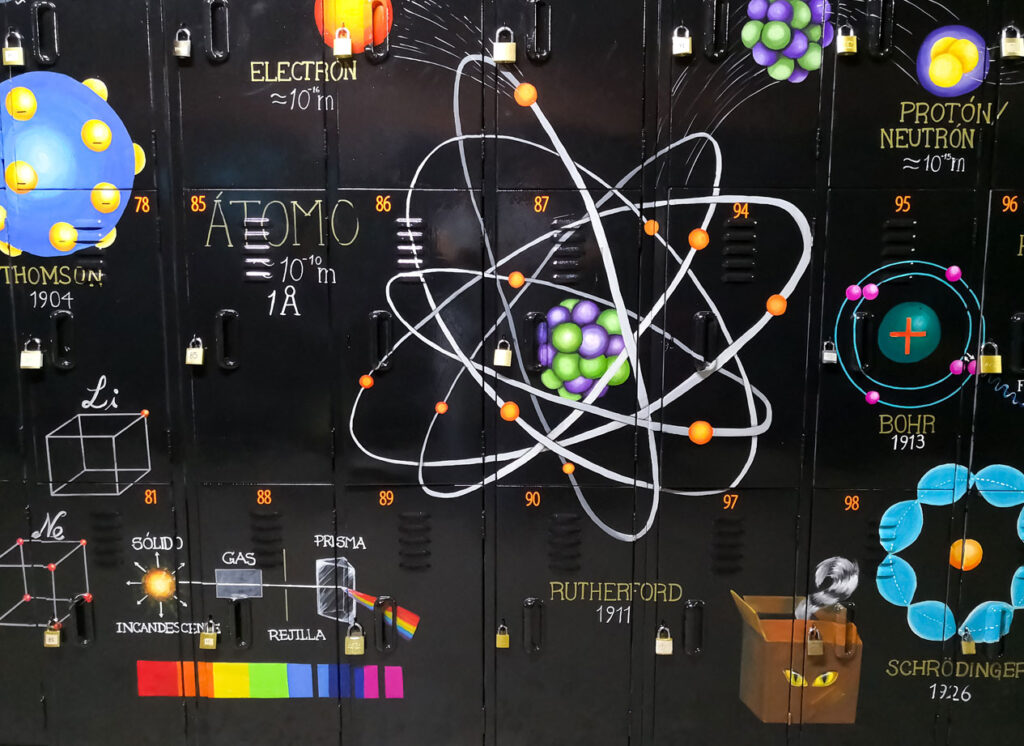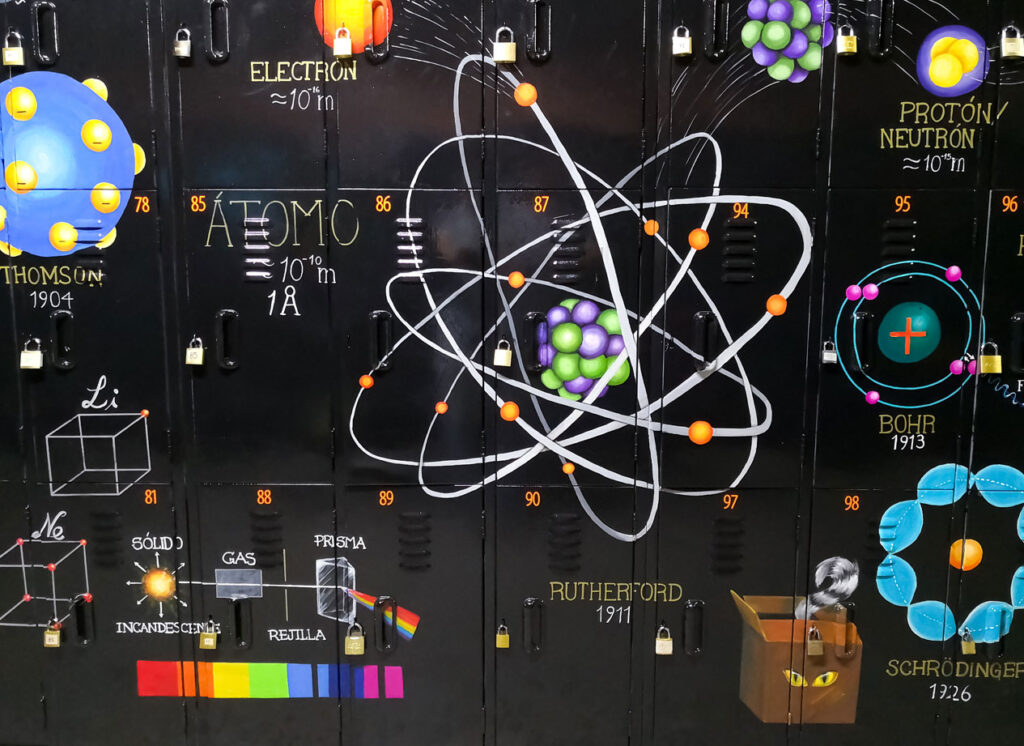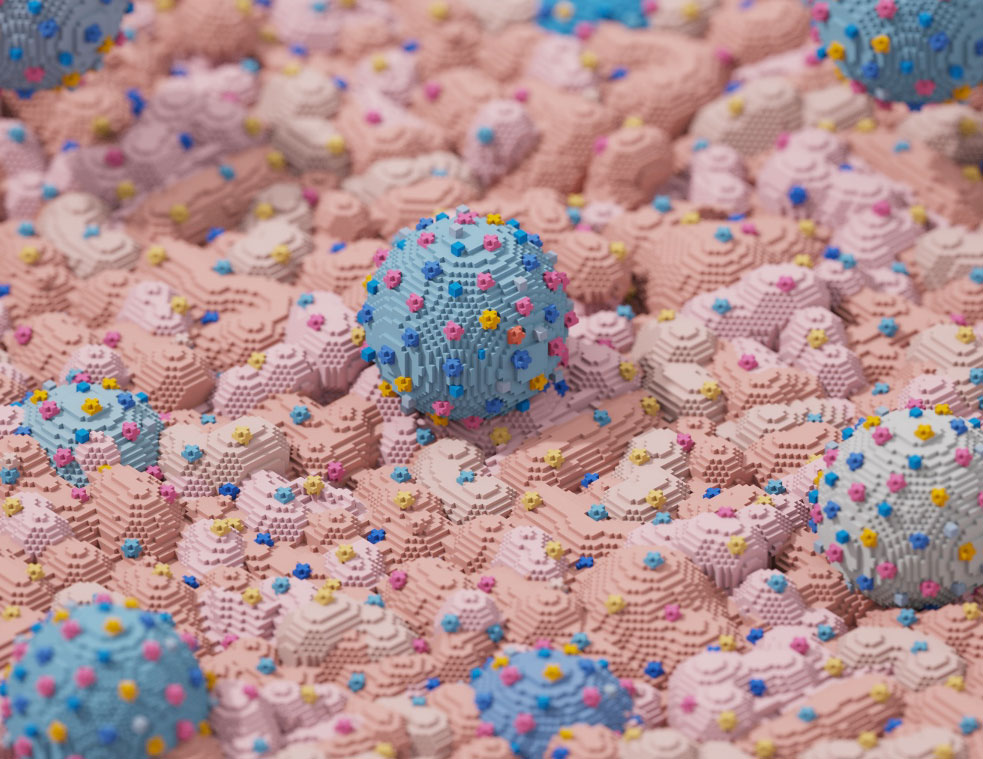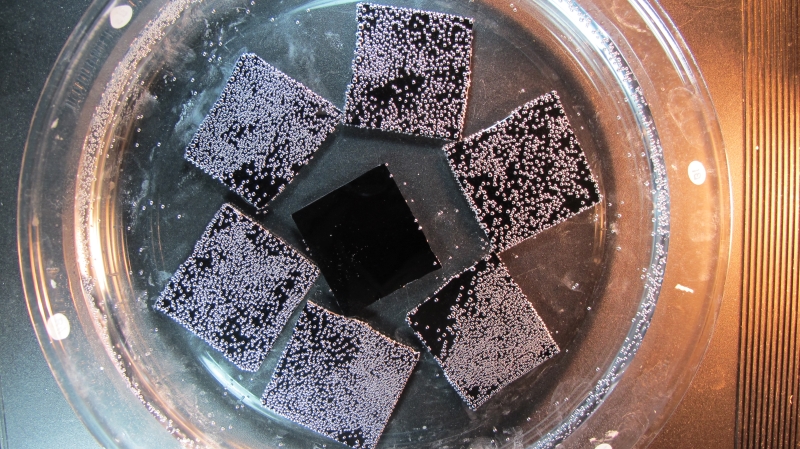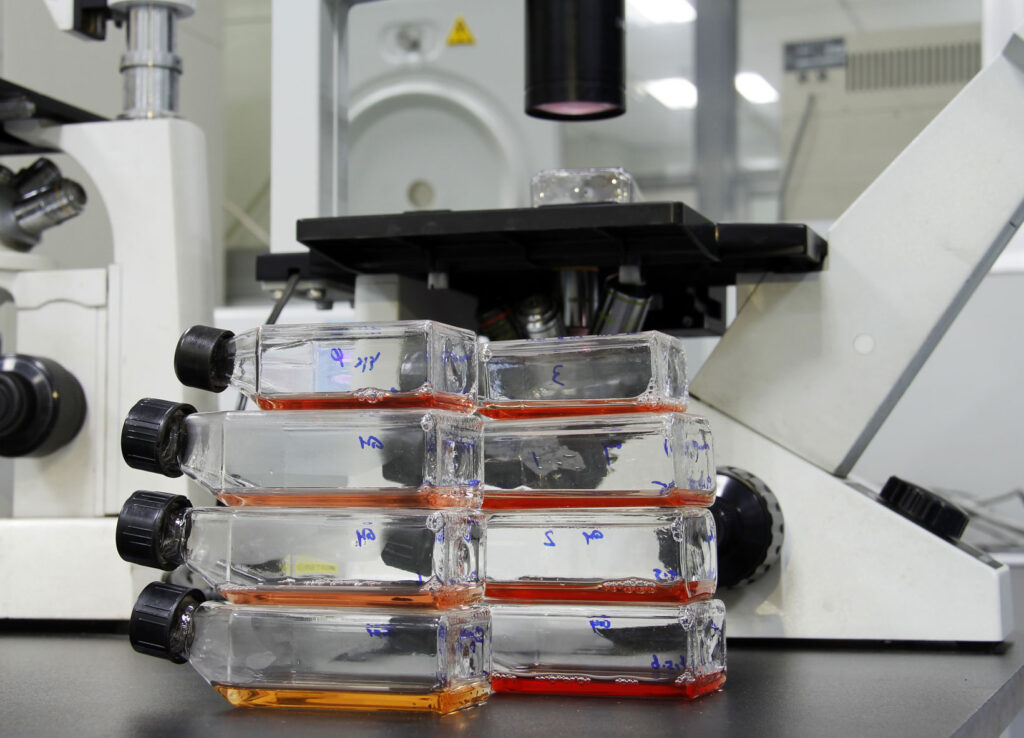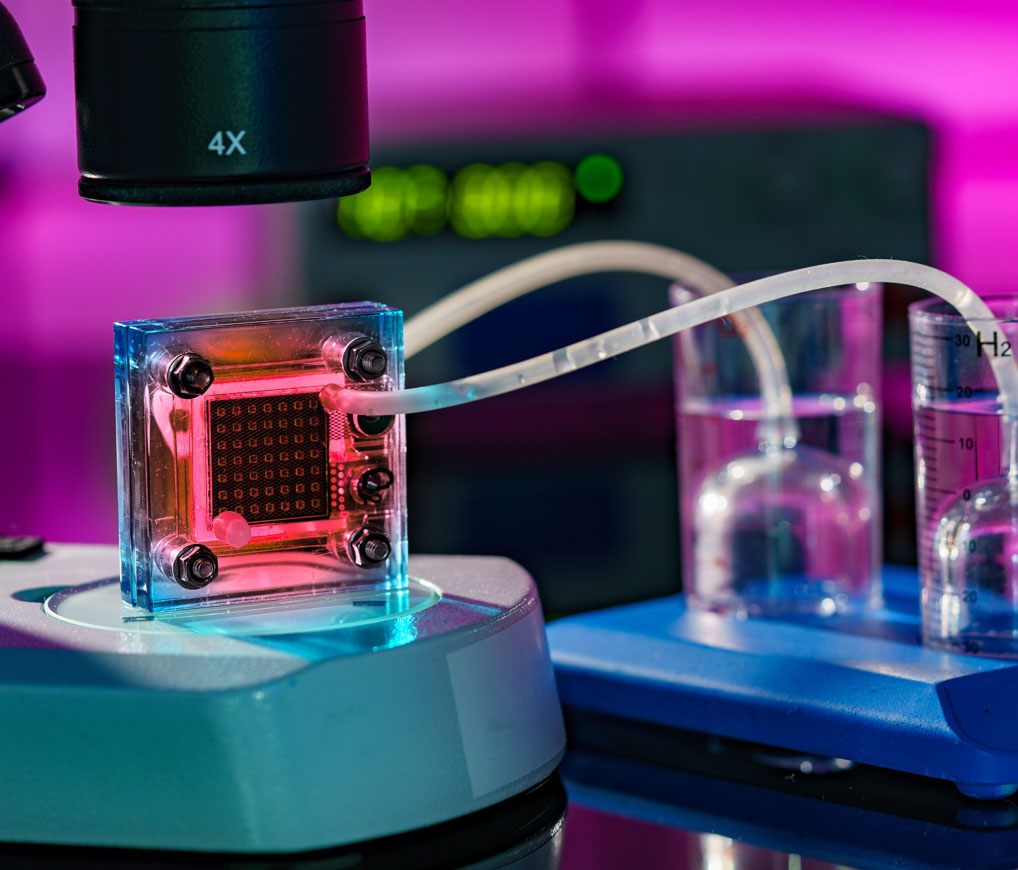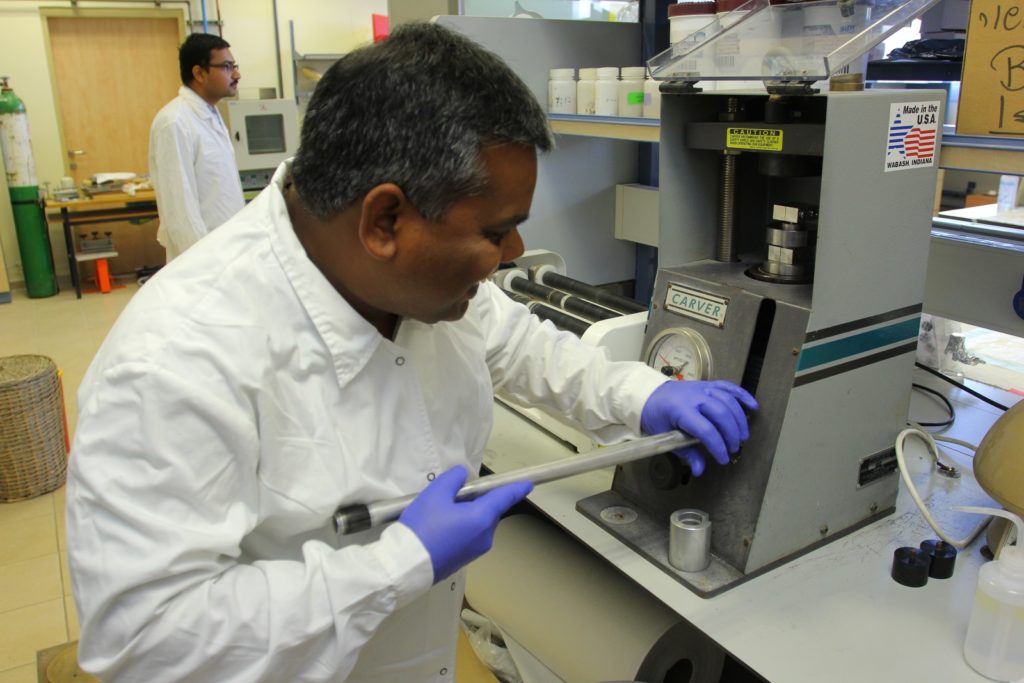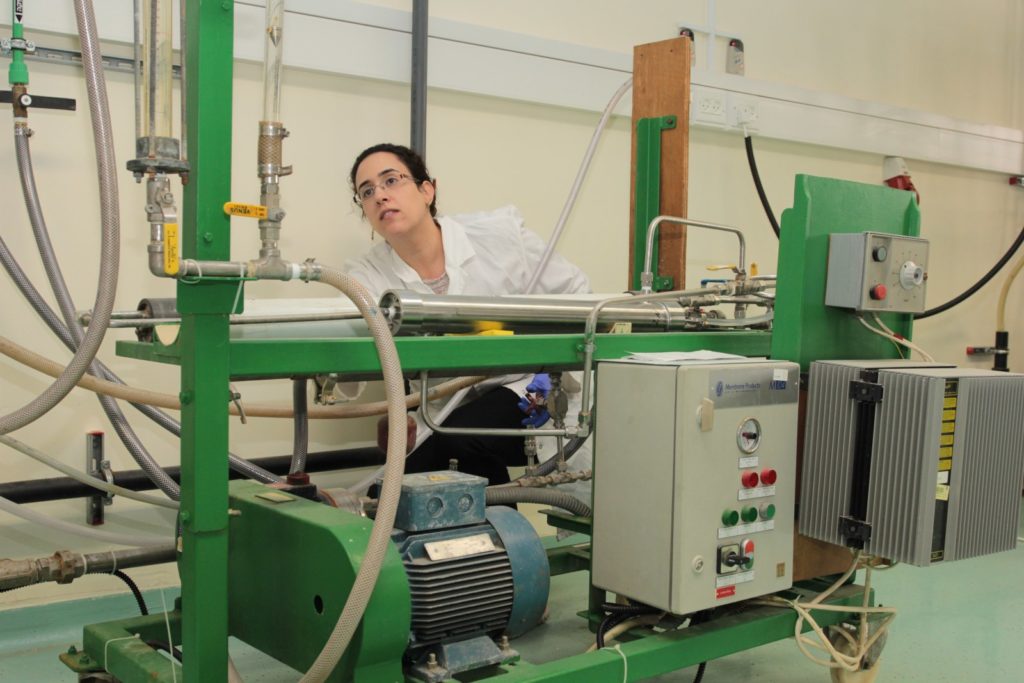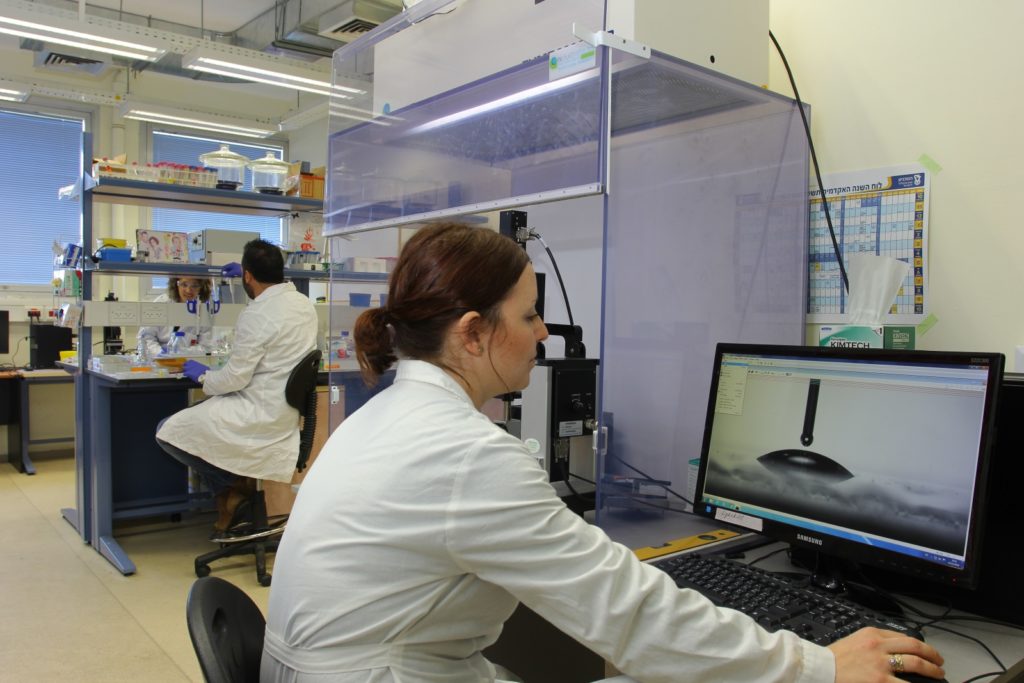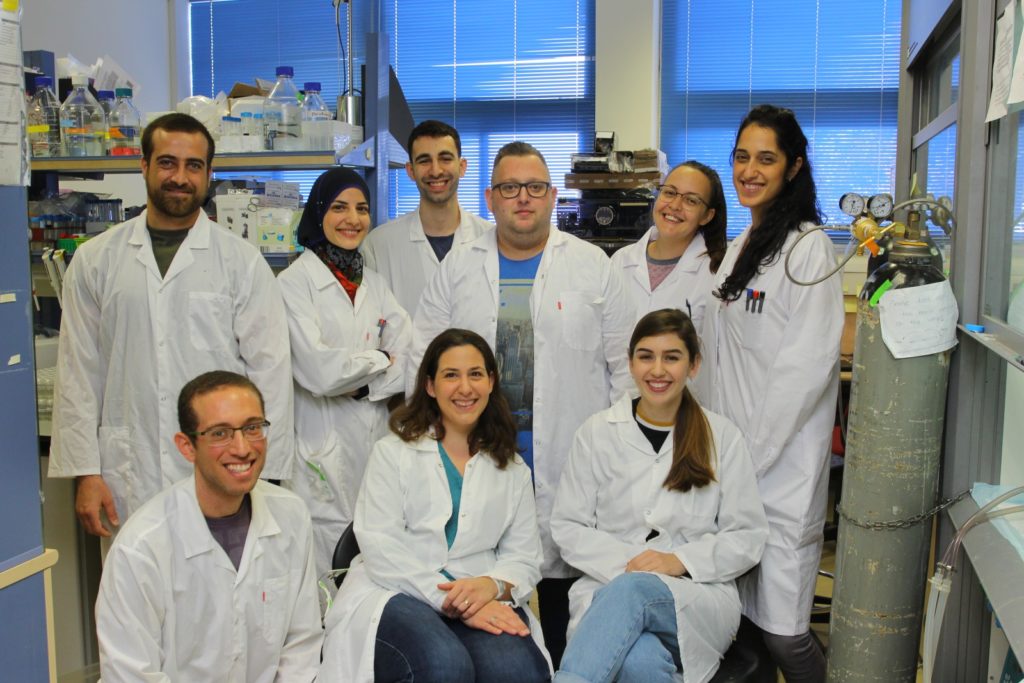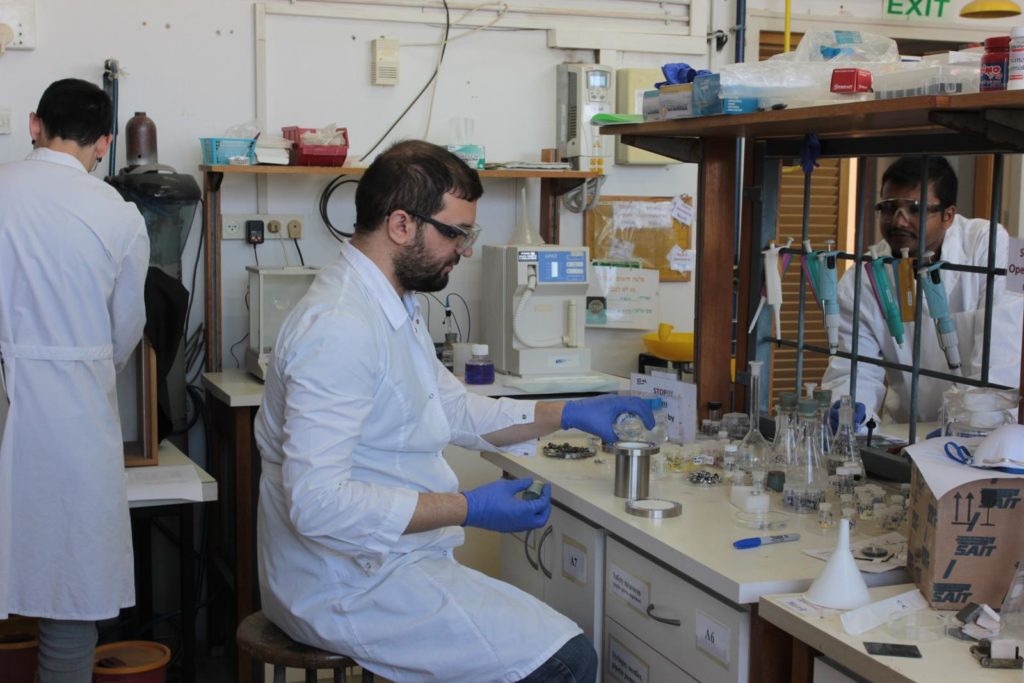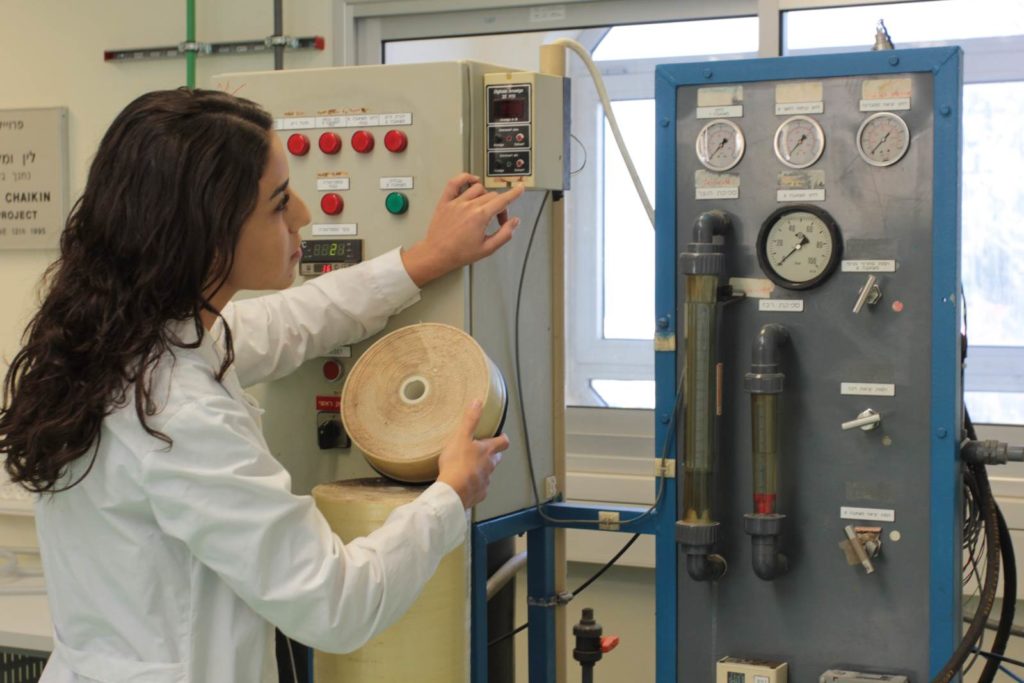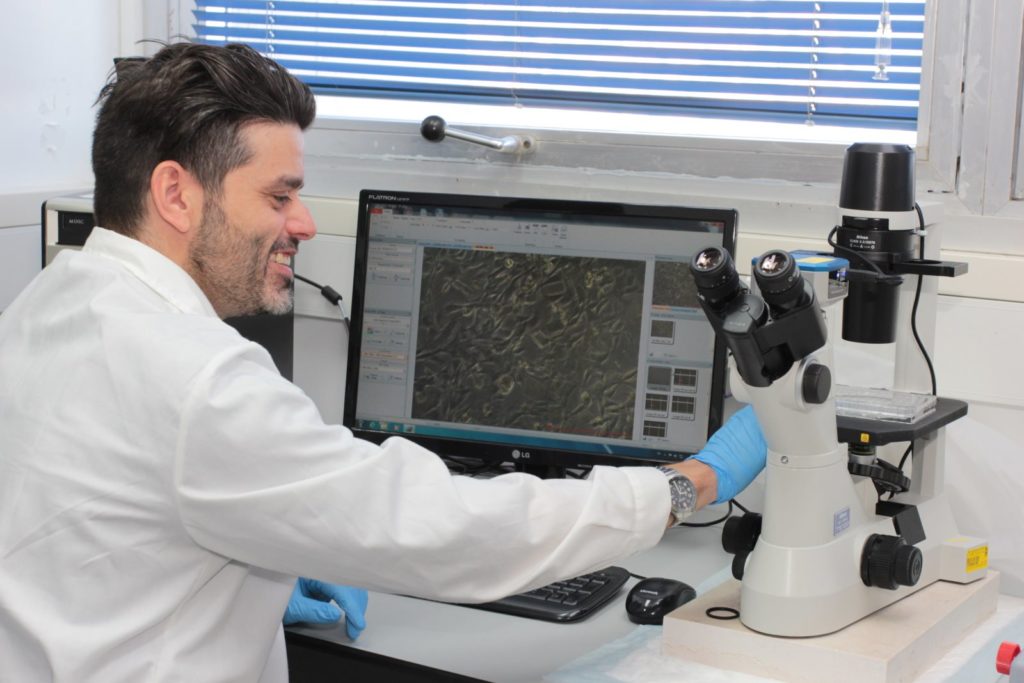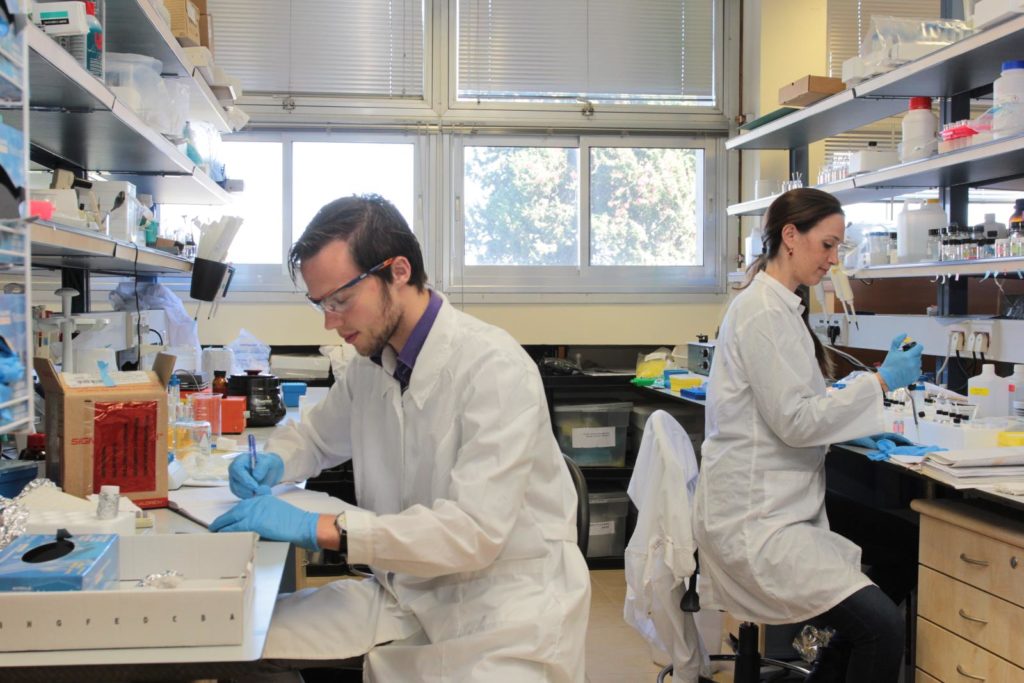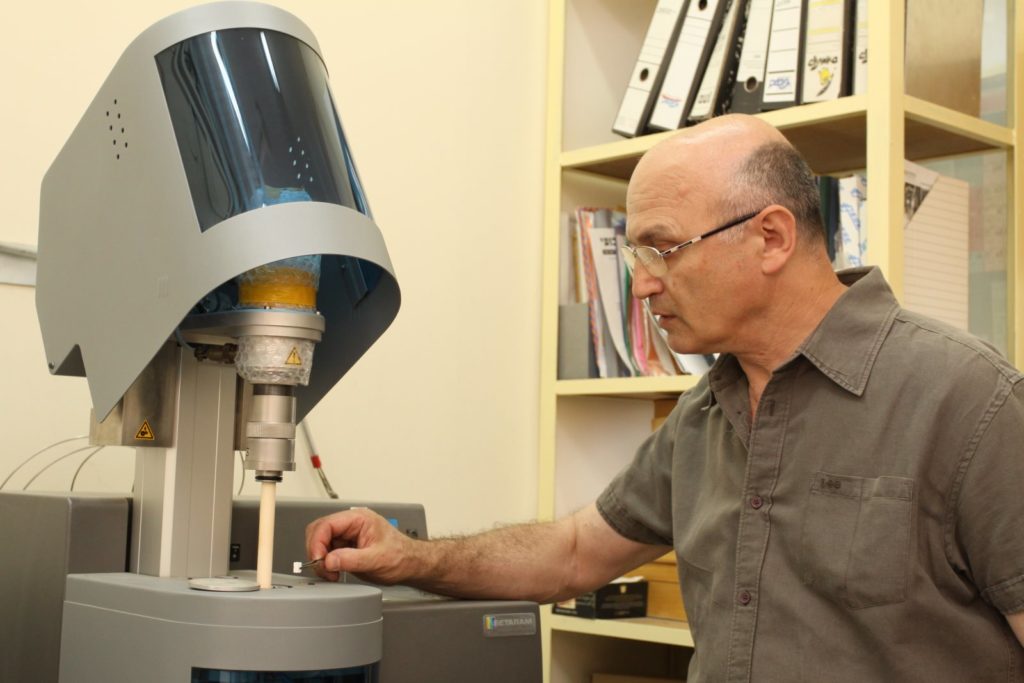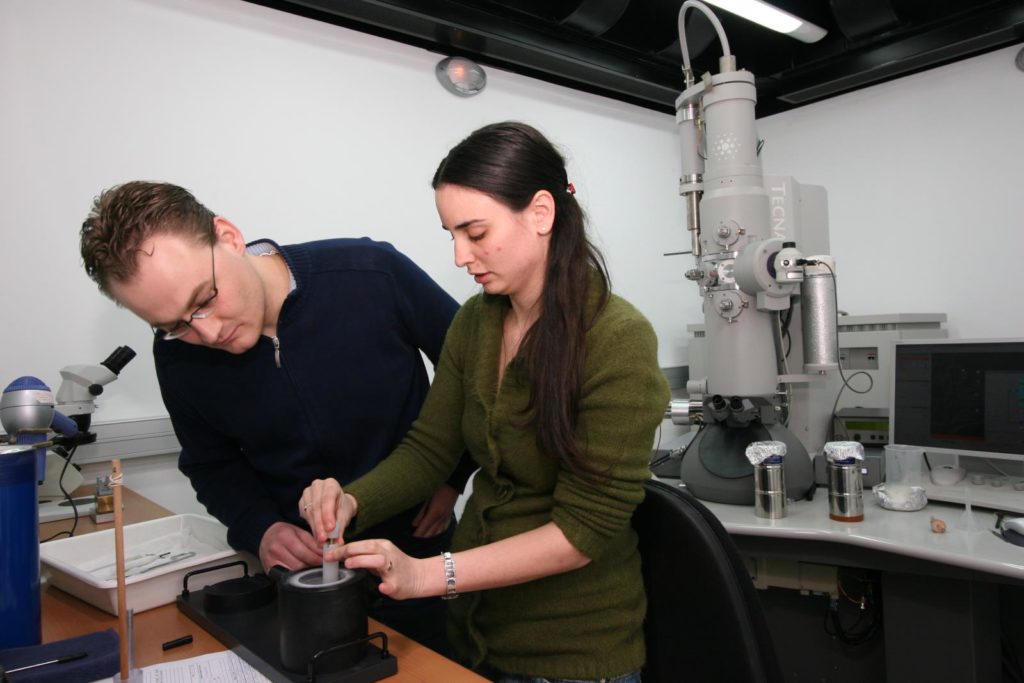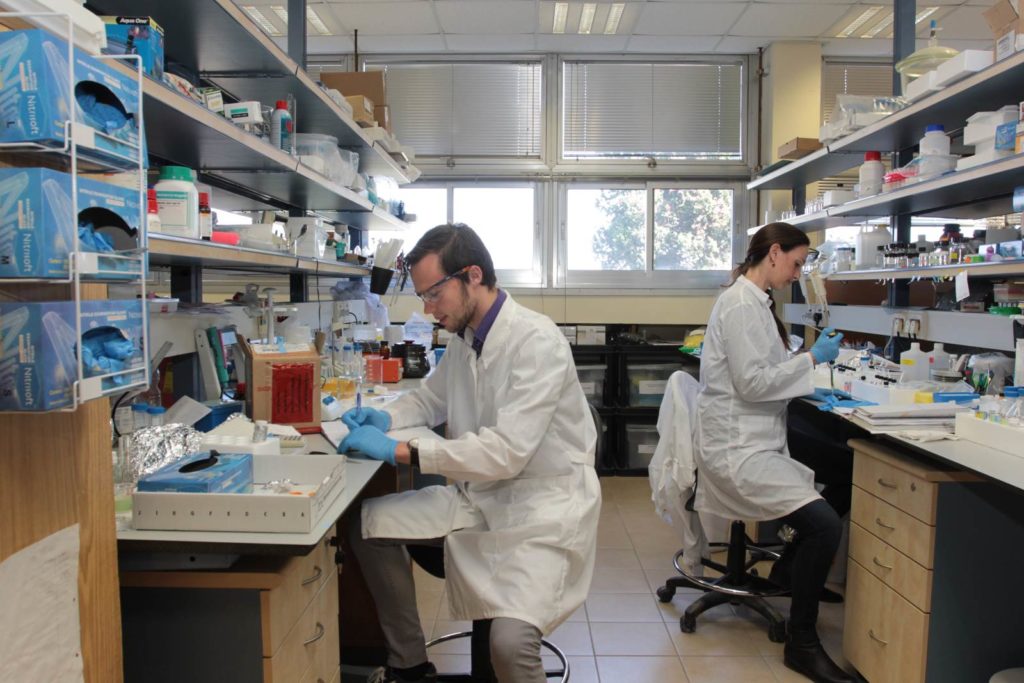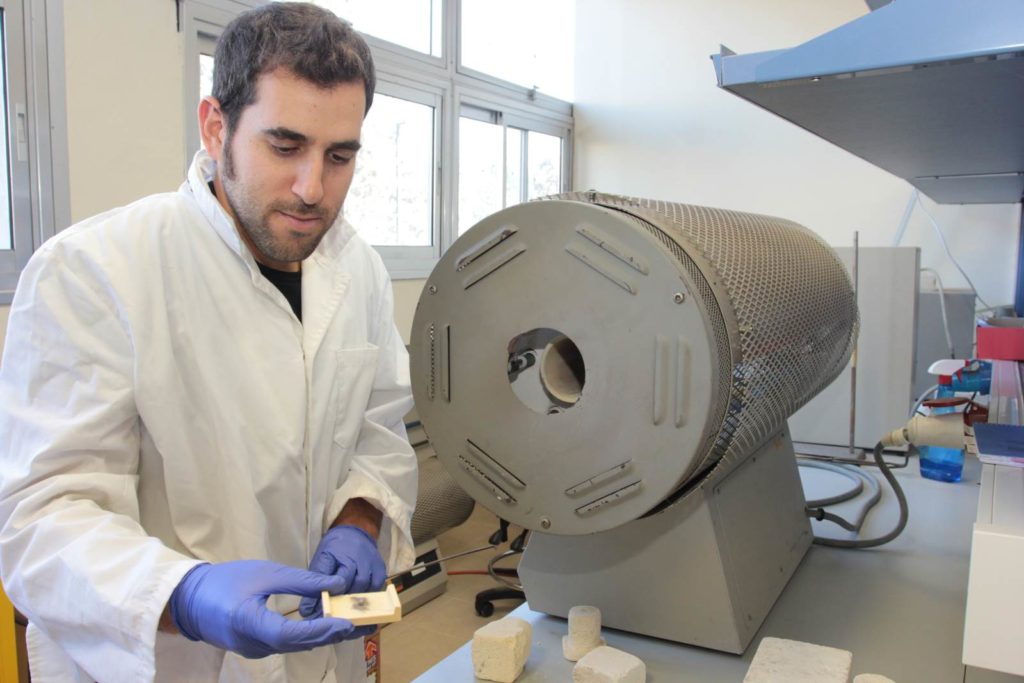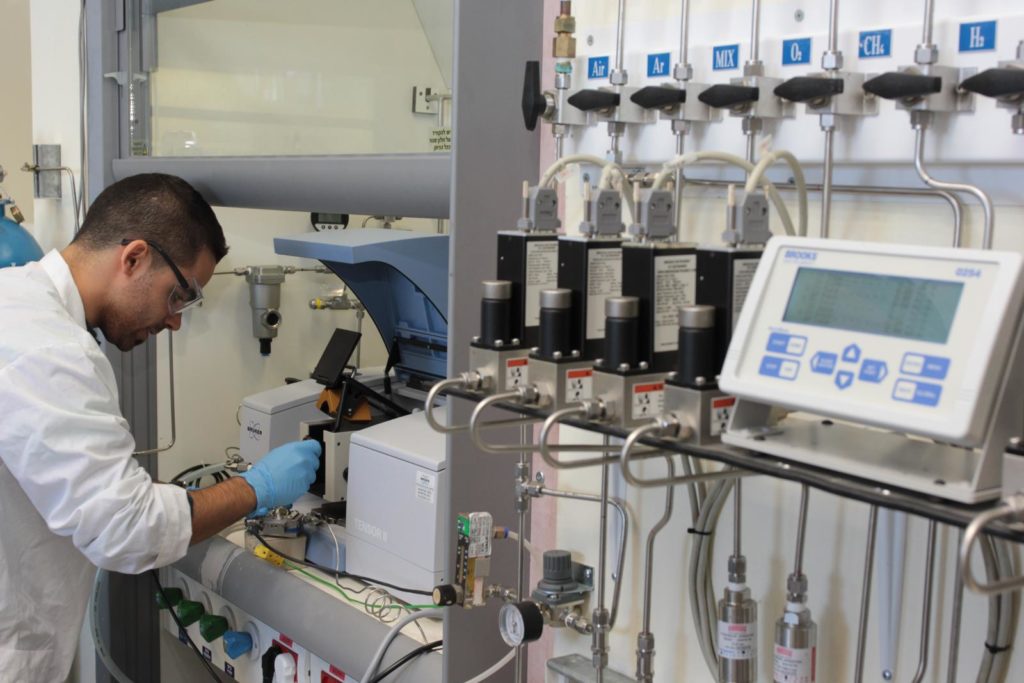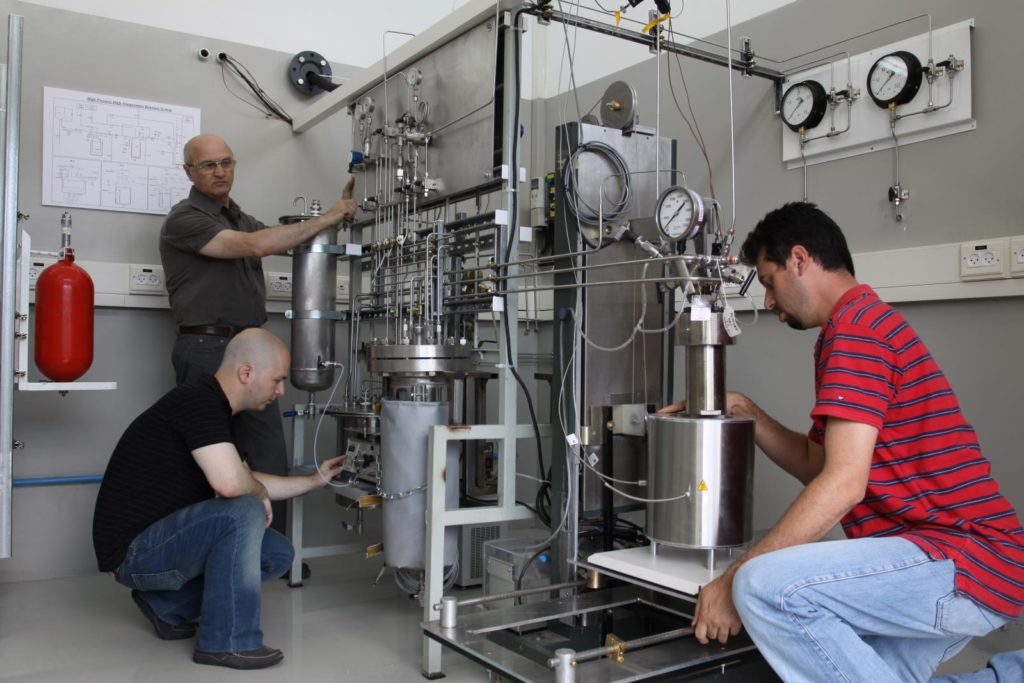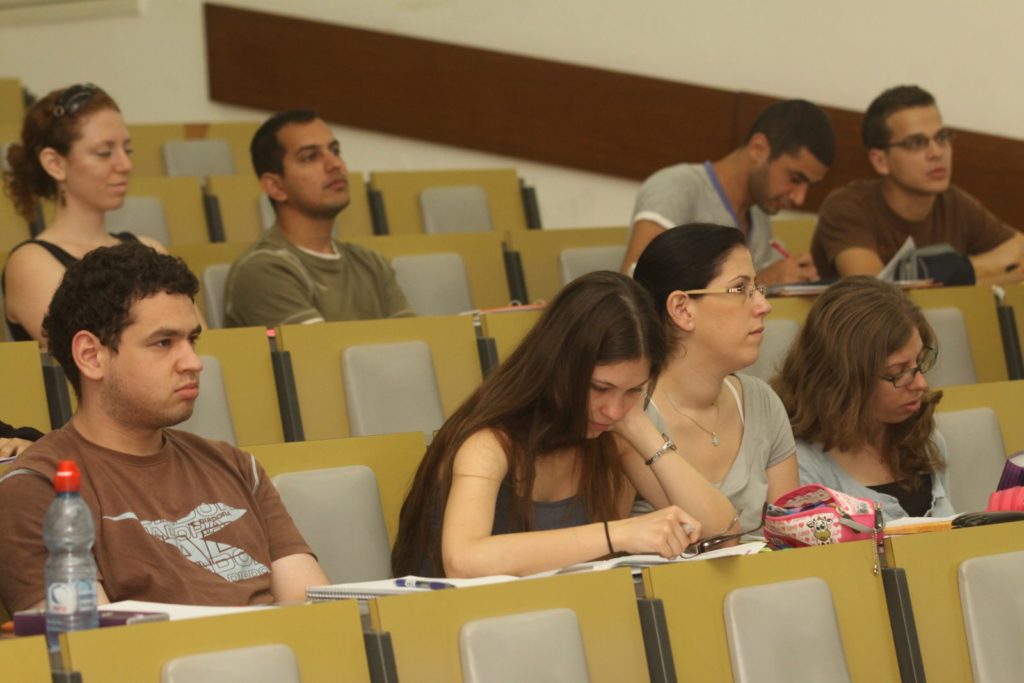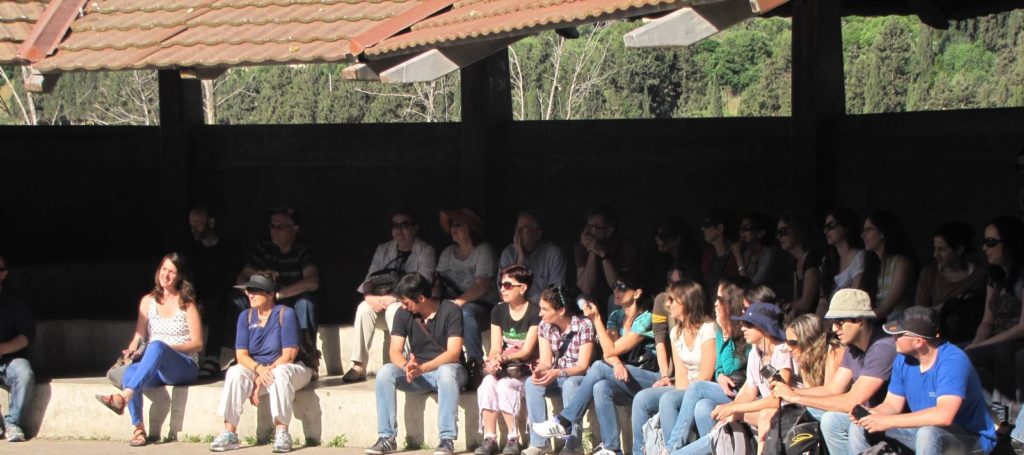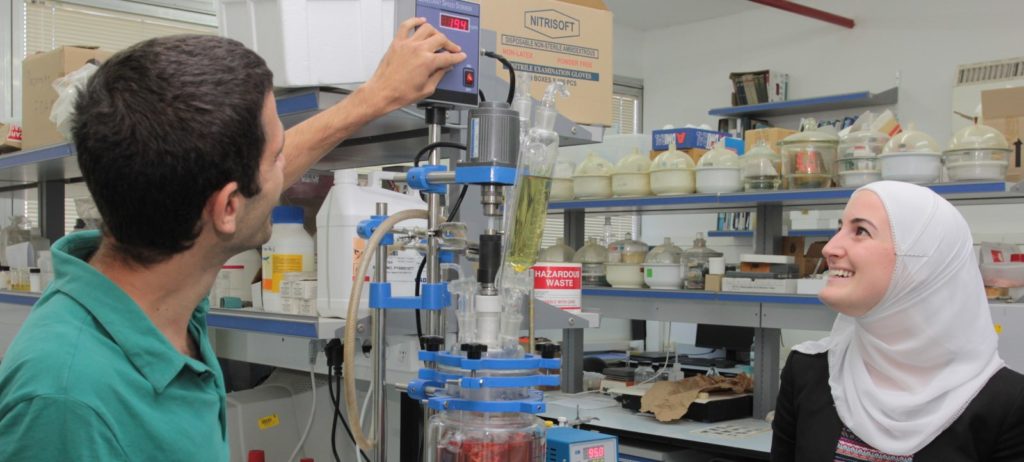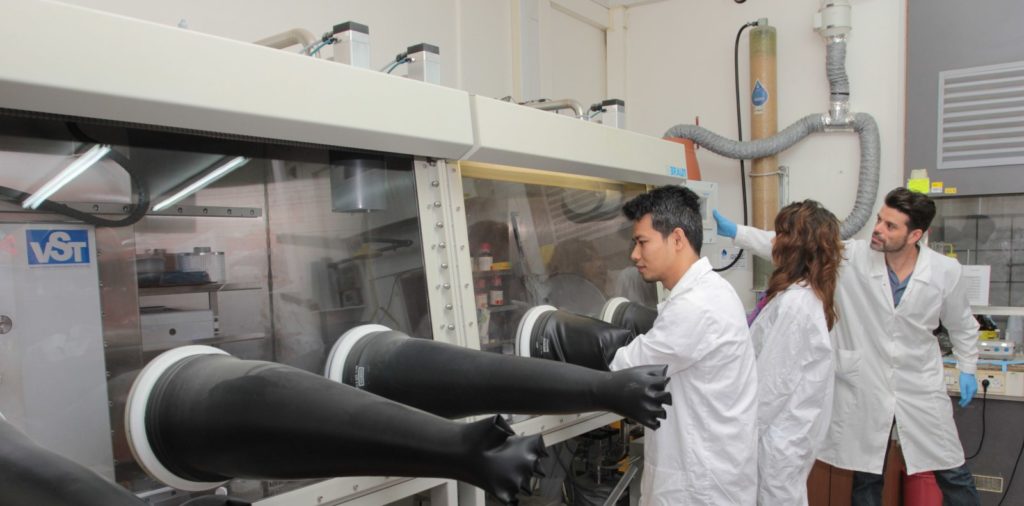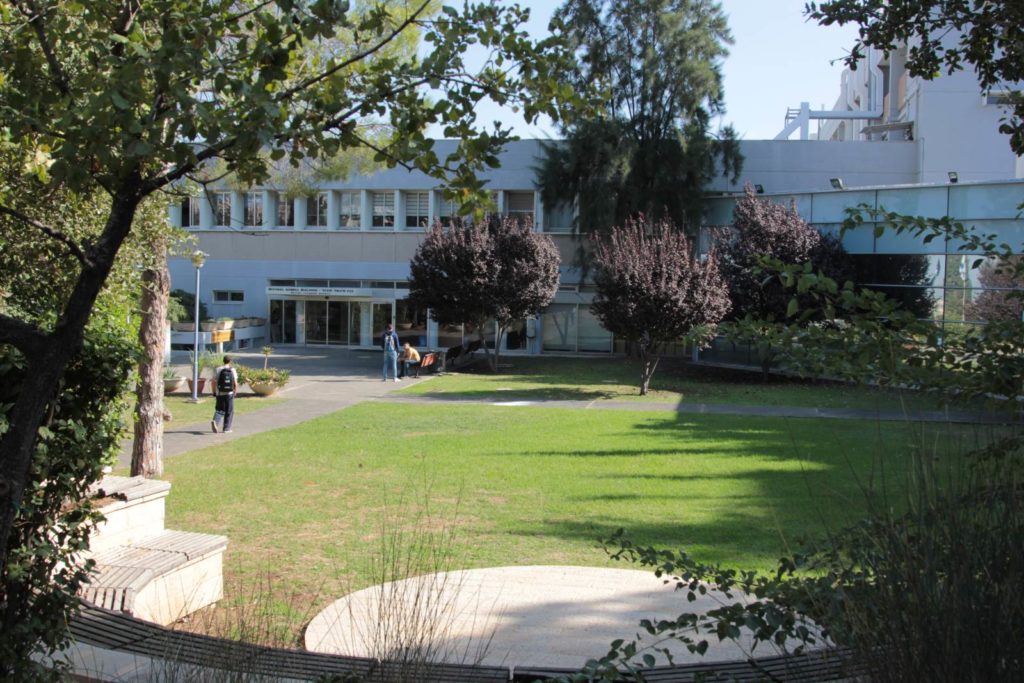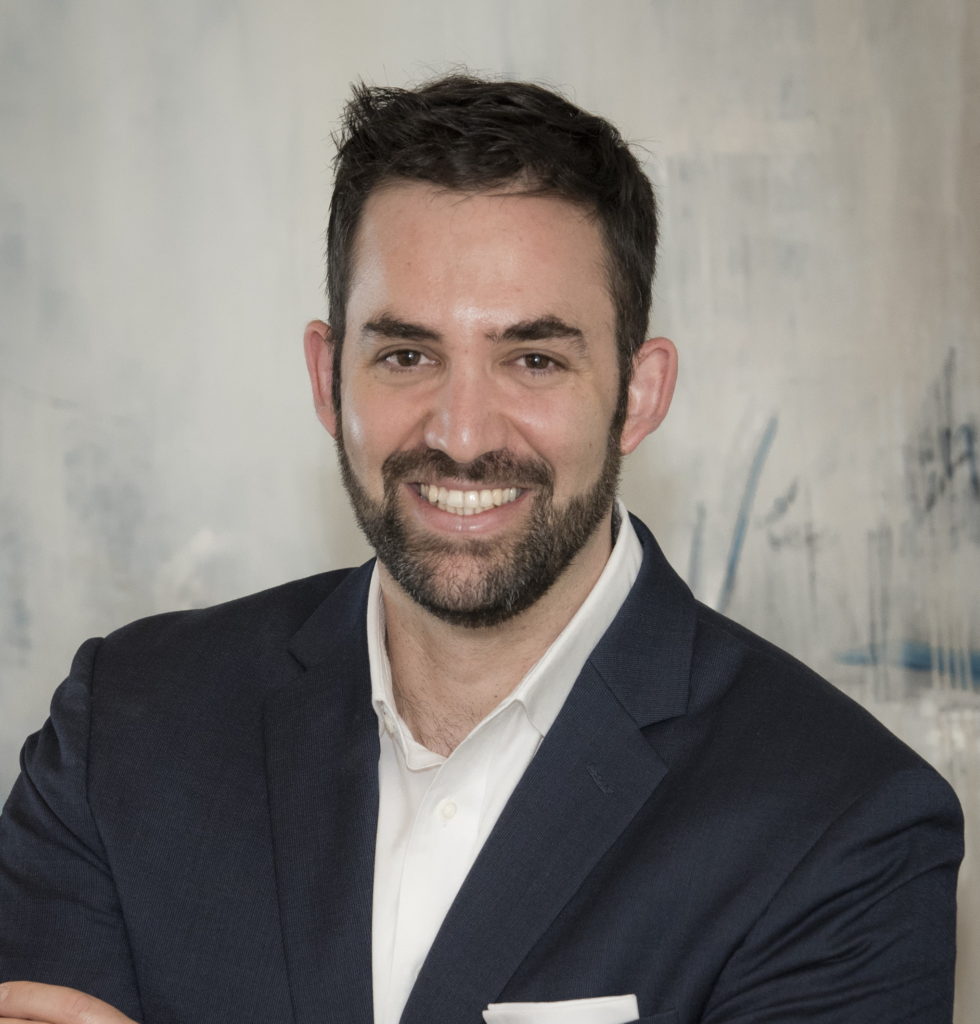
Author Archives: chemeng
Engineering Nanotechnology and Biomarkers for Big Breakthroughs
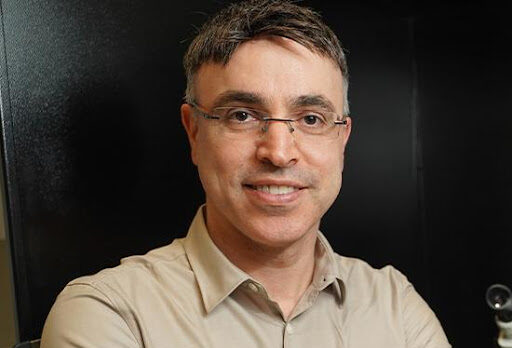
Prof. Hossam Haick is an expert in the field of nanotechnology and non-invasive disease diagnosis. His studies include the research and development of nano-array devices for screening, diagnosis and monitoring of disease, nanomaterial-based chemical (flexible) sensors, electronic skin, breath analysis, volatile biomarkers, and cell-to-cell communication. Prof. Haick has received more than 80 prizes and recognitions worldwide for his works, including the Knight of the Order of Academic Palms (conferred by the French Government), the Humboldt Senior Research Award, the EU’s Electronic Components & Systems (ECS) Innovation Award, the Changjiang Award, the Michael Bruno Award for Scientists of Truly Exceptional, and others. He was also included in more than 40 important internatiopnal ranking lists, such as the of the world’s 35 leading young scientists under 35 by MIT Magazine (2008), and top-100 innovators in the world (2015-2018) by various international organizations.

Prof. Haick began on his educational journey at the Technion – Israel Institute of Technology, where he was awarded BSc, MSc, and PhD degrees in Chemical Engineering. To gain more experience, he completed two postdoctoral fellowships: one at the Weizmann Institute of Science and another at the California Institute of Technology (Caltech). At Caltech he investigated the advancement of nanomaterial-based sensors for sickness identification, which formed the groundwork for his later exploration in the domain of nanotechnology. In 2006, he returned to the Technion as an Assistant Professor and with diligence, climbed up the ranks to be awarded a Full Professor in 2011. Today, he is a a known worldwide expert in the field of nanomaterial-based sensor development for disease diagnosis and related applications. In additon to his cutting-edge research at the Technion, he also serves as the Dean of Undergraduate Studies at the institution. “My enthusiasm for educating and mentoring the future generations of scientists and engineers is boundless,” Prof. Haick says, “and I consistently look for innovative ways to motivate and activate my students.”
Prof. Haick is passionate about research and finds the process of answering puzzles and uncovering new knowledge incredibly motivating. “Like many researchers, I am drawn to the challenge of solving complex problems and finding answers to difficult questions. For me, the fact that answering one question often leads to several new ones is not discouraging but rather invigorating. I thrive on the process of exploration and discovery, continually pushing the boundaries of knowledge and opening up new avenues of inquiry.” He testifies that he is always driven to answer every question he encounters. “I see each new puzzle as an opportunity to make a meaningful contribution to my field and to society as a whole. My dedication and perseverance in the pursuit of knowledge has led me to make breakthrough discoveries and innovative solutions to real-world problems. The thrill of discovery and the possibility of answering questions that have eluded others is what keeps me motivated and engaged in my work.”
Chemical Engineering aligns Prof. Haick’s passion for science, his desire to make a positive impact on the world, and his interest in interdisciplinary research. “It is a field that constantly presents new challenges and opportunities for innovation, and I am excited to continue exploring its potential through my research.” Indeed, he always had a strong interest in science and mathematics, and chemical engineering is a field that combines both of these subjects in a practical and applied way. “I find the challenge of applying scientific principles to real-world problems incredibly rewarding and motivating,” he says, and adds “I am fascinated by the ways in which Chemical Engineering can be used to address some of the biggest challenges facing our world today, such as climate change and the need for sustainable energy sources.” Chemical Engineers have the potential to make a significant impact by developing new technologies and processes that can reduce environmental harm and promote a more sustainable future. It incorporates elements of chemistry, physics, biology, and other fields. This allows for a broad range of research opportunities and the potential to collaborate with experts in diverse areas of study.
Prof. Haick’s research focuses on the study of disease biomarkers which can be attained without invasiveness and the engineering of cost-effective wearable technologies, accessible to everyone. His research group at the Technion studies volatile biomarkers, cellular interaction reliant on volatile markers, nanomaterial-built chemical sensors, self-healing ‘electronic skin’, breath examination, and more. To gain insight on volatile biomarkers, they incorporate innovative nanotechnology-driven spectroscopic and spectrometric approaches and execute in vivo (within an organism), in vitro (in an artificial environment), and ex vivo (using live tissues in an external environment) experiments. Their early studies showed that cancer has a distinctive volatile molecular signature, just like a molecular ‘fingerprint’, when analyzing exhaled breath. This observation became the major turning point for the introduction of the novel field of volatolomics. Prof. Haick’s research group also designed an intelligent sensor array that could be educated with the help of smart algorithms – just like dogs can be trained to recognize different smells. As a result, they constructed an affordable, lightweight breath analyzer device – similar in size to a flash drive. This nanomaterial-based device identifies a range of diseases, such as different kinds of cancers (including lung, stomach, ovarian, colorectal, breast, head & neck tumors), chronic and acute kidney disorders, liver illness, pulmonary arterial hypertension, tuberculosis, and other diseases. Its pain-free nature, straightforward operation, rapid prognosis, and inexpensive price make it more attractive than currently-available diagnostics.

Prof. Haick’s group has also invented a self-healing ‘electronic skin’ technology, resembling the human skin’s capacity to repair itself. It can be utilized for several applications, such as biomedical devices and future robotics, amoung others. The skin analysis done with the help of their wearable gadgets is extremely crucial in healthcare, allowing people to monitor their health constatntly. These novel devices offer a cost-effective and accessible solution, and they have the potential to reinvent the healthcare system as we know it. These gadgets measure volatile biomarkers on the skin, providing signs of different diseases, such as cancer, diabetes, and COVID-19. With these biomarkers being tracked in real-time, the devices are able to detect early warnings of diseases which could help patients get proper medical assistance in a timely manner. What’s more, the gadgets are lightweight and inexpensive, making them available to everyone, regardless of their economic standing or place of residence.

Throughout his professional career, Prof. Haick has orchestrated dozens of joint endeavors with individuals or teams of researchers, whether on the national or global level, including hospitals, startup companies and colossal businesses, non-profit institutions, academies, and more. Prof. Haick had set up and drove 5 transnational companies valued at many millions of dollars with over 55 collaborators from all over the world. To ensure successful collaborations, “I make sure to establish four primary components,” he says, “value, scientific/engineering direction, involvement, and infrastructure.”

Prof. Haick’s research group, also called The Laboratory for Nanomaterial-Based Devices (LNBD), employs an extensive variety of strategies to uncover disease biomarkers and construct wearable technologies. These strategies comprise of nanotechnology-aided spectroscopic and spectrometric methods that employ nanomaterial-based chemical sensors to detect volatile biomarkers in bodily fluids; in vivo, in vitro, and ex vivo experiments to develop a better comprehension of volatile biomarkers and their relevance to diagnosing and monitoring illness; machine learning and smart algorithms for the generation of smart sensor arrays; and material science and engineering for the formation of self-healing ‘electronic skin’ and other wearable technologies. The research conducted by LNBD necessitates multidisciplinary techniques, combining the abilities of nanotechnology, material science, engineering, chemistry, and biology to fabricate innovative solutions for disease detection and monitoring.
Prof. Haick’s research group currently studies the communication between cells as a method of diagnosing and treating diseases before their symptoms even manifest. “Simply put,” says Hossam, “when cancer cells form, they release certain ‘false’ signals comprised of volatile markers in order to draw in and recruit other healthy cells into their army of malignant cells. These messages act as a reassurance that everything is alright, and there is no need to take any measures of defense against the invading force. Unaware, the healthy cells accept this invitation and unwittingly become part of the growing cancerous mass. In this manner, the cancer cells can expand further by making use of the immune system itself – the ‘police force’ of the body – by causing it to assist the malignant cells, instead of attacking them. During this process, certain chemical messages, belonging to both true and false categories, escape from the body into the blood, and eventually make their way into our skin, breath and other bodily fluids. Currently, we are at an advanced stage of characterizing these messages and accurately deciphering them.” In order to realize this vision, Prof. Haick’s group is designing advanced devices that are able to sense and decode the messages emitted by the cells without actually penetrating the body. “Imagine if we had miniature gadgets that could monitor and decipher the messages without the need of manual interference,” says Hossam, “and then take corrective actions to treat the disease in its initial stages, maybe even five to fifteen years prior to the occurrence of any adverse effects.” Prof. Haick also aim to have these new gadgets available for people of all socio-economic backgrounds, “not only for those who have access to sufficient infrastructure, but even for those who live in extreme poverty and survive on just one dollar a day.”
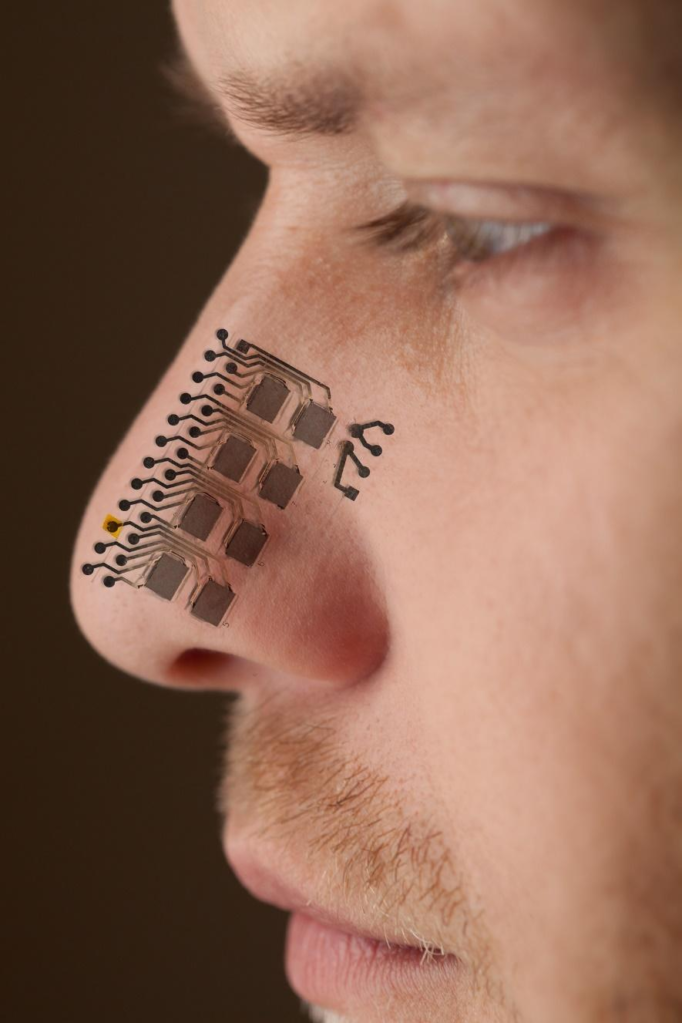
Another groundbreaking technology Prof. Haick’s group is working on is combating environmental and healthcare issues on global scales with will be required in case of bio-warfare, pesticide and nuclear waste. They develop a dynamic approach to monitor the environment/human body a global scale from billions of implanted sensors everywhere and all the time. This mammoth amount of data generated from sensor hardware needs to create effortlessly and autonomously anywhere and anytime both in local and global scale with minimum human intervention.
“Both as a scientist and as the Dean of Undergraduate Studies at the Technion, I always love to discuss ideas that would benefit the young generation of students. I look back very fondly on the days when I was a student myself, balancing the many simultaneous demands. If I could give five pieces of advice for students, I would say:
- Do something you are passionate about.
- Think differently: Try and explore new ideas without bringing your old ideas along for the ride.
- Get as much experience as possible: A university is a perfect opportunity to try out new things – new sports or societies, unknown modules or specialisms in your chosen subject, or different roles and responsibilities in a project or team.
- Expand your horizons and take every opportunity to expand your consciousness.
- Embrace Failure: By embracing failure, we accept ourselfs and our situation as a part of life.
For undergraduate students considering further studies in a certain field, Prof. Haick recommends they focus on laying a strong foundation in a specific area of study. This may include taking related courses, conducting research or crafting projects that showcase their skills and interests. Communication and collaboration capabilities should also be cultivated, as they are indispensable for any graduate program. Undergraduates can develop such skills by participating in group projects, getting involved in student organizations, and pursuing internships or other experiences that necessitate working with others. In addition, undergraduates should aim to seek out guidance and advice from those in the same field of study. They can reach out to potential graduate advisors, and go to seminars and conferences to network and stay updated on the latest trends in their discipline.
Prof. Dario Dekel and his research group study and develop disruptive electrochemical devices based on anion-exchange membranes for a greener and better future

Prof. Dario Dekel discovered his passion for research during his graduate degree studies. During Dario’s MSc, his supervisor (Prof. Gidi Grader) gave him a research topic (and a thesis title) during the first week of the studies: Preparation of Superconducting Materials by Spray Pyrolysis Technique. He graduated with an outstanding thesis (and paper): “I remember every detail until today”, he says. The PhD was a different experience for him. He describes the period of working with Prof. Hasson and Prof. Semiat on Membrane Separation: “I was working for more than two years to find myself an original work that I could focus on. In my 3rd year I finally found something that no one did, and in just one year, I practically did all the work and developed a novel model that explains how nanofiltration membranes behave in non-aqueous solvents.” This topic was not yet understood at that time. A few years later, Dario and his mentors found that his pioneering work revealed an entirely new field and new understanding that scientists have been using until today.
Prof. Dekel has more than 25 years of experience in the industry. He started a BSc in Argentina – a 6-year long BSc in Chemical Engineering – with a very strong background in Chemistry. In order to pay for his studies, he started working full-time in the chemical labs of a large brewery before the first semester and continued there 9 hours a day in parallel to his studies. On the one hand, a full-time job demands a lot of effort and time, making it very hard to concentrate on your studies. On the other hand, “I work in a chemical plant (brewery), so everything I learned I put to practice in parallel in my job,” Dario says. This experience shaped Dario as an engineer, plus he managed to keep good grades, and graduated with the 3rd best GPA from the whole university (all departments).
After working at the brewery for one additional year to save some money, Dario immigrated to Israel. “Once I immigrated, it took me one year to learn Hebrew and then I started working in a Chemical Plant in a kibbutz, producing fine chemicals for aromas and the food industry.” He worked night shifts in parallel to an MSc degree at the Technion. “In the kibbutz, I learned about the only chemical engineering unit that I did not work in the brewery – distillation. So, in summary, by the time I started my PhD, I already had 9 years of experience in the chemical and food industry, after mastering all the chemical engineering units we learned about during the BSc.” During his PhD degree, besides a 4-month break to serve in the IDF after immigration, Prof. Dekel had four years of additional experience working with membranes, membrane separation processes, polymers, synthesis, and related processes.
After his PhD he was awarded the prestigious Katzir Scholarship, which was concieved in the 2000’s to recruit selected researchers for the Israeli Defence industry. He accepted an offer from Rafael, and was recruited to investigate and develop Thermal Batteries, “a topic that was absolutely new to me.” During his first few years working in Rafael, Dario became an expert in many fields, including Powder Processing, Molten Salts, Electrochemistry, Batteries, Ceramic Materials, Pyrotechnic Materials, Electrodes, Separators, and many others. Most important, “I became one of the worldwide leaders in the Thermal Battery field. Thanks to many inventions I made on materials and in batteries in general, I learned about Intellectual Properties and Patents. In Rafael, I wrote more than 10 patents – many of them are used used in Israel for critical systems (for instance, the well-known Iron Dome rocket that protects us includes a Thermal Batery based on a special metal lithium technology I have invented in my first patent during my second year in Rafael)”.
While leading multidisciplinary researchers and engineers to design, develop, and produce high-quality batteries, Dario mastered Mechanical Engineering, Product Design, Production Scale Up Processes, Process Engineering for Production, Quality Control Processes, and many others additional fields that we did not learn during our studies in Chemical Engineering, but they complement us and shape our knowledge. After 3 years he became an R&D Manager, and after additional 3 years he became the Director of the Energy Department in Rafael, responsible for ~100 people. “Besides managing skills, I learned a lot in the field of business, contracts, budgets, and human resources. And… a lot of psychology in the human behavior field as well. This gave me all that I needed to go out and start my own startup company.” In the middle of his MBA at Technion, together with two colleagues, Dario co-founded a startup company which was the first company in the world to start developing and commercializing a new fuel cell technology, which they called Anion-Exchange Membrane Fuel Cells (AEMFCs). “I became the pioneer of this technology in the world and, with that, the worldwide expert in the technology. During my years of experience leading a startup, I learned a lot about business development, venture capital, recruiting funding, collaboration paths with the world (academy and industry), business plans, labs development, and startup culture. After we sold the startup, I joined the Technion as a Professor, starting a new step in my lab, with academic experience. To the academy world, I bring all my 25+ years of industrial experience in many fields, working with many multidisciplinary teams, and this gives me (and my team), an extraordinary advantage.”
Prof. Dekel’s research group at the Technion Chemical Engineering Department focuses on Electrochemical Devices based on Anion-Exchange Membranes. “Specifically, we develop state-of-the-art Fuel Cells, Electrolyzers, and Redox-Flow Batteries. Together with Renewable Energy, our work and breakthroughs advance us towards the future of Green Energy, which will save the planet from self-destruction due to clime change.”
We need Fuel Cells and Batteries in our life. Five years from now, we will have endless number of large devices that need high power and energy, from electric and autonomous vehicles to autonomous robots in streets, in the air, and inside in restaurants, stores and homes serving, preparing food, cleaning, repairing, taking care, and providing companionship. All these new autonomous units require huge energy density from fuel cells to work independently for months without recharging.
Prof. Dekel is the pioneer of this AEMFCs technology, so many universities and researchers in the world look forward to working with him and his group. “This allows us to keep leading and mainly allows my students to have the opportunity to collaborate and work with many leading universities and companies from different countries. It gives them an extraordinary experience not just in the research and development fields but also in leading collaborations and managing projects, while at the same time polishing their oral and written academic, business, and language skills.”
Prof. Dekel’s group leads this technology worldwide, with many innovations and breakthroughs in many fields. To mention a few, they developed the first (and still the only) numerical model that can predict the lifetime of the AEMFCs. This is of critical importance in the field, as it helps to design cells, understand the ell operation, and optimize the operating conditions so the cell can work long enough to power, for instance, a car, bus, or even a train. They were also the first to understand, prove, and explain the primary degradation mechanism of AEMFC polymers and membranes during fuel cell operation. This breakthrough allowed polymer chemists to design and synthesize stable polymers and membranes for this technology. Prof. Dekel’s group is currently developing a new process to separate oxygen from air that will disrupt the oxygen manufacturing industry. This may be used as a small portable oxygen generator that we can all use at home for medical treatment, etc. Dekel’s group also developed the most stable functional chemical groups that withstand the environment of the fuel cell during operation. The new materials were patented and they are now in the process of starting a new startup company based on these inventions.
To undergraduate students interested in the energy field, Dario strongly suggests learning all possible courses that urge them to think out of the box: “if we can all learn to think differently, we can then learn everything specific we need later.” He adds, “ignore everyone that tells you that ‘you cannot’, ‘it is impossible’, ‘I already did it and this idea does not work’, etc. Go and do. Go and try. Go and CHANGE. It is always impossible… until it is done.”
Micro and nano swimmers: How can miniature robots “swim” within the human body?

When he attended school in the city of Tashkent (the capital city of Uzbekistan, formerly part of the USSR) he showed curiosity for the various fields of science, and participated in various classes, from history and archeology – “I even participated in the excavations of the local National History Museum and the coins that we found were put on display ,” says Prof. Alex Leshansky. Then Prof. Leshansky became interested in astronomy, chemistry, and physics, and began more in-depth studies of physics and mathematics.
“After graduating from high school, I was accepted to the Mendeleev Institute of Chemical Technology in Moscow and completed three years of the BSc program there before making Aliya to Israel with my family in 1991. I knew that the Technion was the right place to continue my higher education, and immediately after finishing studying Hebrew in an Ulpan and summer studies at the University of Haifa (which was simply excellent!) I was accepted to the Technion with no additional requirements for learning the Hebrew language, which was not trivial. By the way, at that time in the early 1990s, a fairly large number of former students from the institute in Moscow, some of whom I knew back there, studied with me. One of the faculty members (Prof. Slava Freger) also graduated from the same institute. After I completed my B.Sc. in Chemical Engineering at the Technion in 1994, I also managed to complete my MSc studies in our Department under the guidance of Prof. (now Emeritus) Avinoam Nir. I was then drafted for my mandatory service at an experimental unit of ordnance corps of IDF, and at the same time I continued my research with Prof. Nir on new interesting problems related to thermocapillary phenomena. After the discharge from IDF, I went on to a doctorate in the inter-disciplinary program for Applied Mathematics at the Technion under the guidance of Prof. Nir and Prof. Len Pismen, followed by a post-doctorate at the California Institute of Technology (Caltech) in 2002. I returned to the Department in 2004 and established my own research group.”
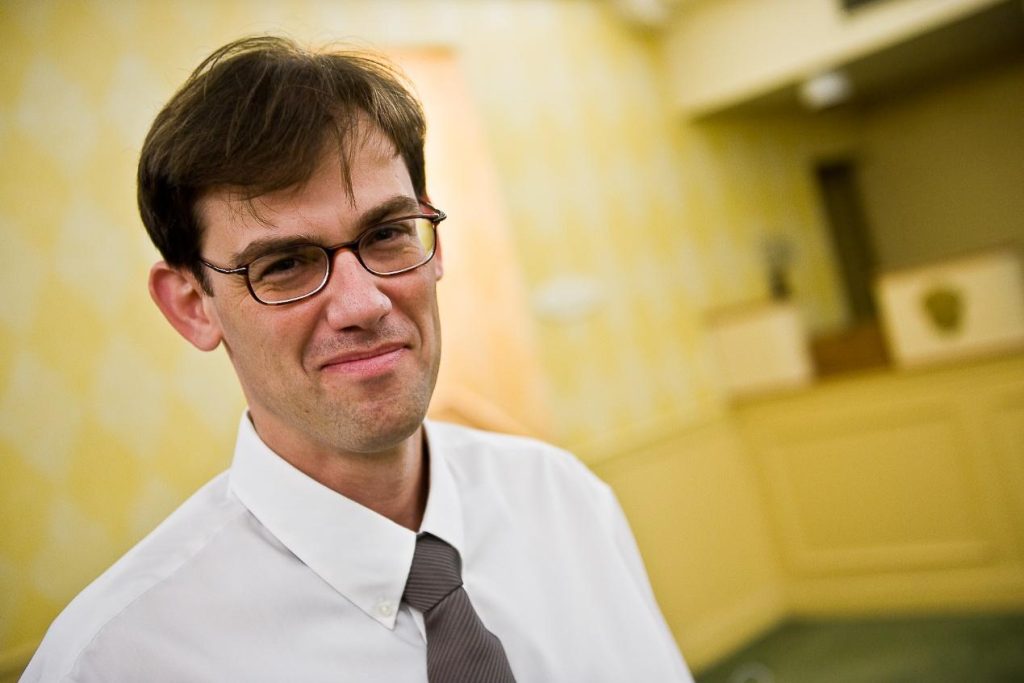
Prof. Leshansky’s research group focuses on theoretical research of momentum, heat and mass transport. Lately, the group started working on microfluidics and micro- / nanopropellers. These two fields have significantly advanced lately towards many practical uses. Some startup companies advance microfluidic technologies for quick and accurate bio-medical applications, such as PixCell medical which develops a mobile device for fast and precise blood tests using the viscoelastic focusing technology developed by Prof. Leshansky’s research group in collaboration with researchers from Biomedical Engineering. Another company, Bionaout, develops magnetic micro-swimmers that can be steered inside a human patient’s body to assist in targeted drug delivery and other medical procedures.
Prof. Leshansky’s research group collaborates with experimentalists in Israel and abroad, and provides a strong theoretical foundation to understand and predict small-scale processes. Among the collaborators are Prof. Patrick Tabeling from ESPCI (Paris Tech) in France with which the group collaborates on microfluidics, Prof. Peer Fischer from the Max Planck Institute on Intelligent Systems with which the group collaborates on micro-propellers, Prof. Ambarish Ghosh from Indian Institute of Science, and others.

Counter to our intuition, the researchers in Prof. Leshansky’s group found that the helical flagellum designed by nature is not the optimal solution for motion at small scales, but rather a shape of a chubby arc with twisted ends.
One of the breakthroughs lead by Prof. Leshansky is improved swimming for nanoscale robotic swimmers in the human body. In this work, the researchers asked what would the optimal configuration of nano-scale robots be for motion within the human body, e.g., for targeted drug delivery applications. Inspired by the flagellum mechanism common in bacteria, the researchers have developed tiny spirals propelled by a rotating magnetic field. This work led to a new theory to compute the optimal velocity of the magnetic nano-swimmers based on their shape and magnetic properties. Surprisingly, the researchers have found that the thin helical flagellum designed by nature is not the optimal shape for small scale motion, and that a shape of a wide arc with twisted tails is more favorable. These findings were published in Science Robotics. Prof. Leshansky explains that these results would lead to developing more efficient nano- and micro-robots: “Most researchers in the field assume that a helix-like shape which mimics known biological structures is optimal. To everyone’s surprise, we found that the optimal shape is quite different from a helix, and have successfully demonstrated its higher efficiency.”

In a different work, the researchers have shown how a micro-swimmer in a form of a scallop can propel in non-Newtonian biological liquids (e.g., liquids that change their viscosity depending on the shear rate). The researchers predicted using their model that a tiny symmetric micro-scallop can propel in shear-thinning liquid using an asymmetric propulsion gait, e.g., by slow opening of its shells and subsequent fast closure. This work has led to a publication in Nature Communications. For students who are interested in this field, Prof. Leshansky recommends to take courses in mathematical models, Numerical Methods, Advanced Topics in Fluid Flow and Transport Phenomena to acquire relevant background.
Meet Lee and May from Biochemical Engineering who dream of one day establishing their own pharmaceutical company
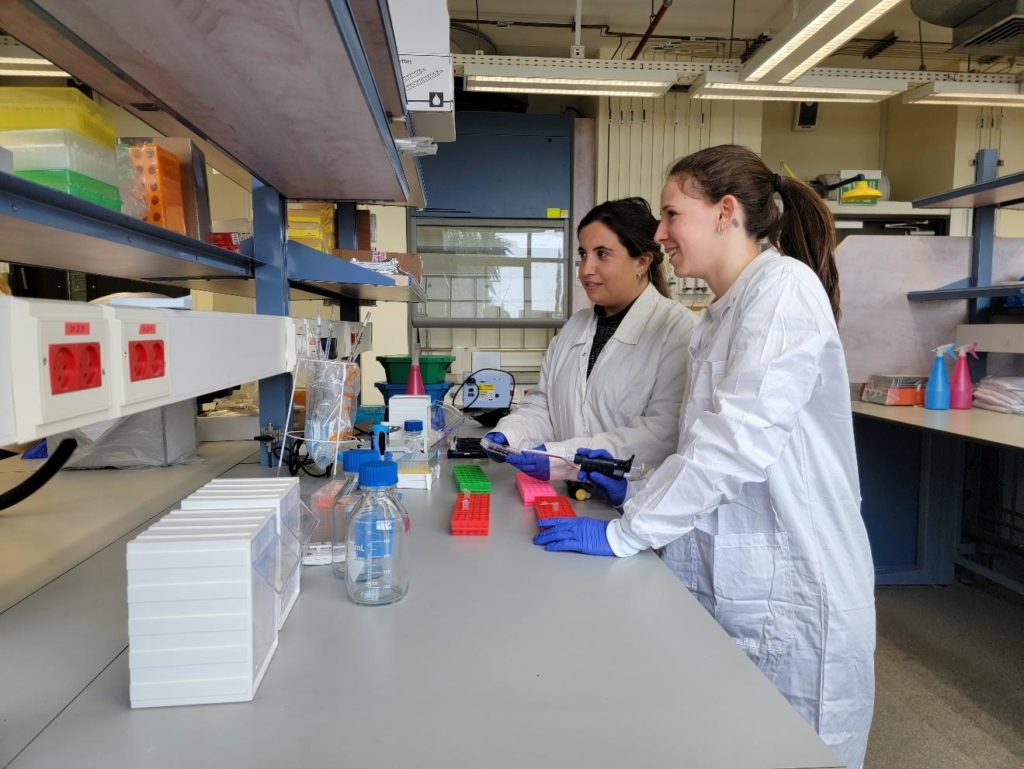
May Naveh and Lee Goldfryd both began their careers in pre-medical studies, looking for the applied research aspect. They found it in a BSc degree at the Department of Chemical Engineering at the Technion in the Biochemical Engineering track. In the future, they hope to open their own pharmaceutical company.
March 2022
Lee Goldfryd and May Naveh are senior students at the Department of Chemical Engineering in the Biochemical Engineering track. Both began pre-medical studies at Ariel University, and decided to continue studying Biochemical Engineering at the Technion. Today, in the fourth year of their studies, they are engaged in research on nanoparticles for the development of targeted drugs in the research group of Dr. Assaf Zinger. As May says: “At the beginning of my career I was interested in medicine due to my military background in the field. I was always attracted to biology and wanted to understand how I could make an impact in this world. I was offered a scholarship at Ariel University, and started pre-med studies. During the first year I realized that I want to explore and find new ways and technologies to improve our lives, whether it be curing diseases or improving the quality of life. After realizing that medical studies are less about research and development, I looked for a profession that would lead me into that field from the point of view I was interested at. I was exploring the possibility of studying chemistry, biochemistry or biochemical engineering.” Lee was accompanied by a similar urge to focus on developments and innovation in the medical field. “For as long as I can remember, I have been interested in medicine. After the army I did not know which field to turn into and finally decided to start a degree in pre-med at Ariel. After the first year I understood that I would fit better in an academic track that would fulfill my aspirations in research. I had an urge to see ‘behind the scenes’ for medicine, so to speak, both in treating diseases as well as in the drug development process itself. Among the tracks I examined were chemistry, biochemistry and Chemical or Biochemical Engineering. After hearing about Biochemistry Engineering, I understood that this track could give me the tools needed to fulfill my professional aspirations.”
When they individually realized that they were both interested in recalculating their route to explore and gain research tools to lead change in the field that interested them, Lee and May examined the options that exist at a number of universities. According to them, after visiting the Technion and the Department of Chemical Engineering, “we quickly realized that this is where we would like to study.” The atmosphere at the Department and the practical aspects in Biochemical Engineering studies attracted them.
Could you share your experiences so far from this degree?
“The Chemical Engineering Department is relatively small, friendly, and homely, especially given a relatively intimate Biochemical Engineering track. We are a group of about 20 students mostly with high ambitions and common interests. It’s a lot of fun to be a part of such a group. Technion’s social life is great, although it might not look that way from the outside, and our evenings with friends are a lot of fun. The studies are relatively intensive, there is a lot of workload with many of assignments. Some of the fields taught are centered around Chemical Engineering, while others pure biology. Professionally, we found ourselves already in our first year at the Technion actively involved with research in laboratories in various fields. “
In their second year they have already started working in the field, Lee worked in Dr. Alon Greenberg Dana’s and May turned to industry to work at Tower Semiconductor. In the third year, they both joined a biochemical research laboratory in the Department under the supervision of Dr. Assaf Zinger.
Which experience in particular will you remember from your BSc days?
Lee says: “The first semester at the Technion was a complete ‘shock’ for me. Moving from another place of study and from a non-engineering field is difficult. Although I was already familiar with some of the courses, I found myself having a hard time with math and physics courses that are taught at a very high level. In addition to the academic difficulty, I also moved away from my parents’ house for the first time, away from the whole family and friends who are a great support for me. But despite the difficulty in the first semester, I met my life partner at the Department in the first recitation of the course ‘Introduction to Chemical and Biochemical Engineering’, and since then we have been working towards the BSc degree together.”
May says: “The first year at the Technion was the most difficult for me. The transition and adaptation to the new environment was challenging. I will not forget that during this year I tackled the advanced Calculus course and could not understand much. My motivation and excitement came from the classes in topics that interested me, for example the biochemistry and enzymology course I took that year which was taught by Prof. Michael Glickman from the Department of Biology. In each lecture I was amazed at how much this field was burning in my bones, so to speak, and I could not stop thinking about what I had learned and realized I wanted more. After several lessons I approached Prof. Glickman and shared with him my interest in the field. He saw the ‘fire in my eyes’ and after a short time I found myself in his fascinating research group, which was a professional home for me for about a year and a half.”
What would you recommend for candidates interested in a BSc in chemistry/engineering/biology?
“For anyone who is passionate about chemistry and biology, and is looking for engineering practice, we would recommend applying for the Department of Chemical Engineering at the Technion, which really combines science with practical applications. The Department is relatively small, family-like, the lecturers know their students personally and strive to see them succeeding. In addition, we believe that a degree at the Department gives many tools for dealing with a variety of fields that ultimately do not limit one to work in one field alone. Further, the possibilities for pursuing graduate level studies and research are endless with this background. The job opportunities at the end of the first degree are very diverse and attractive.”
So, what are your plans for the near term? And for the slightly longer term?
May replies: “I really like what I do, both in industry (Tower) and in research at the Technion. I like to study, research, and pursue ideas that come to my mind before I go to sleep. I have no doubt that I will start graduate school in a research lab, both because of my interest in the field and because I aspire to become a leader in pharma research, and to achieve that I must to become an even better professional.”
Lee replies: “If I was asked six months ago I would have said I would be happy to gain more experience in industry before I go on to grad school. In the last year, however, I was able to get a job in the industry and experience the ‘real’ world outside. I have no doubt that I will continue directly to an MSc degree and hopefully also my doctorate in order to continue and specialize.”
Lee and May add that in the distant future they hope to work together, as they have started their journey together, and even start their own company for pharma-solutions, do great things with an impact in the field, and continue to represent the Department.
Anything else you would like to share?
“It is very difficult and confusing for young people like us to choose which field to pursue in their professional lives as adults. We think that Chemical Engineering is a broad field from which one can reach lots of different work environments, each fascinating in its own way. During the BSc, we both dealt with and specialized in a variety fields with the help of the tools we acquired at the Department. We’re happy to warmly recommend this track.”
Creating 3D nanostructures for the next generation of nanotechnology
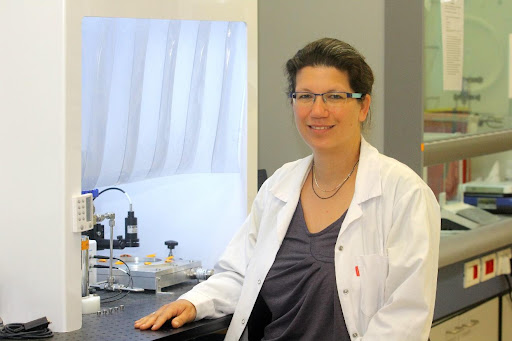
Asst. Prof. Tamar Segal-Peretz develops nanotechnology for conserving resources and streamlining diverse technologies: from computers and optical devices to efficient membranes for water treatment.
February 2022
After completing a BSc in Biochemical Engineering at the Technion, Tamar Segal-Peretz worked in industry and felt she wanted to delve deeper into research. She decided to pursue a graduate degree. “I felt that graduate studies would open new doors for me. Therefore, I decided to return to the Technion and joined one of the first classes of the Interdisciplinary Program for Nanoscience and Nanotechnology, in Prof. Gitti Frey’s research group at the Department of Materials Science and Engineering,” says Tamar. “During my PhD research, which dealt with the self-assembly of polymers to create solar cells, I realized that I really enjoy studying and discovering new things, as well as teaching courses and mentoring students in the lab. Towards the end of my graduate studies, I decided to pursue an academic career. The field of polymer self-assembly was very attractive to me, so I joined Prof. Paul Nealy’s lab at the University of Chicago and Argonne National Laboratory as a postdoctoral researcher focusing on this subject. We studied the integration of self-assembled polymers into advanced computer chip manufacturing processes.” After three years in Chicago, Tamar returned to Israel with her family and joined the Technion’s Department of Chemical Engineering as a faculty member, where she opened The Functional Nanostructures and Advanced Imaging Lab. In addition to research and teaching in the fields of nano, polymers, electron microscopy, and separation processes, Tamar also established a Women’s Forum in Chemical Chemical Engineering for graduate students at the department, where senior and trainee academic women meet, share advice, and develop ways to support each other.
The research conducted in Asst. Prof. Segal-Peretz’s group is focused on the development of nanotechnology to reduce resource consumption and streamline various technologies. “The expanding world population and our responsibility towards the planet requires us to find efficient ways to utilize the existing resources while preserving the environment,” says Tamar. “The vast majority of the processes that take place in technological devices occur at the nanoscale – electrons, photons, and molecules at this scale dictate how devices work – from computers and optical devices to water treatment membranes and heat management devices. Our studies are based on the formation of nanometer structures from polymers (for example, by self-assembly of block co-polymers) and on the growth of inorganic materials on and inside polymers, using the atomic layer deposition (ALD) technique. “Growing inorganic materials within organic polymers allows us to tailor the properties of the final product, as well as to devise innovative ways to create durable and strong nanostructures from soft and easy-to-apply polymers.” The research group frequently uses electron microscopy to characterize nanostructures with expertise in 3D nanomaterial characterization. Three-dimensional characterization at the nanoscale allows researchers to accurately understand the structures they create, and thus optimize the design.
For example, these methods can produce membranes that repel oil molecules – thus protecting themselves from contamination, as well as membranes for molecular separation for nanometric pollutants molecules removal such as drugs residues. Other topics studied at the lab are the fabrication of ceramic fibers with a 3D structure from simple polymer fibers – which allows for excellent control over the fibers’ structure and composition, three-dimensional characterization of nanostructures for the semiconductor industry (in collaboration with Applied Materials and Intel), and development of structures and materials with improved mechanical properties that can be used for energy absorption and durable protective layers. These technological developments enable new types of 3D nanostructures- one can think of it as 3D printing at the nano-scale.
Segal-Peretz’s research group works in cutting edge, diverse fields Until a few years ago, scientists didn’t think that inorganic materials could grow within polymers using ALD (atomic layer deposition) technology, but research in Tamar’s group and other groups around the world has opened a host of new possibilities for creating hybrid materials with improved properties. “In five to ten years, I expect we will be able to perform ALD in polymers with a wide range of materials and in a scalable manner (such as roll-to-roll), leading to efficient manufacturing of functional 3D nanostructures. In computer chip manufacturing, for example, devices are becoming more complex; thus, a 3D understanding at the material level is vital and there is a great need for new 3D nanofabrication technologies. A new field that the research group is now entering is biodegradable polymers and “green hybrid materials that will reduce plastic pollution while maintaining plastic-like performance.
“I strongly believe in collaborations because today’s research is very multidisciplinary. It is crucial to work with experts from different fields and contribute our expertise to other groups. It is also very fun and instructive, both for me and for the students,” says Tamar. The research group collaborates with Prof. Guy Ramon (Civil and Environmental Engineering), Prof. Eyal Sussman (Mechanical Engineering), Prof. Noy Cohen (Science and Materials Engineering), and Asst. Prof. Shady Farah and Prof. Slava Freger from the Technion Department of Chemical Engineering. At the national level, there are collaborations in the field of batteries with Prof. Daniel Sharon of The Hebrew University of Jerusalem. The group also has many international collaborations (with groups in Germany and United States). “It’s fun to work with people at the forefront of global research. In addition, we collaborate with a variety of companies from the Israeli industry – Shamir Optical Industry, Applied Materials, Intel, and Elbit.”
The main methods used in the group are techniques for polymer engineering (self-assembly of a block co-polymers to create nanometer structures in thin layers and in particles, electrospinning, 3D printing, and working with polymer membranes), together with techniques for growing inorganic materials on and inside polymers using ALD-based processes. The ALD enables a solvent-less procedure, which is significantly more environmentally friendly than working with organic solvents. ALD processes allow precise (sub-nanometer) control over the thickness of the material and its nature. “In addition, we perform many characterizations using electron microscopy methods: scanning electron microscope (SEM), transmission electron microscope (TEM), and also a microscope capable of performing precise cutting (focused ion beam, FIB).”
Asst. Prof. Segal-Peretz’s research group has students with diverse academic backgrounds, mainly in Chemical Engineering and Materials Science and Engineering. Courses on polymers, solid-state and microscopy are good preparation for working in the group, but even those who arrive without prior knowledge of these topics can thrive and deepen their knowledge while working in the lab. “I believe that a graduate degree (MSc/PhD) is a great opportunity to acquire new skills and learn new fields. “Nourishing your research project is hard work, and it’s a wonderful feeling when you succeed in creating new scientific knowledge or in developing new technology. The Technion Department of Chemical Engineering is a great home to work in while being at the forefront of cutting-edge science. I invite ambitious candidates to join us!”
Tamar advises students who are debating between several areas of research: “It is important to choose a research topic that interests you and that is meaningful to you, as well as to choose a group and a mentor that you will enjoy working with during the graduate studies period.”
Chemical Engineering and Process Engineering – From the Lab to Startup Companies
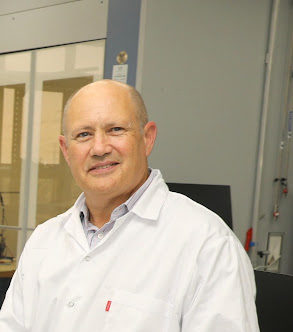
Prof. Gidi S. Grader and his research group study and develop ceramic materials with applications in the field of energy and produce “green” hydrogen with high efficiency. Prof. Grader recently received the Prime Minister’s Prize for Global Innovation in Smart Mobility and Alternative Fuels for Groundbreaking Research.
While studying for his BSc degree in Chemistry and Chemical Engineering at the University of California, Berkeley, studying organic chemistry was based on memorizing hundreds of catalytic chemical reactions and respective reaction conditions. Chemical Engineering, on the other hand, was based on a basic understanding of processes and real-workd problems. “I liked both directions, and worked a bit in a chemistry lab. After two years at Berkeley, studying organic chemistry, I decided to return to Israel to serve in the IDF for three years in the Golani Brigade,” says Gidi. “After the Army, when I went back to Berkeley to finish my studies, to my amazement I discovered that I had forgotten all the organic chemistry, and really had no will to memorize all the material once again. And so, I happily decided to continue in Chemical Engineering which had already attracted me much more.”

“I did my doctoral studies at Caltech, where I joined Prof. John Seinfeld’s wonderful research group that studied the behavior of dust particles called ‘aerosols’ in the atmosphere. I built a unique experimental system there that allowed me to study the properties of a single particle. I met my wife during that time, and got married before finishing my PhD. While working at Bell Labs, I was exposed to the synthesis of liquid-medium particles, sol-gel processes, and ceramic materials,” says Gidi. After 4 years (in 1990) and with two children, they decided to return to Israel, to the Technion.
As a faculty member at the Technion Department of Chemical Engineering, Gidi works with graduate students (and even undergraduate students in various settings) on innovative ceramic materials research studies, especially for energy applications, and on chemical processes related to hydrogen production. “I anticipate that the field of renewable energy will strengthen and gain significant momentum in the coming years. These issues are extremely diverse and also include the production of innovative materials and processes for environmentally-friendly burning of clean fuels, production of chemicals form carbon dioxide and natural gas in environmentally-friendly processes, and hydrogen production.”
Gidi has several notable collaborations that support the various research directions in his group. Within the Technion, there has been a long-standing collaboration with the group of Prof. Avner Rothschild from the Department of Materials Science and Engineering on the production of hydrogen from water, with Prof. Wayne Kaplan from the Department of Materials Science and Engineering on the effect of electric field on sintering of ceramic materials, and with Prof. Oz Gazit from the Department of Chemical Engineering as part of the development of catalysts and processes for creating molecules with added value from carbon dioxide and methane. Gidi also works with Rafael, the Hebrew University in Jerusalem, and with partners from Hanover, Germany and Lille, France, and with University of Louisiana. There is also a project with a French company called Hutchinson on the preparation of piezoelectric fibers. All of these projects involve graduate students from Gidi’s group.
Gidi’s research group mainly uses chemical methods and sol-gel processes for the synthesis of ceramic materials. This allows the preparation of nanometer-sized suspensions and powders that are used to create fibers or ceramic films, finally forming multilayer bodies. These materials undergo thermal treatments at high temperatures where they decompose, sinter, and reach their desired final structure. The final products are unique materials such as transparent ceramics and materials with extremely high thermal resistance.
In 2021, Prof. Gidi Grader, together with Prof. Avner Rothschild, won the Eric and Sheila Samson Prime Minister’s Prize for Global Innovation in Smart Mobility and Alternative Fuels, the world’s largest award in the field of alternative transportation fuels. This award was granted to the two researchers for their joint study of an alternative process for producing hydrogen from water, performed under the Grand Technion Energy Program (GTEP) and the Solar Fuel ICORE program (Israeli Center for Research Excellence). As part of these research programs, Gidi became closely acquainted with the research of Avner Rothschild, who studied the splitting of water in a photoelectrochemical cell. Avner’s cell contained two electrodes in one vessel, with a membrabe separating them. Gidi proposed to split the system so that the hydrogen and oxygen would be formed in two separate cells, without the membrane. Dr. Avigail Landman, a former graduate student of Gidi under the joint mentoring of Avner began working on this project. Initially the team worked on a direction that did not lead to positive results, since the hydrogen and oxygen electrodes (cathode and anode) were very far apart. The first breakthrough came after the idea of using auxiliary electrodes came up, where on the hydrogen side the auxiliary electrode is charged, and on the oxygen side the auxiliary electrode discharges. This breakthrough led to filing the first patent. It took another three years of R&D until the research team to publish the breakthrough in the prestigious journal Nature Materials. During the study, Avigail noticed that when the auxiliary electrode stood charged for several days (over the weekend, for example) it spontaneously discharges. The research team immediately realized that this discharge process can happen chemically without electricity and that it can be accelerated at a high temperature. Thus came the second breakthrough and the creation of a two-stage, electrochemical-thermochemical process, where in the first stage the hydrogen is produced at a low temperature while charging the anode, and in the second stage oxygen is chemically produced by heating the anode. The process is called E-TAC (Electrochemical-Thermally Activated Chemical). There is no need for a membrane in this process as hydrogen and oxygen are formed at different times, and the incredible hydrogen production efficiency is close to 99%. The team filed another patent for this process and published the work in another paper in 2019 in Nature Energy.
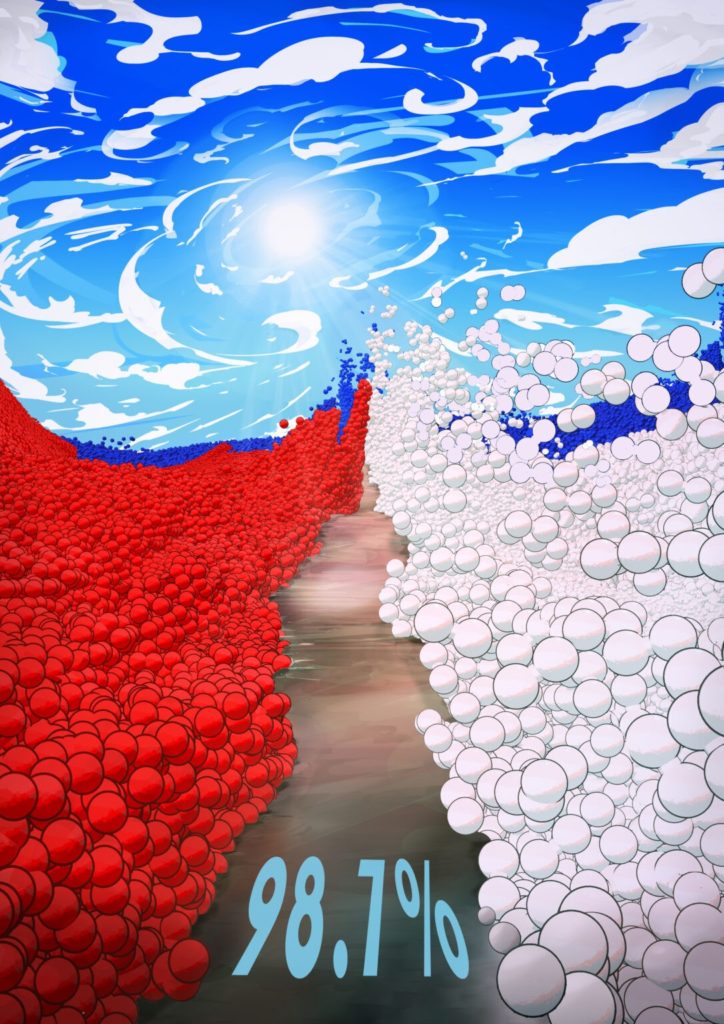
Gidi had a start-up company called Cellaris based on a unique foaming process developed in his lab, which can produce ceramic foams with a void fracture of about 98% (i.e., a durable material that is mostly air voids), which was sold to an Indian company that received the rights to use the process. In 2018, Prof. Gidi Garder, Prof. Avner Rothschild, and Dr. Chen Dotan founded H2Pro, which is based on the E-TAC process described above. The company started operating at the Technion with a small staff of 5 people, and then moved to its current site in Caesarea. The company deals with scale-up of the production process to industrial dimensions. Today, the company already has over 80 employees, many of them are Technion alumni. Just recently, a $75 million investment round was concluded that will enable the company to operate in the coming years and establish a manufacturing plant in the Galilee during 2023.
“There is no doubt that Process Engineering is at the core profession of Chemical Engineering,” says Gidi. “This core sets our discipline apart. The ability to scale-up chemical processes is a key pillar in the success of the ventures I have described, and in the success of other startups and the existing process industry. I highly recommend undergraduate students interested in graduate degrees to take the ‘final research’ course or a research project offered in our department, or work as a student in the labs of faculty members.”
“It is a great privilege to teach and perform exciting research at the Technion and at our department in particular with excellent students for many years,” says Gidi. “Our department is very family-like. We have been blessed with wonderful students who care about their friends, and the department. We have a lot of good will and a willingness to help each other, and we must preserve these qualities. I’d like to take this opportunity and ask our students to be our ambassadors outside the Technion, spreading the work about the exciting work that awaits additional candidate students.”
Seminar by Hanjie Xie
Seminar by Hanjie Xie on:
Room Temperature Oxidation of Formaldehyde over Bimetallic Oxides and Their Supported Catalysts
Online seminar via Zoom https://technion.zoom.us/j/98982676170
Seminar by Keren Shabtay
Seminar by Keren Shabtay on:
Pickering emulsions stabilized by shellac-based nanoparticles
Lecture Hall No. 6, Chemical Engineering
Seminar by Asaf Ben-Moshe
Seminar by Asaf Ben-Moshe on:
A few lessons that colloidal nanoparticles can teach us about dynamical chemical processes
Lecture Hall No. 6, Chemical Engineering
Seminar by Sivan Arber Raviv
Seminar by Sivan Arber Raviv on:
Lung Targeted Liposomes Loaded with Two Drugs in the Treatment of ARDS
Lecture Hall No. 6, Chemical Engineering
Seminar by Omer Adir
Seminar by Omer Adir on:
Synthetic Cells Communicate and Self-Activate Using Bioluminescent Signaling
Lecture Hall No. 6, Chemical Engineering
Seminar by Hanjie Xie
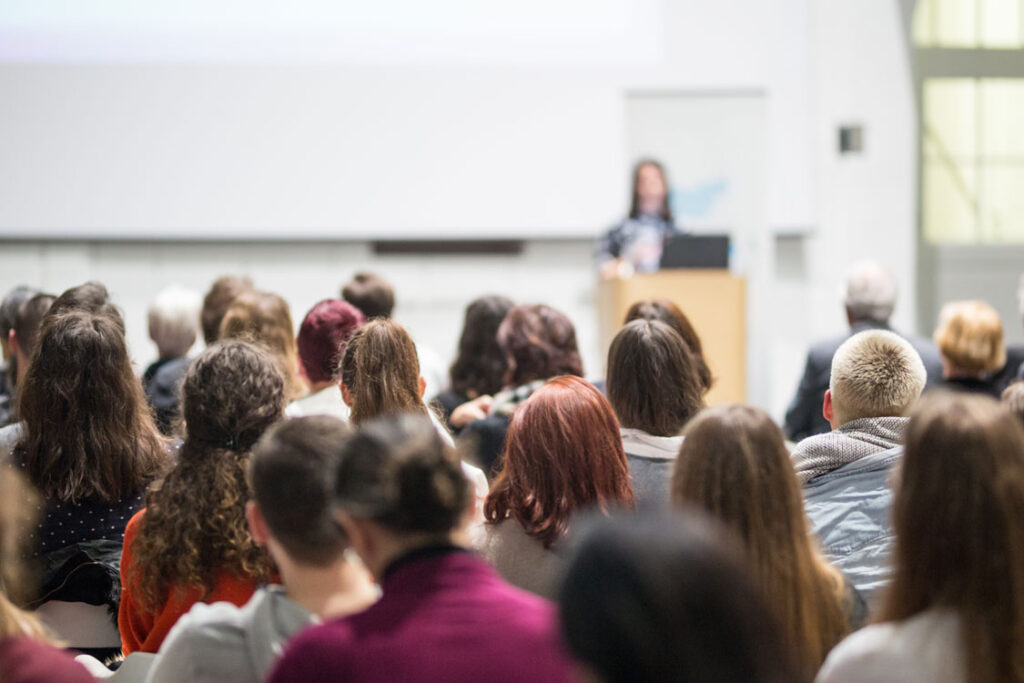
Seminar by Hanjie Xie on:
Room Temperature Oxidation of Formaldehyde over Bimetallic Oxides and Their Supported Catalysts
Online seminar via Zoomhttps://technion.zoom.us/j/98982676170
Seminar by Assoc. Prof. Konstantin Volokh
Assoc. Prof. Konstantin Volokh on:
Hybrid seminar- lecture hall #6 & Zoom
Seminar by Baicheng Yuan
Seminar by Baicheng Yuan on:
Online seminar via Zoom https://technion.zoom.us/j/98982676170
Seminar by Zihao Hong
Seminar by Zihao Hong on:
Online seminar via Zoom https://technion.zoom.us/j/98982676170
Seminar by Eitay Shtayinberg
Seminar by Eitay Shtayinberg on:
Lecture Hall No. 6, Chemical Engineering
Seminar by Omri Toker
Seminar by Omri Toker on:
Selective Photocatalytic Degradation of Hydrophobic Compounds in Aqueous Medium
Lecture Hall No. 6, Chemical Engineering
Seminar by Ruiying Li
Seminar by Ruiying Li on:
Mixed matrix membrane (MMM) made of interstitially sealed dense layers of MOF nanoparticles
Lecture Hall No. 6, Chemical Engineering
Seminar by Yunyan Huang
Seminar by Yunyan Huang on:
Lecture Hall No. 6, Chemical Engineering
Seminar by Yona Lee
Seminar by Yona Lee on:
Stability study of anion exchange membrane for fuel cell
Lecture Hall No. 6, Chemical Engineering
Seminar by Shelley Rapoport
Seminar by Shelley Rapoport on:
Nanomaterial-Based Field Effect Transistors for Detection of Chirality of Volatile Organic Compound
Lecture Hall No. 6, Chemical Engineering
Seminar by Baoting Huang
Seminar by Baoting Huang on:
Lecture Hall No. 6, Chemical Engineering
Seminar by Han Wang
Seminar by Han Wang on:
Supported Sn Catalyst in Glucose Isomerization to Fructose
Lecture Hall No. 6, Chemical Engineering
Seminar by Itay Zusmanovitch
Seminar by Itay Zusmanovitch on:
Bonelike composite scaffolds for vascular bone regeneration
Lecture Hall No. 6, Chemical Engineering
Seminar by Yuejun Yu
Seminar by Yuejun Yu on:
Lecture Hall No. 6, Chemical Engineering
Seminar by Lina Rozental
Seminar by Lina Rozental on:
Preparation, mechanics and particle deposition behavior of thin, low-fouling hydrogel coatings
Lecture Hall No. 6, Chemical Engineering
Seminar by Alexander Leontev
Seminar by Alexander Leontev on:
Lecture Hall No. 6, Chemical Engineering
Seminar by Avital Reizman
Seminar by Avital Reizman on:
Dynamic coating of one liquid by another by employing the Acoustowetting phenomenon
Lecture Hall No. 6, Chemical Engineering
Seminar by Arthur Doroshev
Seminar by Arthur Doroshev on:
Degradation of PEMFC cathode due to NO contamination, studied by
Distribution of Relaxation Times analysis
Lecture Hall No. 6, Chemical Engineering
Seminar by Reef Einoch Amor
Seminar by Reef Einoch Amor on:
Artificially Intelligent Nanoarray for Liquid Biopsy based on Volatile Organic Compounds
Lecture Hall No. 6, Chemical Engineering
056379 Membrane Process Laboratory
An elective course designed for both undergraduate and graduate studies and is held in a new format in a dedicated laboratory built for it. During the course, the teams will practice different and varied membrane processes such as: reverse osmosis, ultrafiltration, microfiltration, gas separation and pervaporation.
Experience in these fields is an important tool in both research work and industry.
054317 Laboratory in Thermodynamics B
This laboratory is part of a theoretical course in Thermodynamics B and replacing the laboratory of physical chemistry given in the past. The course is intended for students of chemical engineer ing and environmental engineering. The lab exercises were specially constructed and adapted to the material taught in class. Among other things, they will include a practice of the following topics:
- Henry’s Law and Fugacity
- Azeotrope
- Property changes of mixing (mixture properties)
- Phase separation
054316 Laboratory in Thermodynamics A
This laboratory is a part of a theoretical course in Thermodynamics A and replacing the laboratory of physical chemistry given in the past. The course is intended for students of chemical engineering and environmental engineering. The lab exercises were specially constructed and adapted to the material taught in class. They will include practice of the following topics:
- Heat capacity
- Ideal gas law
- Joule-Thomson effect
- The equation of state and the critical point
- Heat pumps
054400 Chemical Engineering Laboratory 2
Compulsory course for undergraduate students in the Faculty of Chemical Engineering. This laboratory is a continuation course of a laboratory for chemical engineering 1. During the course, students are practicing separation processes and reactors that were learnt in theoretical courses of reactor design and separation principles.
During the course, students experience teamwork and the operation of industrial systems on a laboratory scale, analyzing the results obtained and presenting a scientific presentation.
Some of the topics taught in the course are:
- Various reactors
- Chromatography
- Ion exchange
And many others.
054310 The Chemical Engineering Laboratory 1
Compulsory course for undergraduate students in the Faculty of Chemical Engineering. During the course the students practice the principles of heat transfer and flow processes. The material taught in theoretical courses of principles and separation processes.
During the course, the students experience teamwork and the operation of industrial systems on a laboratory scale, analysis of obtained results and submission of a scientific report.
Some of the topics taught in the course are:
- Flow processes
- Conduction and convection heat transfer
- Filtration
and many others.
Seminar by Jitendra N. Tiwari
Seminar by Jitendra N. Tiwari on:
Zoom seminar https://technion.zoom.us/j/91828389738
Meeting ID: 918 2838 9738
Seminar by Saja Haj Bsoul
Seminar by Saja Haj Bsoul on:
Lecture Hall No. 6, Chemical Engineering
Seminar by Mais Khaskia
Seminar by Mais Khaskia on:
Physical Properties of Colloidal Layered Double Hydroxides (LDH)
Lecture Hall No. 6, Chemical Engineering
Seminar by Yifan Li
Seminar by Yifan Li on:
Using Surface Acoustic Waves to eliminate the Polymer Coating of a Substrate
Lecture Hall No. 6, Chemical Engineering
Seminar by Samuel Alvarado-Salinas
Seminar by Samuel Alvarado-Salinas on:
Modified Layered Double Hydroxides as heterogeneous basic catalysts
Lecture hall No. 6, Chemical Engineering
Seminar by Asst. Prof. Hemi Rotenberg
Seminar by Asst. Prof. Hemi Rotenberg on:
Silicon Based Bio-Interfaces for Multi-scale Optical Modulation
Lecture Hall No. 1- Biotechnology & Food Engineering
Seminar by Prof. Emeritus Joshua Dayan
Seminar by Prof. Emeritus Joshua Dayan on:
Gasification of Biomass, Organic Waste and Low-Grade Fossil Fuels
Overview and Research Description
Eli Rubin Memorial Lecture ,Wolfson Department of Chemical Engineering, Lecture Hall #6
Seminar by Prof. Emer. Avi Marmur
Seminar by Prof. Emer. Avi Marmur on:
Lecture hall No. 6, Chemical Engineering (under Green Pass regulations)
Seminar by Netta Vidavsky
Seminar by Netta Vidavsky on:
Mineralization in the tumor microenvironment
Lecture hall No. 6, Chemical Engineering (under Green Pass regulations)
Seminar by Guy Mechrez
Seminar by Guy Mechrez on:
Pickering Emulsions for Food and Agriculture
Online seminar via Zoom https://technion.zoom.us/j/97591164072
Seminar by Mor Politi
Seminar by Mor Politi on:
Online seminar via Zoom https://technion.zoom.us/j/97591164072
Seminar by Rotem Azoulay
Seminar by Rotem Azoulay on:
Spatially Controlled Inorganic Growth within Polymeric Templates
Online seminar via Zoom https://technion.zoom.us/j/97591164072
Seminar by Ianovici Ron
Seminar by Ianovici Ron on:
Detection Volatile Organic Compounds in Liquid for Monitoring Health
Online seminar via Zoom https://technion.zoom.us/j/97591164072
Seminar by Asst. Prof. Christopher Arges
Seminar by Asst. Prof. Christopher Arges on:
Electrochemistry with Model Thin Film Polymer Electrolytes
Online seminar via Zoom https://technion.zoom.us/j/97591164072
Seminar by Dr. Yuk Man Lau
Seminar by Dr. Yuk Man Lau on:
“Turbulent Bubbly Flow Modelling and Visualization”
Zoom Seminar ID: https://technion.zoom.us/j/95965660387
Seminar by Dr. Arijit Ghosh
Seminar by Dr. Arijit Ghosh on:
Bioinspired microrobots for applications in medicine
Online seminar via Zoom https://technion.zoom.us/j/97591164072
054369 Polymer engineering Lab
An elective course designed for both undergraduate and graduate studies.
As part of the course, basic topics in the field of polymers will be covered:
- Polymerization and crosslinking
- Polymer characterization methods
- Polymer fabrication processes
These topics are the basis for research and / or industrial work in the field of polymer engineering.
The polymer industry in Israel is diverse and offers many employment opportunities.
The course is given in the format of practical laboratories.
Seminar by Yehu David Horev
Seminar by Yehu David Horev on:
Highly Stretchable Sensing Platforms for Future Electronic Skin
Online seminar via Zoom https://technion.zoom.us/j/97591164072
Seminar by Dr. Fei Guo
Seminar by Dr. Fei Guo on:
“Creation and Application of Novel Membrane Materials
through Solution Processing”
Zoom seminar / Zoom Meeting – https://technion.zoom.us/j/97485793831
Seminar by Elias Mansour
Seminar by Elias Mansour on:
Smart Sensing Patches for Monitoring Psychological Stress
Online seminar via Zoom https://technion.zoom.us/j/97591164072
Seminar by Dr. Jingbo Li
Seminar by Dr. Jingbo Li on:
“Synthesis of high-titer alka(e)nes in Yarrowia lipolytica
is enabled by a discovered mechanism”
Zoom seminar / https://technion.zoom.us/j/91637548930
Meeting ID: 916 3754 8930
Seminar by Eden Bitkover
Seminar by Eden Bitkover on:
Developing a long-term polymeric controlled release system
Online seminar via Zoom https://technion.zoom.us/j/93319981911
Meeting for those interested in a bachelor’s degree
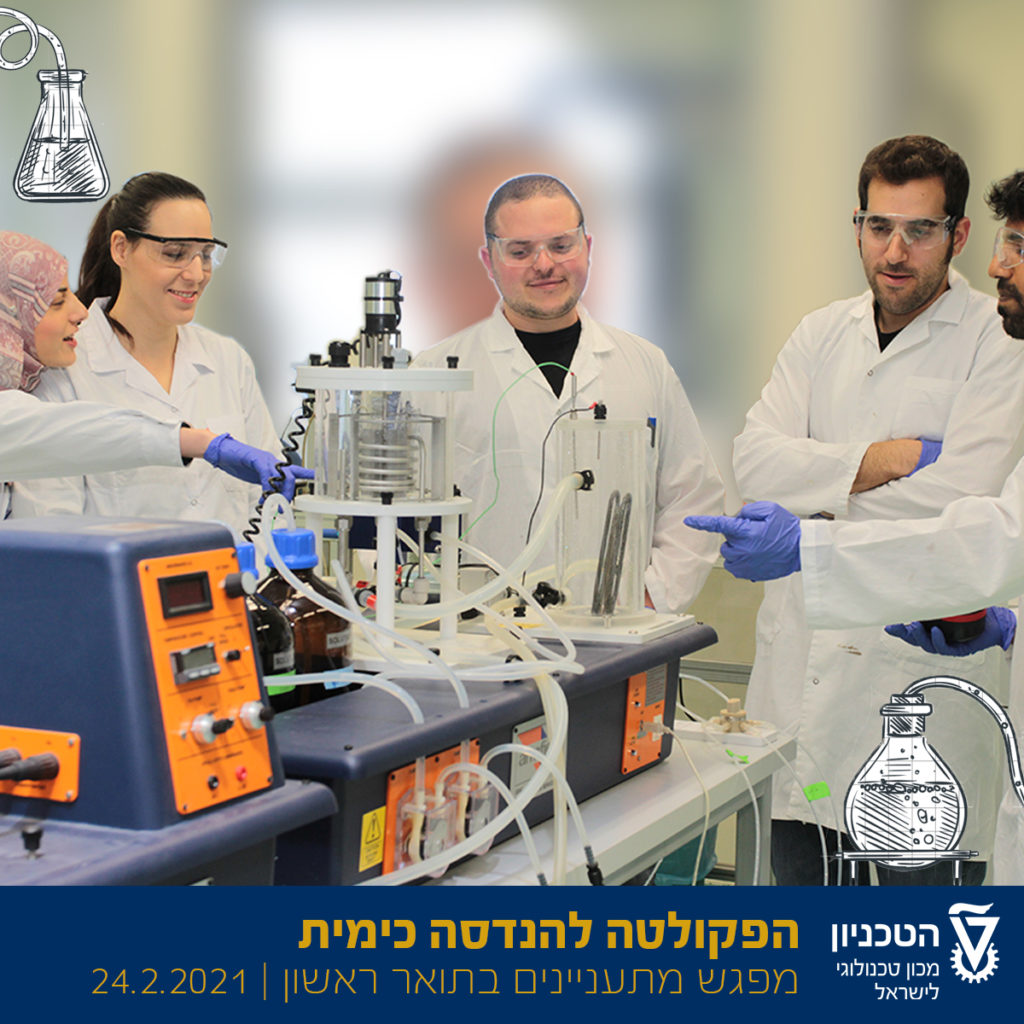
The Wolfson Faculty of Chemical Engineering invites you to a meeting of those interested in a bachelor's degree at the Technion.
to enroll click the link:
https://techlead.technion.ac.il/1chemeng
Seminar by Dr. Yan Wang
Seminar by Dr. Yan Wang on:
“Green Nanomaterials for Epidermal Optoelectronics”
Zoom seminar / Zoom Meeting https://technion.zoom.us/j/96671579697
Meeting ID: 966 7157 9697
Seminar by Dr. Michael Levy
Seminar by Dr. Michael Levy on:
Autonomous synthesis and assembly of a ribosomal subunit on a chip
Online seminar via Zoom https://technion.zoom.us/j/98183273667
Seminar by Tuan Duong
Seminar by Tuan Duong on:
Developing nanomaterial-based sensors to detect chemical and biological threats inside containers
Online seminar via Zoom https://technion.zoom.us/j/97591164072
Seminar by Dr. Dekel Rosenfeld
Seminar by Dr. Dekel Rosenfeld on:
Next-generation approaches for peripheral organ modulation
Online seminar via Zoom https://technion.zoom.us/j/99168573895
Seminar by Prof. Ehud Gazit
Seminar by Prof. Ehud Gazit on:
online seminar via zoom https://technion.zoom.us/j/97591164072
Seminar by Shay Sherbo
Seminar by Shay Sherbo on:
Fatty liver disease prediction and prevention using a wearable sensor
Online seminar via Zoom https://technion.zoom.us/j/97591164072
Seminar by Shaked Eliyahu
Seminar by Shaked Eliyahu on:
” Nanometric Mucoadhesive Carriers for Macromolecule Delivery”
Online seminar via Zoom https://technion.zoom.us/j/97591164072
Seminar by Maor Diminsky
Seminar by Maor Diminsky on:
Circular Economy – a Sustainable Solution for Waste Management
Online seminar via Zoom https://technion.zoom.us/j/97591164072
Seminar by Dr. Stu Soled
Seminar by Dr. Stu Soled on:
Research in an Industrial Catalysis World: A Personal Perspective
https://technion.zoom.us/j/97591164072 Online seminar via Zoom
Seminar by Dr. Tibing Xu
Seminar by Dr. Tibing Xu on:
“Development of the high-performance mesh-free method to simulatefluid flows”
Zoom Seminar ID – https://technion.zoom.us/j/94709017096
Seminar by Gal Avioz Cohen
Seminar by Gal Avioz Cohen on:
Online seminar via Zoom https://technion.zoom.us/j/96214023785
Seminar by Prof. h.c. Dr. Mato Knez
Seminar by Prof. h.c. Dr. Mato Knez on:
Atomic Layer Processing: A toolbox for fabricating novel functional hybrid materials
Online seminar via Zoom https://technion.zoom.us/j/97591164072
Seminar by Dr. Matvey Morozov
Seminar by Dr. Matvey Morozov on:
Symmetry breaking in chemically active microdrops grants an insight into interfacial chemistry
Online seminar via Zoom https://technion.zoom.us/j/98564049502
Seminar by Christine Khoury
Seminar by Christine Khoury on:
Development of grafted acid-base catalysts for biomass related transformations
Online seminar via Zoom https://technion.zoom.us/j/97591164072
Seminar by Gina Cohen
Seminar by Gina Cohen on:
Online seminar via Zoom https://technion.zoom.us/j/97591164072
Seminar by Prof. Thomas H. Epps, III
Seminar by Prof. Thomas H. Epps, III on:
From Biomass Waste to Performance-Advantaged Polymers: Efficient Routes to Lignin Valorization
Online seminar via Zoom https://technion.zoom.us/j/97591164072
Seminar by Aseel Shomar
Seminar by Aseel Shomar on:
Local and global features of genetic networks supporting a phenotypic switch
Online seminar via Zoom https://technion.zoom.us/j/97591164072
Seminar by Layan Habib
Seminar by Layan Habib on:
Design of a novel mucoadhesive system based on freeze-dried liposomes for local drug delivery
Online seminar via Zoom https://technion.zoom.us/j/97591164072
Seminar by Dr. Sam Root
Seminar by Dr. Sam Root on:
Multiscale Engineering of Polymer Films for Soft Devices
Online seminar via Zoom https://technion.zoom.us/j/99456993920
Seminar by Maya Kaduri
Seminar by Maya Kaduri on:
Using nanotechnology to target cancer associated neurons as a tool for treating breast cancer
Online seminar via Zoom https://technion.zoom.us/j/97591164072
Seminar by Ziv Golany
Seminar by Ziv Golany on:
Dewetting of polymer films in non-solvent – solvent environment
New approach for polymer patterning
Online seminar via Zoom https://technion.zoom.us/j/98183031130
Seminar by Tamar Itzhak
Seminar by Tamar Itzhak on:
Online seminar via Zoom https://technion.zoom.us/j/96618274472
Seminar by Ariel Odess
Seminar by Ariel Odess on:
Nafion/PVDF membranes with enhanced through-plane conductivity
Online seminar via Zoom https://technion.zoom.us/j/92090559126
Seminar by Itamar Benisti
Seminar by Itamar Benisti on:
Measuring transient phenomena in photoactive materials by FTIR
Online seminar via Zoom https://technion.zoom.us/j/94720354105
Seminar by Dr. Xi Gao
Seminar by Dr. Xi Gao on:
On line seminar via ZOOM – https://technion.zoom.us/j/98714206433
Seminar by Jingsi (James) Yang
seminar by Jingsi (James) Yang on:
Hydrodynamic Study in a Shallow Rectangular Spouted Bed Using Image Analysis and Pressure Signals
On line seminar via ZOOM / https://technion.zoom.us/j/2418571512
Seminar by Anna Breytus
Seminar by Anna breyus on:
Donnan process for nitrate removal from contaminated water
Online seminar via Zoom https://technion.zoom.us/j/91975672066
Seminar by Assis. Prof. Yuhe Cao
Seminar by Assis. Prof. Yuhe Cao on:
Carbon materials for butanol vapor adsorption and natural gas separation
On line seminar via ZOOM – https://technion.zoom.us/j/95256547611
Seminar by Assis. Prof. Peng Xu
Seminar by Assis. Prof. Peng Xu on:
On line seminar via ZOOM – https://technion.zoom.us/j/2418571512
Seminar by Prof. Guy Ramon
Eli Rubin Memorial Lecture by Prof. Guy Ramon on
Online seminar via Zoom https://technion.zoom.us/j/92569978744
Seminar by Muhammad Khatib
Advanced Electronic Sensing Platforms with Skin-Like Capabilities
in Lecture Hall no. 6
Seminar by Dr. Ben Bikson
Seminar by Dr. Ben Bikson on
Preparation and Morphology of Porous Poly (aryl ether ketone) Materials
in Lecture Hall no.6
Seminar by Irina Davidovich
Seminar by Irina Davidovich on
The study of microemulsion nanostructure by cryogenic electron microscopy
in Lecture Hall no. 6
Seminar by Peleg Ragonis
Seminar by Peleg Ragonis on
Shear-induced particle migration in viscous fluids
in Lecture hall no. 6
Seminar by Yulia Shitrit
Seminar by Yulia Shitrit on
Shear thinning pectin hydrogels physically cross-linked with chitosan nanogels
in Lecture Hall no. 6
Seminar by Shabtai Hadash
Seminar by Shabtai Hadash on
Fiber-based anodes for decoupled water splitting for H2 production
In lecture hall no. 6
Seminar by Mohit Singh
Seminar by Mohit Singh on
High-Speed Imaging of Rayleigh Breakup of a Charged Droplet Levitated in an Electrodynamic Balance
in classroom no. 4
Seminar by Hanan Abumanhal-Masarweh
Seminar by Hanan Abumanhal-Masarweh on
Targeting the tumor microenvironment with nanotechnology
in Lecture Hall no. 6
Seminar by Mohammad Abo Jabal
Seminar by Mohammad Abo Jabal on
“Dynamic wetting-dewetting during the evaporation of volatile polymer solution and binary mixtures”
in Lecture Hall no. 6
Seminar by Erez Tamir
Seminar by Erez Tamir on
“Viscoelastic Properties Prediction of Fluoropolymers through Multiscale Modeling”
in Lecture Hall no. 6
Seminar by Dr. Shay Stern
Seminar by Dr. Shay Stern on
Uncovering the basis of behavioral variation across developmental timescales
in Lecture Hall no. 6
Seminar by Michael D. Ward
Seminar by Michael D. Ward on
“Stopping Crystal Growth in its Tracks: Preventing Disease and Other Crystal Mysteries”
in Lecture Hall no. 6
Special seminar by Mr. Rami Busool
Special seminar by Mr. Rami Busool on “Wearable Chemical Sensors for Monitoring of Infectious Diseases”
in Lecture Hall no. 6
Faculty of Chemical Engineering – Retreat

Click here for schedule
Seminar by Sapir Willdorf-Cohen
Seminar by Sapir Willdorf-Cohen on “Ionomer Stability Studies for Anion-Exchange Membrane Fuel Cells”
in Lecture Hall no. 6
Seminar by Dr. Elinor Josef
Seminar by Dr. Elinor Josef on “Poly(ionic liquid)s as designer polyelectrolytes”
in Lecture Hall no. 6
Seminar by Assist. Prof. Ofer Manor
Seminar by Assist. Prof. Ofer Manor on “Strange Dynamics of Wetting”
in Lecture hall no. 6
Seminar by Dr. Liming Yang
Seminar by Dr. Liming Yang on Atmospheric Dicarboxylic Acids: Characterization, Transformation, and Implications
in lecture hall 6
Seminar by Dr. Niranjan Patra
Seminar by Dr. Niranjan Patra on “Towards high-performance composites based on carbon/carbides nanomaterials”
in Lecture Hall no. 6
Special seminar by Mr. Israel Zadok
Special seminar by Mr. Israel Zadok on
in Lecture Hall no. 6
Seminar by Prof. David S. Rumschitzki
Seminar by Prof. David S. Rumschitzki on
in Lecture Hall no. 6
Congratulations to Prof. Emeritus Yeshayhu (Ishi) Talmon
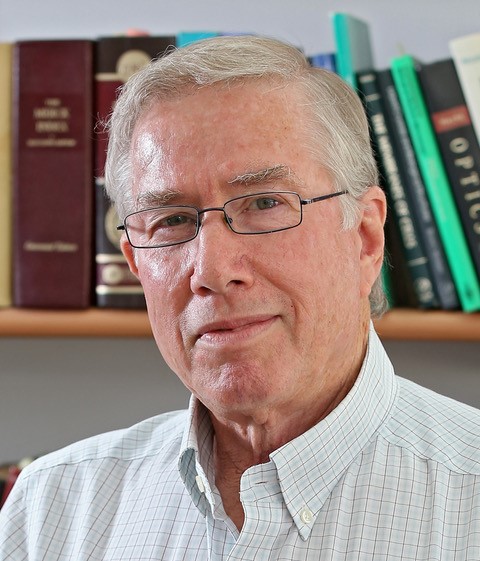
Congratulations to Prof. Emeritus Yeshayhu (Ishi) Talmon for receiving the
Overbeek Gold Medal for
“Cryo-EM of Complex Liquids: A brief History and the State-of-the-Technology” for 2019
to view click here
Seminar by Bar Mosevitzky
Seminar by Bar Mosevitzky on
“Combustion Kinetics of Nitrogen-Based Alternative Fuels “
in Lecture Hall no. 6
Seminar by Naseem S. Hayek
Seminar by Naseem S. Hayek on
“Oxidative Coupling of Methane over Doped Mn-Na-W/SiO2 Catalyst “
in Lecture Hall no. 6
Special seminar by Prof. Warren J. Jasper
Special seminar by Prof. Warren J. Jasper on
“Dependence of Contact Angle on Droplet Volume: Why Theory Fails to Agree with Experimental Data”
in Lecture Hall no. 6
Seminar by Raya Sorkin
Seminar by Raya Sorkin on
“Membrane remodelling in life processes: Unravelling membrane interactions, one vesicle at a time”
in Lecture Hall no. 6
Seminar by Lucy Liberman
Seminar by Lucy Liberman on
in Lecture Hall no. 6
Memorial lecture in honor of Prof. Eli Rubin by Prof. Ilya Zharov
Memorial lecture in honor of Prof. Eli Rubin by Prof. Ilya Zharov on
“Functional nanoporous materials from “hairy” nanoparticle building blocks”
in Lecture Hall no. 6
Special Seminar by Ashima Kajal
Special Seminar by Ashima Kajal on
“Personalized Nanomedicine for Treating Metastatic Cancer”
In Hall 108
Special seminar by Dr. Xuezhong He
Special seminar by Dr. Xuezhong He on
“Membranes for CO2 Separation: from Fundamental Researches to Industrial Applications “
in Lecture Hall no. 6
Special seminar by Dr. Taejin Kim
Special seminar by Dr. Taejin Kim on
“Heterogeneous Catalysis: Energy and Environmental Application”
in Lecture Hall no. 6
Seminar by Maksim Mezhericher
Seminar by Maksim Mezhericher on
“Engineering and Synthesis of Nanomaterials Using Submicron Droplet Aerosols”
in Lecture Hall no. 6
Seminar by Itamar Benisti
Seminar by Itamar Benisti on
“Measuring transient phenomena in photoactive materials by FTIR “
in Lecture Hall no. 6
Seminar by Prof. Tatiana Gambaryan-Roisman
Seminar by Prof. Tatiana Gambaryan-Roisman on
“Modelling complex wetting phenomena”
in Lecture Hall no. 6
Special Seminar by Judah Makover
Special Seminar by Judah Makover on
“Nitrate removal from high salinity solutions by electrolytic methods”
in the meeting room, 3rd floor
Special seminar by Prof. Olga Guerrero-Pérez
Special seminar by Prof. Olga Guerrero-Pérez on
“Environmental Catalysis with Group Five based materials”
in the meeting room, 3rd floor
Special seminar by Irena Levin
Special seminar by Irena Levin on
“Polymer adsorption on the surface of carbon nanotubes”
in Lecure Hall no. 6
Special seminar by Prof. Dr. Uwe Thiele
Special seminar by Prof. Dr. Uwe Thiele on
“Long-wave modelling of spreading biofilms”
in Lecture Hall no. 6
Open Day to hear about the MSc and PhD programs at the faculty
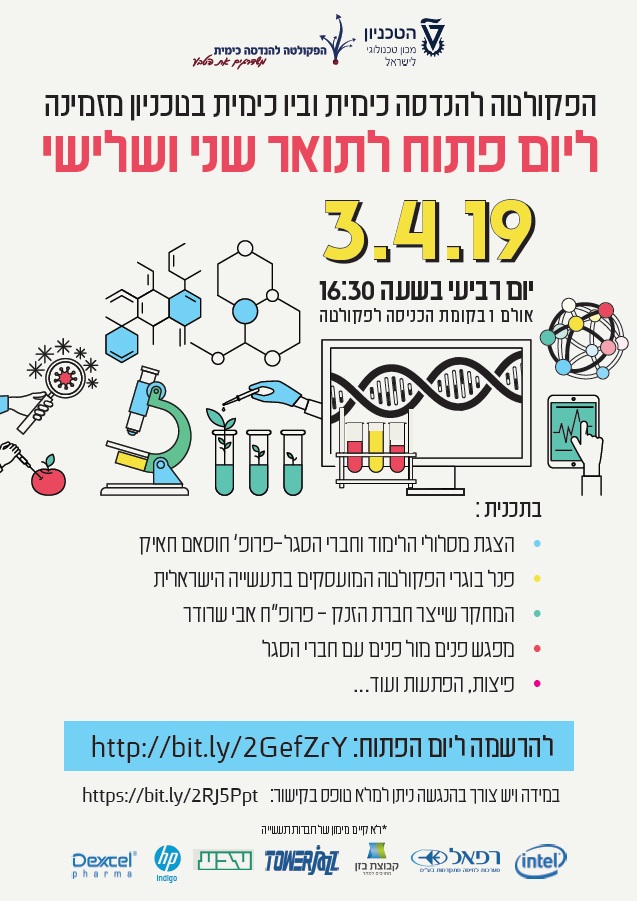
Our program:
– Presentation of graduate study programs and research fields – Prof. Hossam Haick
– Discussion with prior faculty graduates from the Israeli industry
– Research lead to Start-up – Assoc. Prof. Avi Schroeder
– Face to face talk with faculty staff members.
– Pizza, surprises and more…
If There is a need for accessibility services, please download the attached form and send it back by e-mail: ce.gsec@technion.ac.il
Registration form – http://bit.ly/2RNX0dZ
Functional Nanostructures and Advanced Imaging
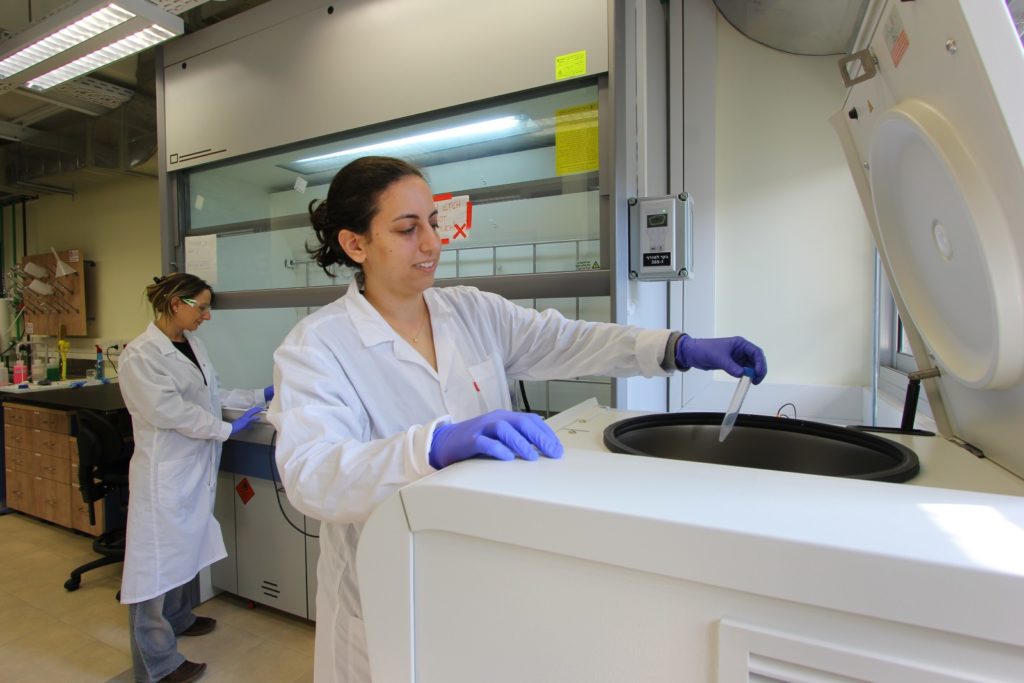
Functional nanostructures are the enabling basis for today’s and tomorrow’s nanotechnology. Our research group focuses development of novel functional nanostructures in a wide array of applications, ranging from semiconductor nano-manufacturing and optical materials to energy and clean water production. We combine research in polymer systems, block copolymer self-assembly, inorganic materials growth inside polymers, and complex liquid-nanoparticles systems together with advanced characterizations technique such as TEM imaging, 3D characterization with TEM tomography, and X-ray scattering to understand and control the next generation of functional nanostructures.
Functional Nanostructures and Advanced Imaging Lab
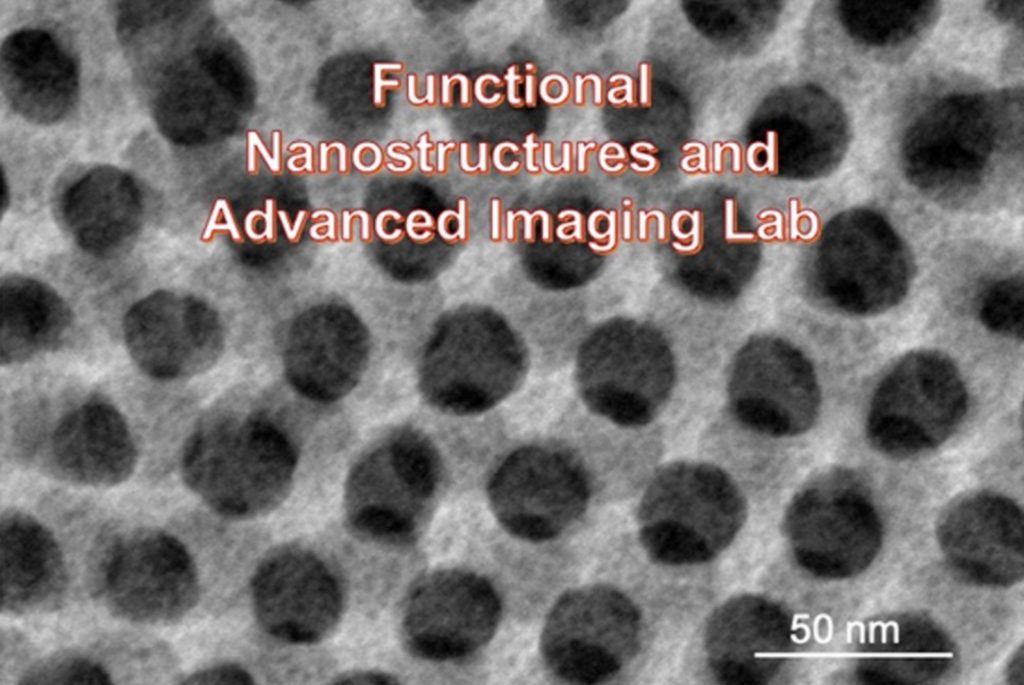
Functional nanostructures are the enabling basis for today’s and tomorrow’s nanotechnology. Our research group focuses development of novel functional nanostructures in a wide array of applications, ranging from semiconductor nano-manufacturing and optical materials to energy and clean water production. We combine research in polymer systems, block copolymer self-assembly, inorganic materials growth inside polymers, and complex liquid-nanoparticles systems together with advanced characterizations technique such as TEM imaging, 3D characterization with TEM tomography, and X-ray scattering to understand and control the next generation of functional nanostructures.
Special seminar by Amihai Horesh
Special seminar by Amihai Horesh on
“Acoustic Stabilization and Enhanced de-Stabilization of Single Bubbles in Microfluidics”
in Lecture Hall no. 6
Special seminar by Prof. Volker Abetz
Special seminar by Prof. Volker Abetz on
“Self-assembly of block copolymers in solutions and films “
in the meeting room, 3rd floor
Seminar by Bo Kong
Seminar by Bo Kong on
“Multiphase Flow CFD Simulations for Chemical Reaction Engineering”
in Lecture Hall no. 6
Seminar by Yoav Shechtman
Seminar by Yoav Shechtman on
“Microscopic particle localization in 3D and in multicolor”
in Lecture Hall no. 6
Seminar by Elinor Josef
Seminar by Elinor Josef on
“From Electrospinning Poly(ionic liquid)s to Conductive Carbon Fibers”
in Lecture Hall no.6
Seminar by Yoav Green
Seminar by Yoav Green on
“The fluid dynamics of nanochannels and biological systems”
in Lecture Hall no. 6
Seminar by Rea Lavi
Seminar by Rea Lavi on
“Solving Novel Problems in Chemical Engineering using Systems Thinking and Creative Thinking”
in Lecture Hall no. 6
Special seminar by Luisa DE COLA
Special seminar by Luisa DE COLA on
“Self-assembled and breakable materials for medical applications”
in Lecture Hall no. 1
Seminar by Prof. Jonathan P. Singer
Seminar by Prof. Jonathan P. Singer on
“Thermocapillary and Electrostatic Manipulation of Soft Matter for Micro/Nanomanufacturing”
in Lecture Hall no. 6
Seminar by Prof. Kinneret Keren
Seminar by Prof. Kinneret Keren on
“Hydra regeneration: actin dynamics and the influence of mechanical constraints “
in Lecture Hall no. 6
Seminar by Rotem Vishinkin
Seminar by Rotem Vishinkin on
“Adhesive Sensors for Detection of Tuberculosis from Skin”
in Lecture Hall no. 6
Special seminar by Roi Bar-On
Special seminar by Roi Bar-On on
in meeting room, 3rd floor
Seminar by Yulia Poshumensky-Shitrit
Seminar by Yulia Poshumensky-Shitrit on
” Hydrogels physically cross-linked with nanogels”
in Lecture Hall no. 6
הנדסת ביוטכנולוגיה
הנדסת ביוטכנולוגיה והנדסה כימית – מה ההבדל?
הנדסת ביוטכנולוגיה היא תחום חדשני המשלב ידע מתחומי הביולוגיה וההנדסה על מנת ליצור ידע מעשי ולפתח מוצרים בתחום הרפואה, החקלאות והמזון.
מספר דוגמאות לביוטכנולוגיה מודרנית הן פיתוח תרופות ונוגדנים, טכנולוגיות של הנדסה גנטית, הנדסת רקמות ועוד. למעשה, הן במסלולי הלימוד המקנים תואר ראשון בהנדסת ביוטכנולוגיה והן במסלול הלימוד להנדסה ביוכימית, לומדים קורסים בביולוגיה וקורסים בהנדסה, אשר השילוב ביניהם מכשיר את הבוגר לעיסוק בתעשיית הביוטכנולוגיה.
אם כך, מהו ההבדל בין הנדסת ביוטכנולוגיה להנדסה ביוכימית?
בפקולטה להנדסה כימית אנו מכירים בעובדה שבעוד שתעשיית הביוטכנולוגיה היא תעשייה מודרנית ומרתקת, מספר אפשרויות התעסוקה בתחום זה עדיין מוגבלות. זאת ועוד, מרבית המעסיקים הם חברות הזנק קטנות (סטארט-אפים) אשר אופי העבודה בהן אינו מתאים לכל אחד. לכן המהנדסים הביוכימיים לומדים קורסים בסיסיים בהנדסת תהליך, בדומה למהנדס כימיה, בנוסף להכשרה רחבה בביולוגיה וביוטכנולוגיה. במידה וירצו בכך, או לא ימצאו תעסוקה הולמת בתחום הביוטכנולוגיה, בוגרי הנדסה ביוכימית יוכלו למצוא תעסוקה בתחומים אחרים של ההנדסה הכימית. כך למשל ישנן בשוק כיום מספר חברות סטארט-אפ בולטות שיזמו חברי סגל בפקולטה ובהן עובדים סטודנטים בוגרים שלנו, לדוגמא:
Advanced Medical Solutions Israel (Sealantis) ltd מפתחת דבקים ליישומים רפואיים אשר פותחו בהשראת מנגנון ההדבקה של האצות. הטכנולוגיה היא פרי מחקר שהתקיים במעבדתה של פרופ’ חבצלת ביאנקו-פלד, אשר הצריך שילוב של עולמות ידע שונים מתחום ההנדסה הכימית, הנדסת החומרים והביוטכנולוגיה. קו המוצרים של החברה כולל דבקים יעילים, קלים ליישום ובלתי רעילים ליישומים שונים ובפרט מניעת דימומים ומניעת דליפות ממערכת העיכול לאחר ניתוחים.

- מעוניינים לשמוע עוד פרטים ולקבל הכוונה אישית בעניין לימודי הנדסת ביוטכנולוגיה? לחצו כאן.
Seminar by Anna Breytus
Seminar by Anna Breytus on
“Nitrate removal from aqueous solutions by Donnan dialysis “
in lecture hall no. 6
Seminar by Prof. Avi Nir
Seminar by Prof. Avi Nir on
“On deformation of drops and bubbles in viscous fluids”
in Lecture Hall no. 6
Special seminar by Idan Itzhak Calo
Special seminar by Idan Izhak Calo on
“Catalytic Pollutants Abatement from Nitrogen Based Fuel Combustion”
in Lecture Hall no. 6
Special seminar by Yitzhak Tzvi
Special seminar by Yitzhak Tzvi on
in Lecture Hall no. 6
Special seminar by Shoval Gilboa
Special seminar by Shoval Gilboa on
in Lecture Hall no. 6
Special seminar by Gilad Alfassi
Special seminar by Gilad Alfassi on
“PROCESS FOR ENZYMATIC DEGRADATION OF CELLULOSE”
in Lecture Hall no. 6
Special seminar by Marina Lisitsin-Shmulevsky
Special seminar by Marina Lisitsin-Shmulevsky on
“Development of hybrid high recovery MSF desalination process”
in room no. 108
Special seminar by Prof. David Jassby
Special seminar by Prof. David Jasby on
“Electrochemistry and Membrane-Based Water Treatment: Synergies and Challenges”
in classroom no. 3
Special seminar by Prof. Krishnaswamy Nandakumar
Special seminar by Prof. Krishnaswamy Nandakumar on
“Advanced Computational Modelling Framework for Design Innovations in Process Industries”
in Lecture Hall no. 6
Special seminar by Prof. Sergio Kapusta
Special seminar by Prof. Sergio Kapusta on
“Energy revolution: what it means for Israel?”
in Lecture Hall no. 6
Special seminar by Jiaxing (Jeccy) Sun
Special seminar by Jiaxing (Jeccy) Sun on
in Lecture Hall no. 6
Seminar by Enas Saad Basher
Seminar by Enas Saad Basher on
“REMOVAL OF PHOSPHATE FROM WASTEWATER BY ADSORPTION ON FLUIDIZED BED CALCITE PARTICLES”
in Lecture Hall no. 6
Seminar by Nitzan Melki-Dabush
Seminar by Nitzan Melki-Dabush on
“Removal of inorganic water contaminates by iron oxide”
in Lecture Hall no. 6
Seminar by Mohammad Abo Jabal
Seminar by Mohammad Abo Jabel on
in Lecture Hall no. 6
Seminar by Prof. David Zitoun
Seminar by Prof. David Zitoun on
“Catalyst Design and Electrochemical Activation: Application to Water Splitting”
in Lecture Hall no.6
Seminar by Alon Ben Refael
Seminar by Alon Ben Refael on
“Photoactivity Study on Graphitic Carbon Nitride”
in Lecture Hall no. 6
Special seminar by Guoliang (Greg) Liu
Special seminar by Guoliang (Greg) Liu on
“Block Copolymer-based Porous Carbon Fibers and Plasmonic Nanoparticles ”
Reznik Hall (3rd floor meeting room
Seminar by David S. A. Simakov
Seminar by David S .A. Simakov on
“Thermocatalytic conversion of CO2 into renewable synthetic fuels”
in Lecture Hall no. 6
Faculty Trip pictures 26-04-2018
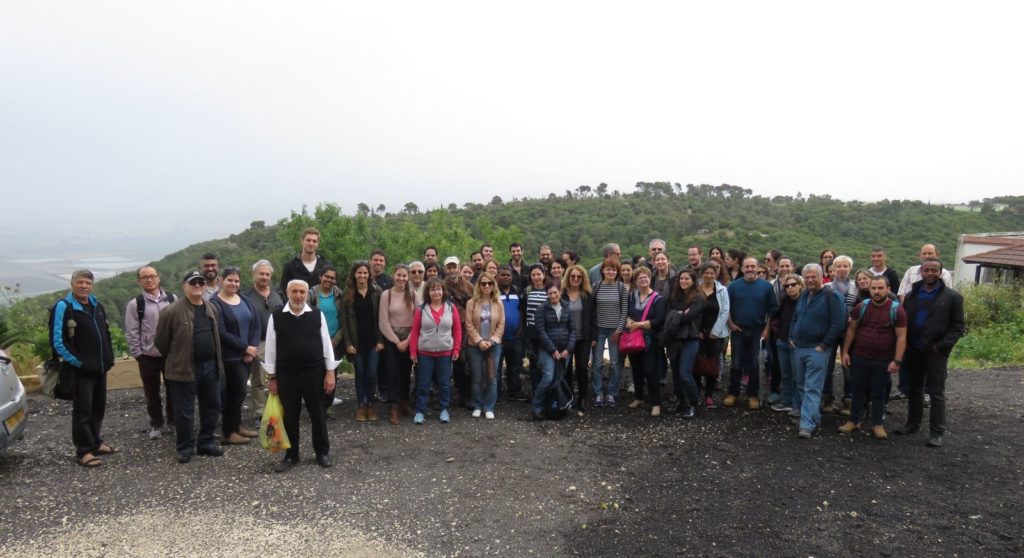
To view the pictures click here
Seminar by Yasmine Shibli
Seminar by Yasmine Shibli on
“VOCs as a tool for the assessment of embryos in IVF”
in Lecture Hall no. 6
Seminar by Ariela Tarnapolsky
Seminar by Ariela Tarnapolsky on
“Understanding QCM-D response to deposition and attachment of bacteria and particles on surfaces”
in Lecture Hall no. 6
Seminar by Dr. Enrico Marsili
Seminar by Dr. Enrico Marsili
on “Beyond Microbial Fuel Cells: ElectroMicrobiology and its applications”
in Lecture Hall no. 6
Seminar by Dr. Pola Goldberg Oppenheimer
Seminar by Dr. Pola Goldberg Oppenheimer
on “Hierarchical Electrohydrodynamic Lithography for Advanced Miniaturised Devices”
in room no. 108
Seminar by Prof. Maytal Caspary Toroker
Seminar by Prof. Maytal Caspary Toroker
on “Advances in modeling water splitting with iron oxide ”
in Lecture Hall no. 6
Seminar by Dr. Lior Elbaz
Seminar by Dr. Lior Elbaz on
“Recent Advances in Electrocatalysis of Oxygen Reduction in Fuel Cells using Metallo-corroles“
in Lecture Hall 6
Special seminar by Zvi Yaari
Special seminar by Zvi Yaari on
“Developing Barcoded Nanotherapeutics for Treating Metastatic Cancer”
in Lecture Hall no. 6
Seminar by Avi Ya’akobovich
Seminar by Avi Ya’akobovich on
Structure and characteristics of epoxy/CNT Mats and Fibers
in Lecture Hall no. 6
Memorial lecture in honor of Prof. Eli Rubin by Prof.Bedrikovetsky
Memorial lecture in honor of Prof. Eli Rubin by Prof.Bedrikovetsky on
“Suspension-colloidal transport in porous media:petroleum and environmental applications”
in Lecture Hall no. 6
Special seminar by Srdjan Pusara
Special seminar by Srdjan Pusara on
“Molecular dynamics simulations of QA-OH salts at low hydration”
in Lecture Hall no. 6
Special seminar by Shuo Zhang
Special seminar by Shuo Zhang on
“Characterization of Anion Exchange Ionomers for Fuel Cell Applications”
in Lecture Hall no. 6
Seminar by Youri Gendel
Seminar by Youri Gendel on
“Chlorine-free alkaline seawater electrolysis for hydrogen production”
in Lecture Hall no. 6
Seminar by Prof. William E. Mustain
Seminar by Prof. William Mustain on “Understanding and Advancing Metal Oxide Anode Materials for Li-Ion Batteries”
in Lecture Hall no. 6
Seminar by Assistant Prof. David Eisenberg
Seminar by Assistant Prof. David Eisenberg on
“Rational Design of Carbon Electrocatalysts: Synthesis, Structure, Activity”
in Lecture Hall no. 6
Special seminar by Naomi Oppenheimer
Special seminar by Naomi Oppenheimer on
“Beyond Stokes’ law — motion of a sphere in a viscous fluid”
in the meeting room (3rd floor)
Seminar by Yoram Ilan-Lipovsky and Shlomo Alkaher
Seminar by Yoram Ilan-Lipovsky and Shlomo Alkaher on
” HyDrop™ – Aerial Firefighting System“
in Lecture Hall no. 6
Seminar by Assaf Zinger
Seminar by Assaf Zinger on
in Lecture Hall no. 6
Seminar by Yiwei Zheng
Seminar by Yiwei Zheng on “Water absorption isotherms and kinetics of anion exchange membranes ”
in Lecture Hall no. 6
Faculty Research Day
Registration for the Research Day: CLICK HERE
Special seminar by Karen Tankus
Special seminar by Karen Tankus on
“Critical Oil-water separation using carbon – based membranes”
in Lecture Hall no. 6
Special seminar by Naseem Hayek
Special seminar by Naseem Hayek on
in Lecture Hall no. 6
Special seminar by Zach Shidlovsky
Special seminar by Zach Shidlovsky on
“Using reporting bacteria in a combined photocatalytic-biological wastewater treatment”
in Lecture Hall no. 6
Seminar by Jasmine Rosen
Seminar by Jasmine Rosen on
“Controlled Migration of Antifog Additives from Thin Polyolefin Films”
In Lecture Hall no. 6
Seminar by Muhammad Khatib
Seminar by Muhammad Khatib on
“Fully Self-Healable and Stretchable Chemical Sensors for Wearable Diagnostic Devices”
in Lecture Hall no. 6
Congratulations to Naama Koifman
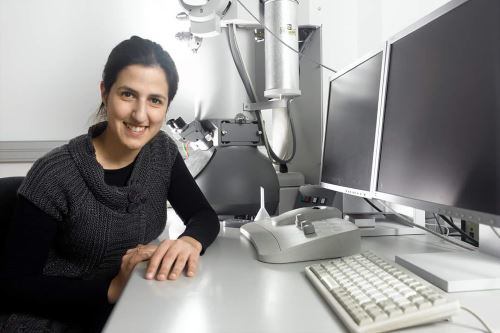
Naama has won the Best Poster Award at the International Society for Extracellular Vesicles Annual Meeting in Toronto.
Seminar by Shani Otmazgin
Seminar by Shani Otmazgin on
“Permeation of Macromolecules Through the Mucosa Layer”
in Lecture Hall no. 6
Special seminar by Dr. Eijiro Miyako
Special seminar by Dr. Eijiro Miyako on
“Bio-inspired, targeted and intelligent nanocarbon complexes for nanobiotechnology”
in Lecture hall no. 6
Seminar by Mr. Ido Ben Barak
Seminar by Mr. Ido Ben Barak on
in Lecture Hall no. 6
Seminar by David Waisman
Seminar by David Waisman on
“Development of a characterization method for surface energy of carbon fibers in a phenolic matrix”
in Lecture Hall no. 6
Seminar by Hila Aloush
Seminar by Hila Aloush on
“Heat-integration Synthesis for Real Process Streams using a Genetic Algorithm”
in Lecture Hall no. 6
Seminar by Hui Wang
Seminar by Hui Wang on
“Development of a Technical Route for Production of Hydrogenated Nitrile Butadiene Rubber Latex”
in Lecture Hall no. 6
Seminar by Dr. Zongsu Wei
Seminar by Dr. Zongsu Wei
on “Developing a hybrid iron oxyhydroxide agglomerates-ultrafiltration system for water purification ”
in Lecture Hall no. 6
Seminar by Nadav Sorek
Seminar by Nadav Sorek on
“From Israel to Texas and back: 4-years of a petroleum journey”
in Lecture Hall no. 6
Seminar by Amit Sitt
Seminar by Amit Sitt on “Microscale Transport Induced by Chemical Energy: From 2D Chemical Potential Gradients to Micro-Rockets”
in Lecture Hall no. 6
Seminar by Erez Tamir
Seminar by Erez Tamir on
“Viscoelastic properties prediction of fluoropolymers through multiscale modeling”
in lecture hall no. 6
Seminar by Irena Levin
Seminar by Irena Levin on
“Polymer adsorption on the surface of carbon nanotubes”
in lecture hall no. 6
Seminar by Dr. Matthew Suss
Seminar by Dr. Matthew Suss on
“Flow electrochemical systems for grid-scale energy storage and water desalination ”
in lecture hall no. 6
Seminar by Prof. Maria Luisa Di Vona
Seminar by Prof. Maria Luisa Di Vona on “Cations vs Anions in Solid State Polymer Electrolytes”
in Lecture Hall no. 6 at 13:30
Seminar by Dr. Jeremie Zaffran
Seminar by Dr. Jeremie Zaffran on Computational design of solid catalysts: An application of the Density Functional Theory (DFT)”
in Lecture Hall no. 6
Seminar by Dr. Esmaeil Narimissa
Seminar by Dr. Esmaeil Narimissa on ” A Novel Hierarchical Multi-Mode MSF Model for Long-Chain Branched and Linear Polymer Melts”
in Lecture Hall on. 6
Seminar by Dr. Zhen (Justin) Hu
Seminar by Dr. Zhen (Justin) Hu on “Cellulose Nanocrystals: From Nature to High Performance Tailored Materials”
in Lecture Hall no. 6
Seminar by Dr. Ehud Tsivion
Seminar by Dr. Ehud Tsivion on “Mechanisms of Gas Storage in Metal-Organic Frameworks ”
in lecture hall no. 6
Open House for Graduate students
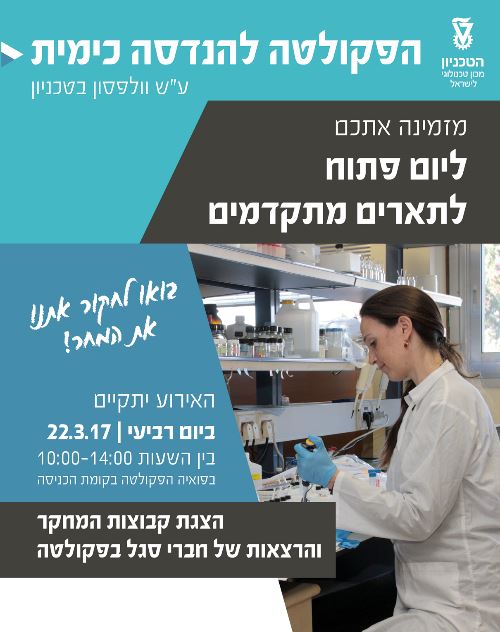
You are Invited to the Open house event on 22/03/17 10:00 – 14:00 Entrance Hall
Please register here http://assafzinger.wixsite.com/chemical-engineering
Seminar by Dana da Silva Curiel
Seminar by Dana Da Silva Curiel on The Effect of Lipid Composition on Liposome Uptake by Triple Negative Breast Cancer“
in Lecture Hall no. 6
Memorial lecture in honor of Prof. Eli Rubin by Dr. Tal Goldrath
Memorial lecture in honor of Prof. Eli Rubin by Dr. Tal Goldrath on “A combined sustainability Index for Energy Efficiency Measures in the Israeli Electricity Market ”
in Lecture Hall no.6
Special seminar by Prof. German Drazer
Special seminar by Prof. German Drazer on “Drop penetration method to characterize powder wetting properties ”
in Lecture Hall no. 6
Seminar by Avital Kigli
Seminar by Avital Kigli – Capillary Bridges Between Solids
at Conference room 334
Seminar by Gharra A’laa
Seminar by Gharra A’laa – Monitoring the Release of Volatile Organic Compounds from Single Lung Cancer Cells using Nano-sensors
in Lecture Hall no. 6
Special seminar by Prof Karin Jacobs
Special seminar by Prof. Karin Jacobs on “Revealing Contact Formation Characteristics of Bacteria: A Single Cell AFM Study in Combination with Monte Carlo Simulations”
in Lecture hall 6
Special seminar by Roey Cahany, LLC
Special seminar by Roey Cahany , LLC on ” Commercial and Legal Aspects of the Day by Day Operations of A Commercial Entity”
in Hall no. 6
Seminar by Dr. Alon Grinberg Dana
Seminar by Dr. Alon Grinberg Dana on ” Automated Reaction Mechanism Generation”
in Lecture Hall no. 6
Seminar by Dr. Xianhui Li on “Study of scale control and mechanism in desalination process “
Seminar by Dr. Xianhui Li on “Study of scale control and mechanism in desalination process ”
in Hall no.6
Seminar on “Interesting results of gas and vapour permeability with polymeric membranes ” by Dr. Zuzana Sedláková
Seminar by Dr. Zuzana Sedláková on
Interesting results of gas and vapour permeability with polymeric membranes “
in Lecture Hall no. 6
Seminar by Limor Pasternak
Seminar by Limor Pasternak on “Low-Temperature Direct Bonding of Silicon Nitride to Glass with no Adhesion Layer”
in Lecture Hall no. 6
Special seminar by Bar Mosevitzky
Special seminar by Bar Mosevitzky on “Combustion Kinetic of Nitrogen-Based Alternative Fuels”
in Hall no. 6
Special seminar by Yehuda Bitton
Special seminar by Yehuda Bitton on “Odor pattern of RPWs infected palm trees”
in Lecture Hall no. 6
Seminar by Mr. Gilad Alfassi
Seminar by Mr. Gilad Alfassi on “A Process for the Enzymatic Degradation of Cellulose”
in Hall no. 108
Seminar by Sofia Napso and Gilad Alfassi
Seminar by Mrs. Sofia Napso on “Cellulose-Coated Oil-in-Water Emulsions” in Hall no. 108
Seminars by Adi Azran-Gefen and Stas Levchenco
Seminar by Adi Azran-Gefen on “Preparation of Hydrolysable Biocompatible Polymersomes for Drug Delivery”
and seminar by Stas Levchenko on ” Preparation of Hydrolysable Biocompatible PolyDevelopment of novel multivalent ion-passing membranes”
in Lecture Hall no. 6
Seminar by Dr. Yair Kaufman
Seminar by Dr. Yair Kaufman on “A Simple-to-Apply Predictive Wetting Model for Textured (Rough/Patterned) Surfaces and the Role of Re-entrant Cavities“
in Lecture Hall no. 6
Special seminar by Prof. Edwin L. (Ned) Thomas
Special seminar by Prof. Edwin L. (Ned) Thomas on “High Velocity Projectile Impact of Materials”
in Auditorium 100, Biotechnology and Food Engineering
Special seminar by Dr J. Paul Chen
Special seminar by Dr. J. Paul Chen on ” Functionalized materials for treatment of arsenic, fluoride, copper, and lead contaminated water: material development, process evaluation and engineering, and studies of mechanisms/modeling ”
in lecture hall no. 6
Seminar by Shiran Shultz
Seminar by Shiran Shultz on “Development of RO membranes with improved Boron rejection by in situ modification with hydrophobic molecules”
in Lecture Hall no. 6
Seminar by Itamar Benisti
Seminar by Itamar Benisti on “The effect of faceting on the photocatalytic reduction of Cr+6 on BiOCl and on BiYWO6 “
in Lecture Hall no.6
Special seminar by Dr. Kapusta on “Energy: Now and Future”
Special seminar by Dr. Sergio Kapusta on“Energy: Now and Future”
in Lecture hall no. 6
Professor William (Zeev) Resnick Memorial Lecture by Prof. Yair Ein-Eli
Professor William (Zeev) Resnick Memorial Lecture by Prof. Yair Ein-El “Towards Higher, Thinner, Flexible and Loaded Li-ion Battery”
in Lecture Hall no. 6
Seminar by Mrs. Noga Steiner-Gelman
Seminar by Mrs. Noga Steiner-Gelman on “The Local and Global Molecular Orientation of Electrospun Nylon-6 Nanofibers”
in room no. 108
Special seminar by Dr. Michael Shoham Patrascu
Special seminar by Dr. Michael Shoham Patrascu on ” Dynamic Optimization of Continuous Manufacturing of Pharmaceuticals”
in lecture hall no. 6
Seminar by Elad Dor
Seminar by Elad Dor on “Separation process based on surface tension” in Lecture Hall no. 6
Seminar by Professor Emeritus Ephraim Kehat
Seminar by Professor Emeritus Ephraim Kehat on
“Israeli Natural Gas and the Gas Arrangement”
in lecture hall no. 6
Special seminar by Dr. Muhammad Y. Bashouti
Special seminar by Dr. M. Bashouti on “Growth and Surface Engineering of Nanowires for Optoelectronic Applications”
in Lecture Hall no. 6
Special Seminar by Prof. Uli Wiesner
Special Seminar by Prof. Uli Weisner “Polymer Hybrids”
in Lecture Hall no. 6
Seminar by Riki Klein and Avishai Karny
Seminar by Riki Klein on “Molecular modeling and investigating of thermo-mechanical properties of epoxy resin using molecular dynamics simulation”
Seminar by Avishi Karny on “Plant-derived nanoparticles for nurturing food crops
in Lecture Hall no. 6
Seminar by Dr. Gili Bisker
Seminar by Dr. Gili Bisker on “Single walled carbon nanotubes as optical sensors at the nanoscale”
in Lecture Hall no. 6
Seminar by Nisreen Shehada
Seminar by Nisreen Shehada on
Ultrasensitive Silicon Nanowire Field Effect Transistor for Real-World Applications
in the Dept. of Chemical Engineering, Lecture Hall no.6
Special seminar by Rafael Tadmor
Special seminar by Rafael Tadmor on “Adhesion at the Solid-Liquid Interface” in room 108.
Special seminar by Gal Tvil
Special seminar by Gal Tvil, Title: Catalytic Pollution Reduction for Nitrogen-based Fuels, in Lecture Hall no. 6.
The Laboratory of Nanomaterials Based-Devices
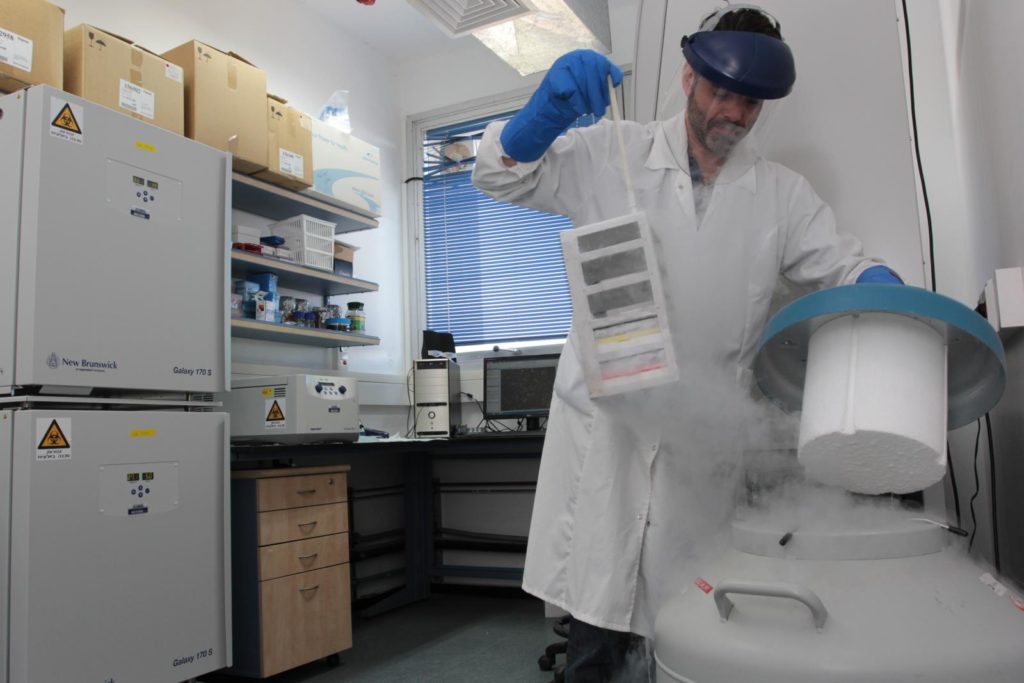
Highly multi-disciplinary in nature, LNBD research combines knowledge from diverse fields, among them microelectronics, nanotechnology, microfluidics, machine learning, biochemistry, medicine and genetics. Borrowing from these different disciplines, the laboratory develops novel solid-state and flexible devices/sensors, as well as electronic sensory nanoarrays for application in various areas.
Healthcare diagnosis, consumer electronics, robotics, sports and fitness, environmental monitoring and other fields all stand to benefit from work at the LNBD. The lab’s comprehensive approach comprises materials and device development, system integration, testing in lab and clinical/technological environments, practical application (disease diagnosis), widespread screening of high-risk factors and exploitation of project results/hardware.
NANOMATERIAL-BASED DEVICES
The LNBD develops and employs different nanomaterials, such as metal nanoparticles, poly aromatic hydrocarbons, silicon nanowires and carbon nanotubes, in a variety of electronic devices. Control over the size, shape, structure and morphology of such nanospecies enables the design of complex sensing functions that can address practical requirements from sensing platforms. In addition, both fabrication using bottom-up wet chemistry approaches, and the utilization of organic material coatings are simple. This enables the use of nanomaterials for different applications. The LNBD focuses on the following applications:
Nanomaterial-based sensors: R&D for use in artificially intelligent nanoarray and electronic skin applications.
Self-healing sensors: development of electronic sensors with engineered structures that enable self-repair and full functionality following mechanically destructive damage.
Printed electronics: development of new printing and self-assembly techniques that enable the optimal implementation of nanomaterials in electronic devices.
Volatile Biomarkers
The LNBD group conducts studies in different aspects of volatile biomarkers, focusing on breath and skin samples. Exhaled breath and skin headspace can be obtained non-invasively, are suitable for high compliance, and provide a matrix of relatively low complexity. In this effort, the lab is developing and characterizing artificially intelligent arrays of solid-state and flexible sensors for the detection and classification of various diseases in a non-invasive, fast and inexpensive manner, with low energy consumption. In addition to conducting R&D on sensing devices, lab researchers examine the developed devices via actual clinical trials on diverse diseases, malignant, neurodegenerative or infectious. These trials involve human volunteers together with in-vitro and in-vivo studies using different cell lines and animal models. In parallel, the lab assesses theoretical pathways and transport of different VOCs/chemicals from the internal, toward the external, side of the body.
The Laboratory for Heterogeneous catalysis and advanced materials
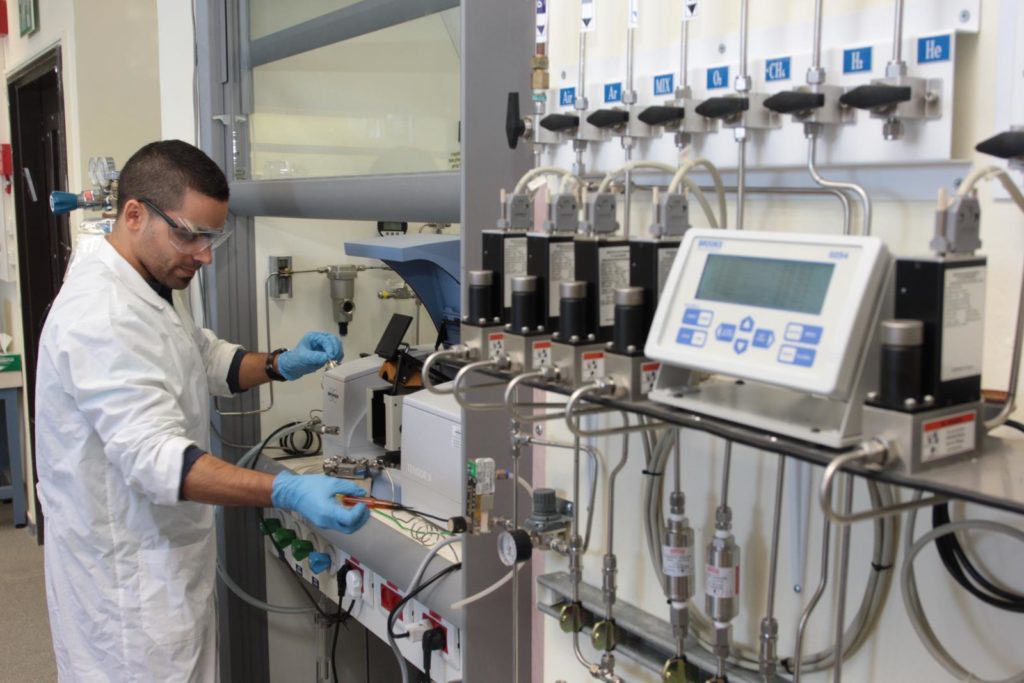
Our team is passionately working towards the development of new advanced heterogeneous catalysts and functional materials for energy and environmental applications. We try to look for new innovative design concepts by which our material exemplifies superior performance. This line of research is pursued by studying, understanding and manipulating reactivity at inorganic and organic surfaces. To make our new materials we use a combination of organic, inorganic and polymer chemistry techniques. These materials are then tested under reaction condition with a clear preference to running reactions under spectroscopic in-situ operando conditions.
Our group is always looking for inspiration in natural systems (i.e. enzymes), from which we can adopt mechanisms and concepts and incorporate them into our materials design.
Seminar by Assist. Prof. Charles E. Diesendruck
Seminar by Assist. Prof. Charles E. Diesendruck – New Accounts of Polymer Mechanochemistry
Dept. of Chemical Engineering, Hall no. 6 at 13:30
Seminar Alexander B. Tesler
Seminar By Dr. Alexander B. Tesler – Slippery surfaces or how simple modification of surface can change material properties and applications
Dept. of Chemical Engineering, Lecture Hall 6, at 13:30
Seminar Raphael Levy
Seminar By Dr. Raphaël Lévy – On gold nanoparticles in biology: hype, hopes and controversies
Dept. of Chemical Engineering, Conference room 108 at 11:30
Seminar Noa Eizckoviz
Sepecial Seminar by Noa Eizckoviz – Model and Characterization of Ablative Composite Material Based on Cork and Silicone Rubber
Dept. of Chemical Engineering, Conference room at 11:30
Seminar Reshef Gal Oz
Seminar By Reshef Gal Oz – Charge-Transfer Electrospun Sensors
Location: Resnick Conference Room, Chemical Engineering Buildin 11:00
Seminar Professor Eli Rubin Memorial Lecture
Lecture by Prof. Avi Marmur – Adventures of Fluids meeting a Solid
Location: Dept. of Chemical Engineering, Hall no. 6 at 13:30
Seminar by Hadas Hecht
Outstanding employees of the year
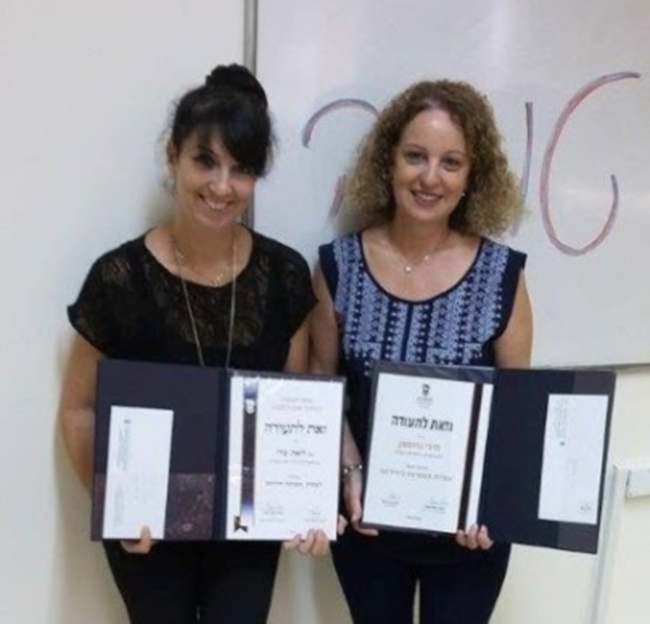
Congratulations to the outstanding employees of the year – Miri Grossman, Liat Zuri and Dr. Rfail Khalfin.
New Academic year opening
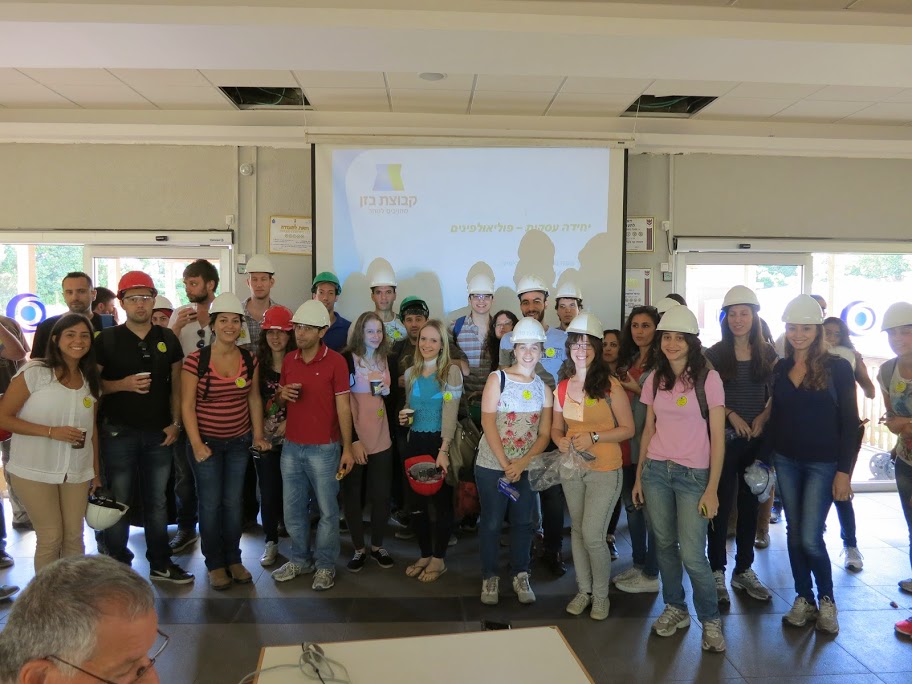
Best wishes to all the students for the opening of the new academic year from all the faculty staff.
SAXS X- ray Scattering Lab.
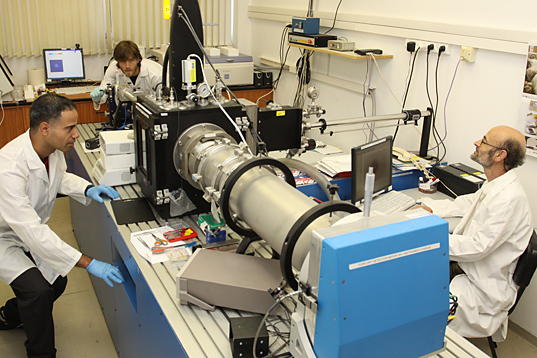
Small-angle x-ray scattering (SAXS) is a well-established technique for studying structural features of colloidal size (1-100 nm). When x-rays are transmitted through a sample, the interaction of radiation with matter results, among others, in scattering events. The waves scattered by all electrons in the sample at a given angle interfere with each other to produce a point in an interference pattern. Appropriate analysis of SAXS data supplies wealth of structural information, such as size, shape, internal structure and mass of particles, particle size distribution in polydispersed systems, and fractal dimensions in disordered systems. The small-angle X-ray scattering facility at the Technion has been set up in 1988. It has been used continuously by researchers, graduate and undergraduate students of our department as well as from other Departments in Israel, U.S., Europe and Japan. Several Israeli Industries have had projects in association with our facility. The breadth of the field, which can be approached by this technique, is demonstrated by some of our research topics. One major area of interest is polymer solutions and gels.
We have studied inhomogeneities in polymer gels, inter-polymer complexes and thermo-reversible gelation on polymer solutions. We are investigating various Colloids and surfactants systems, for example the effect of interaction with polymers on the size and shape of surfactant micelles in water, evaluation of micellar dimensions of novel surfactants, and the inner structure of multicomponent polymeric latices as a function of composition and method of preparation. In the area of Ceramics and Inorganic Solids we explored the relation between processing parameters and the evolution of microstructure in novel procedures for preparation of alumina gels.
We have studied the effect of ion-irradiation on amorphous SiO2 as a model for the ageing of glassy materials used in nuclear waste disposal, and the structure of zeolite precursors. Evaluation of the microstructure in Solid Polymer Blends, Fibers and Composites is another important aspect of our work. We are determining the microstructure of semi-crystalline polymer fibers under the combined effect of stress, temperature and solvent activity, the effect of reactive compatibilizers on the interface characteristics in polypropylene/liquid-crystal polymer blends and characterizing the size and amount of voids in fiber-reinforced composite materials.
Laboratory for Membranes and Water Technology
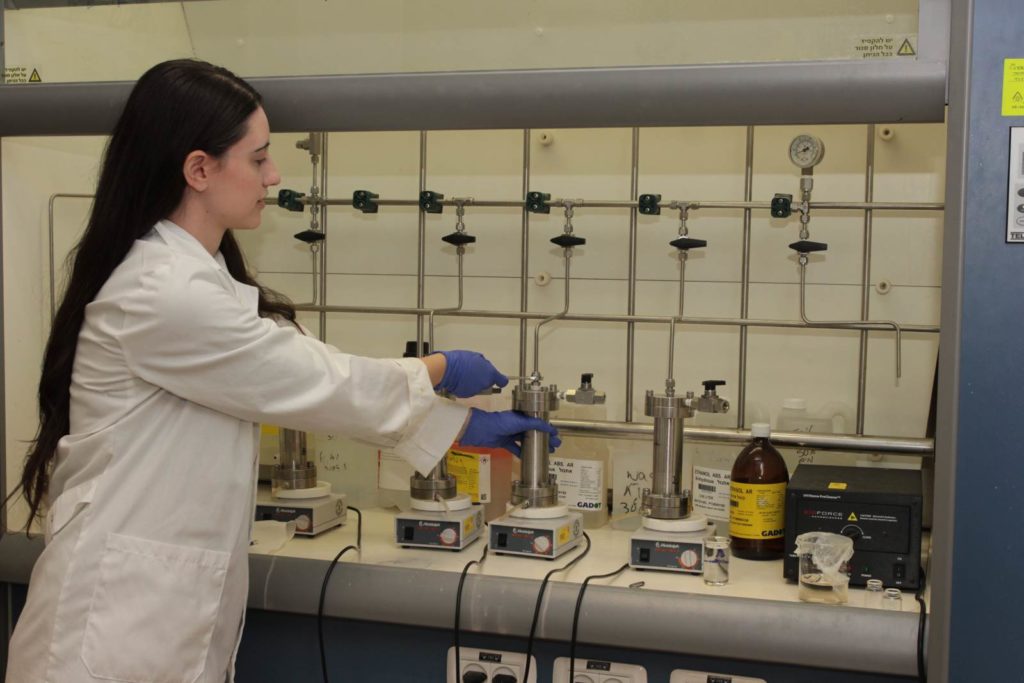
The Laboratory focuses on fundamentals, development and applications of separation membranes, mainly, polymeric membranes for water and fuel cells, including mechanisms, modeling, advanced characterization, surface phenomena, polymeric materials, interactions between membranes and bacteria and particles, development of novel membranes and membrane modification for improved performance. Equipment includes AFM, FTIR, HPLC, QCM-D, Zet-potential analyzer for surfaces (SurPASS), equipment for microbiological work including a multi-purpose fluorescent microscope, electrochemical equipment etc.
Surface and Colloids Laboratory
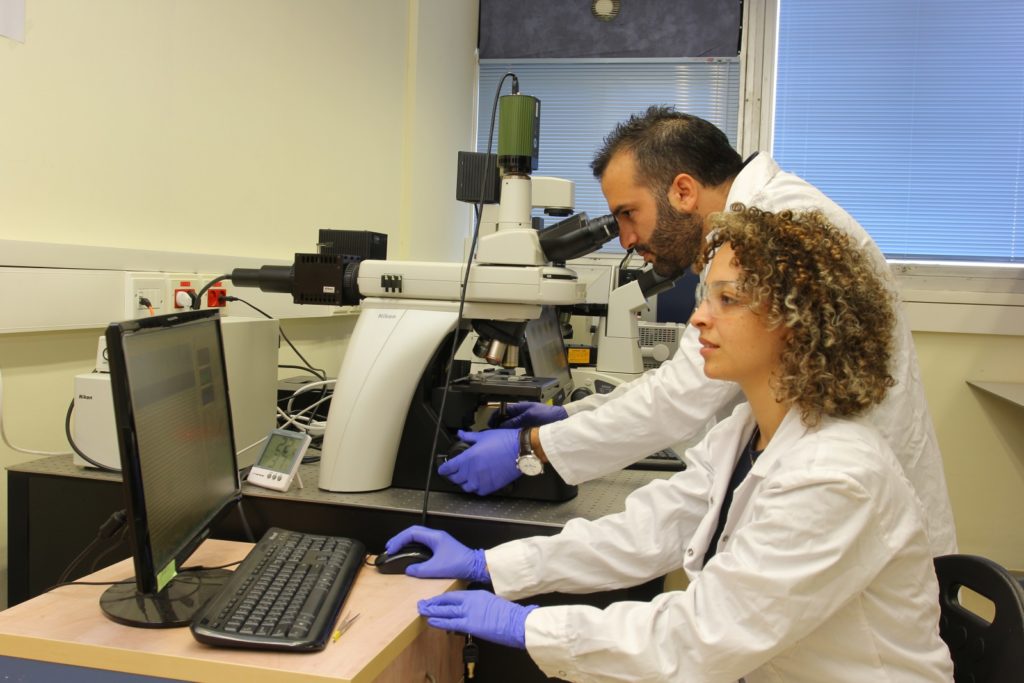
Our research group is composed of both experimentalists and theoreticians. In our experiments we employ microfluidic and lab-on-a-chip platforms to generate, observe, and measure different surface phenomena, which are of value to our projects. In our theoretical work we combine molecular forces, transport phenomena, and continuum density functional theory to study the structure and dynamics of complex liquids. We explain experimental results in our lab and in other labs. In particular, we are interested in several topics in the field of colloids (nano- and micro-particles) and surface phenomena. We work on passive and active oil/water phase separation, smart coatings of solids and liquids, and ion structures in the nanometer-thick electrical double layer in the presence of acoustic waves. Below we give a more detailed account of each project.
Students and postdoctoral fellows who are interested in colloids and surface science are welcome to contact us.
Passive and active oil/water phase separation
Small scale, efficient, and affordable unit operations for water recovery are necessary for local pre-treatment of contaminated water and in particular for separating oily additives from water in domestic housing and industry. This is especially of value in small and remote communities, where large scale water treatment facilities are not available and where the reclaimed water could be locally used for agriculture or domestic benefits. We study the passive and active separation of oil, water, and surfactant mixtures in the presence of a specially designed surface chemistry on solid surfaces, and in the presence of high frequency acoustics.
Smart Coatings
Several startup companies produce smart coatings and electronic circuits by coating surfaces with mixtures of conductive nanoparticles in volatile carrier liquids. Many times, they employ particle self-assembly strategies. Molecular forces in such coating systems determine the coating process alongside the flow and evaporation of the carrier liquid. We study the connection between molecular forces, coating flows, and the self-assembly of nanoparticles therein to improve the spatial resolution of coatings and nanoparticle deposits. In addition, we study new approaches for the active control of the coating process.
The electrical double layer in the presence of acoustic waves
Electrical double layers (EDLs) of ions are thick layers of ions which appear next to charged surfaces in water and traverse into the liquid for several nanometers. This is an important mechanism in chemistry and biology. It is responsible for the stability of complex liquids such as suspensions and emulsions, for the structure of large molecules such as proteins, and for energy storage systems such as super-capacitors. We study the electrokinetic contribution of MHz-frequency acoustic waves to the structure of EDLs. By generating acoustic waves near charged solid surfaces, we rearrange the structure of ions in the EDLs and change their contribution to nearby molecules, particles, and surfaces.
The Lab for Targeted Drug Delivery and Personalized Medicine
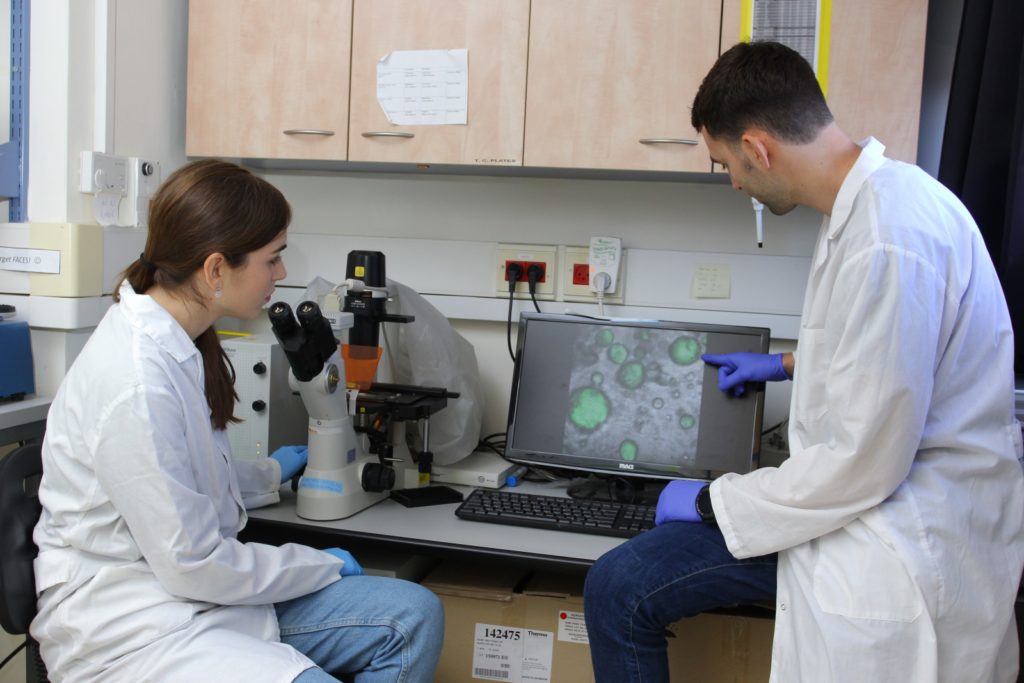
Our team is composed of dedicated students and researchers aimed at changing the way we treat diseases. Specifically, we focus on the way nanotechnology can be used to combat metastatic cancer.
visit our website at: https://www.schroederlab.com/
Photocatalysis and thin Film Lab
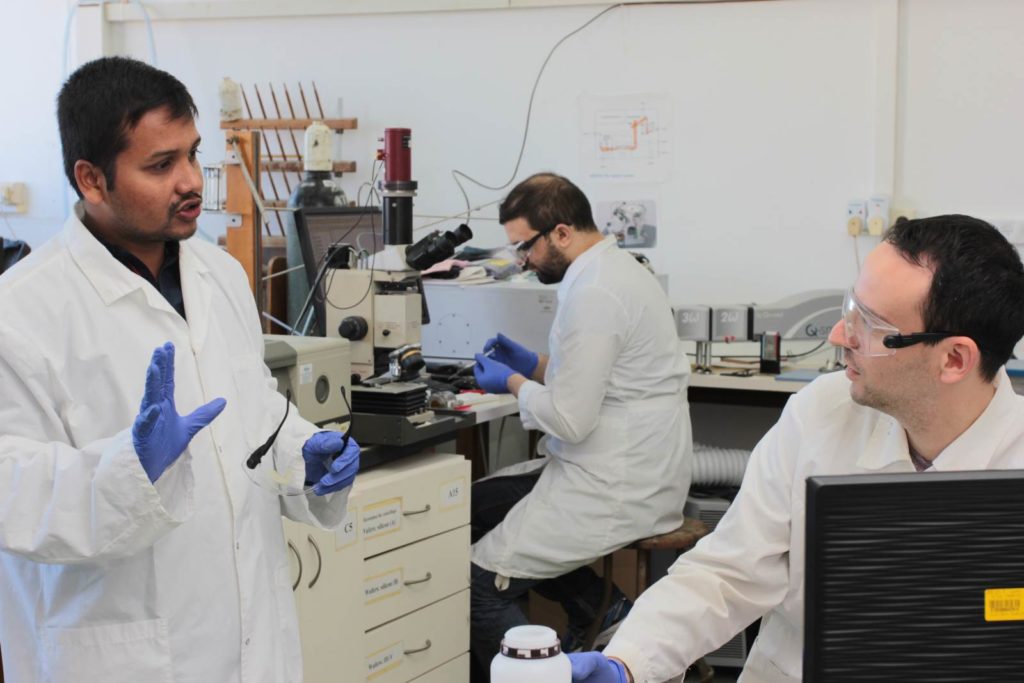
The Laboratory concentrates in the development of materials and methods of photocatalytic treatment of air, water and surfaces. In addition provides analytical services for external users wishing to use it’s equipment: AFM, FTIR, GCMS, HPLC.
for more details: http://pygroup.net.technion.ac.il/lab-facilities/
Rabin Desalination Laboratory
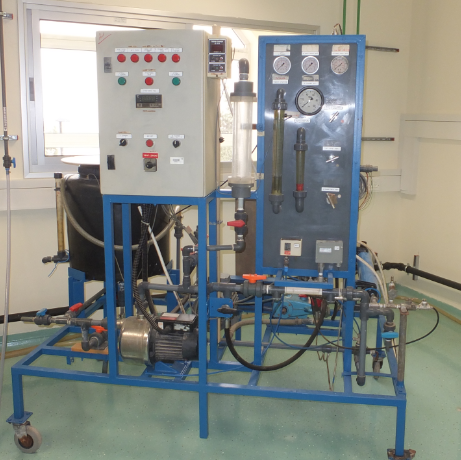
separation processes, membrane processes, Desalination, water purification, Nano-catalysis and adsorption, fouling prevention, models for membranes mass transfer.
The Technion Center for Electron Microscopy of Soft Matter
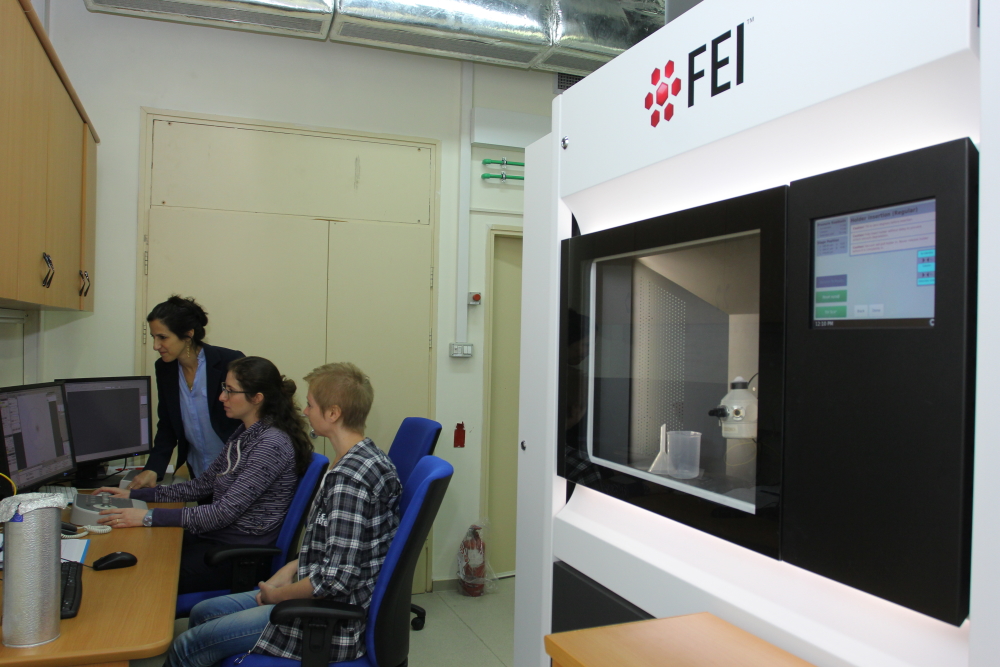
The Technion Center for Electron Microscopy of Soft Matter includes two TEMs and a high-resolution SEM.
All microscopes are cryo-dedicated, for cryo-TEM and cryo-SEM experiments, and are also available for room temperature work.
The newly arrived Talos, is a FEG equipped high resolution TEM and includes a Falcon direct detector for high resolution imaging at low dose mode and a Volta phase plates for contrast enhancement.
In addition, the Talos is also available for STEM imaging and for 3D characterization using TEM and STEM tomography. Advanced cryo-specimen preparation equipment is available, including equipment for freeze-fracture replication (FFR) and cryo-microtomy.
Laser Light Scattering
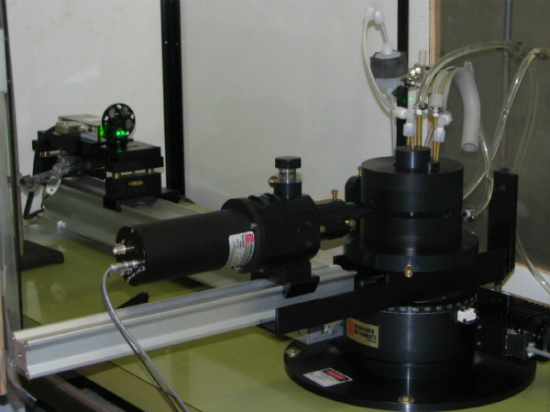
Light scattering is a non-invasive technique for characterizing macromolecules and a wide range of particles in solution. In contrast to most methods for characterization, it does not require outside calibration standards therefore it is an absolute technique.
Light scattering experiments can be classified as Static Light Scattering (SLS) or Dynamic Light Scattering (DLS). Both techniques involve the measurement of the intensity of the light scattered from the solution. Light scattering occurs due to the local heterogeneity in the polarizability, ƒׁ, or in the refractive index, n, over the scattering volume. These fluctuations may arise from the fluctuations in temperature, pressure or in concentration.
In Static Light Scattering (SLS), also know as “classical” or “Rayleigh” scattering, the intensity of the scattered light is measured as a function of angle. For the case of macromolecules such as proteins of polymers, this measurement can yield the molar mass, rms radius, and second virial coefficient (A2). For certain classes of particles, static light scattering can yield the size, shape, and structure.
In Dynamic Light Scattering (DLS), also called Photon Correlation (PCS) or Quasi-Elastic Light Scattering Spectroscopy (QELS), one measures the real-time fluctuations in the intensity of scattered light. This data is used for the determination of the mutual diffusion coefficient of the scattering particles. In dilute solutions, this diffusion coefficient can be further used to estimate the size of particles, and, in the case of macromolecules, the molecular weight and the conformational state of the polymer chains.
Our Department has the Bl-200SM Research Goniometer System (Brookhaven Instruments, Inc.) that enables both SLS and DLS experiments. Our instrument is equipped with a Compass 415M solid state laser generating light of 532 nm wavelength (green). We also own a BI-DNDC Differential Refractometer (Brookhaven Instruments, Inc.) for the determination of the refractive index increment
פיזור קרני לייזר
פיזור קרני לייזרפיזור קרני לייזרפיזור קרני לייזרפיזור קרני לייזרפיזור קרני לייזרפיזור קרני לייזרפיזור קרני לייזרפיזור קרני לייזרפיזור קרני לייזרפיזור קרני לייזרפיזור קרני לייזרפיזור קרני לייזר
פיזור קרני X
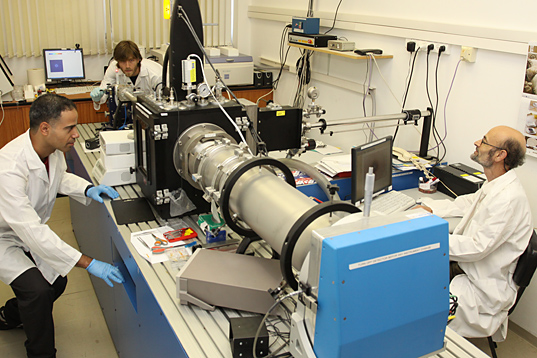
פיזור קרני X בזוויות קטנות (SAXS) הינה טכניקה ידועה ללימוד מאפיינים מבניים של מימדים קולואידיים וננו-מטריים (1-100 ננו-מטר). ניתוח הולם של המידע מ-SAXS יכול לספק מידע מבני עשיר אודות אובייקטים בסקאלת הננו, ביולוגיים או סינטטיים, כדוגמת גודל, צורה, מבנה פנימי ומסת חלקיקים, דרגת אגלומרציה או מבני על, פילוג גדלי חלקיקים במערכות פולידיספרסיות ומימדים פרקטליים במערכות לא מסודרות. טכניקה זו ניתנת ליישום בתחומי מחקר שונים: תמיסות פולימר וג’לים, ביו-פולימר וחומרים ביו-אקטיביים בתמיסה, מערכות של חומרים פעילי שטח וקולואידים, דיספרסיות נוזליות של ננו-חלקיקים (אבקה או מרוכב), קרמיקה, זכוכיות סול-ג’ל, זיאוליטים, פולימרים גבישיים למחצה, תערובות פולימריות, בלוק קופולימרים, סיבי פולימר (כולל ננו-סיבים), חומרים מרוכבים (וננו-מרוכבים).
SEM רזולוציה גבוהה
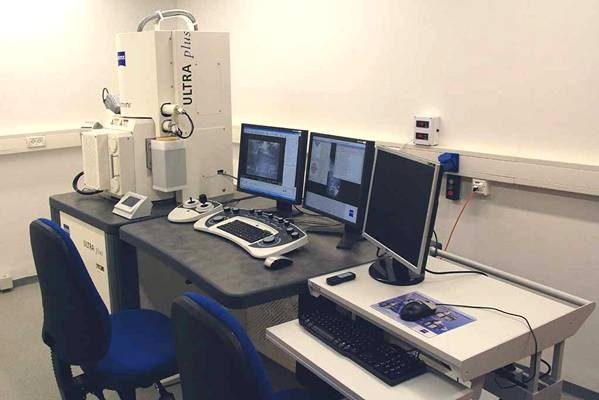
SEM רזולוציה גבוההSEM רזולוציה גבוההSEM רזולוציה גבוההSEM רזולוציה גבוההSEM רזולוציה גבוההSEM רזולוציה גבוההSEM רזולוציה גבוההSEM רזולוציה גבוההSEM רזולוציה גבוההSEM רזולוציה גבוההSEM רזולוציה גבוההSEM רזולוציה גבוההSEM רזולוציה גבוההSEM רזולוציה גבוההSEM רזולוציה גבוההSEM רזולוציה גבוההSEM רזולוציה גבוההSEM רזולוציה גבוההSEM רזולוציה גבוההSEM רזולוציה גבוההSEM רזולוציה גבוהה

